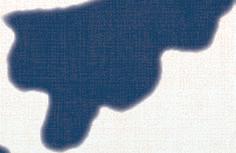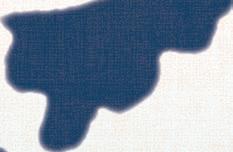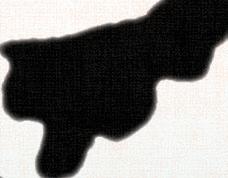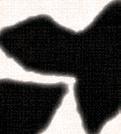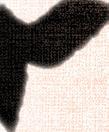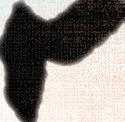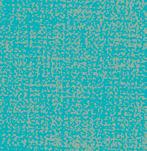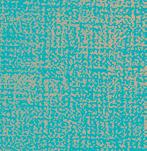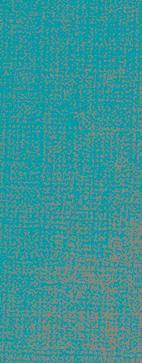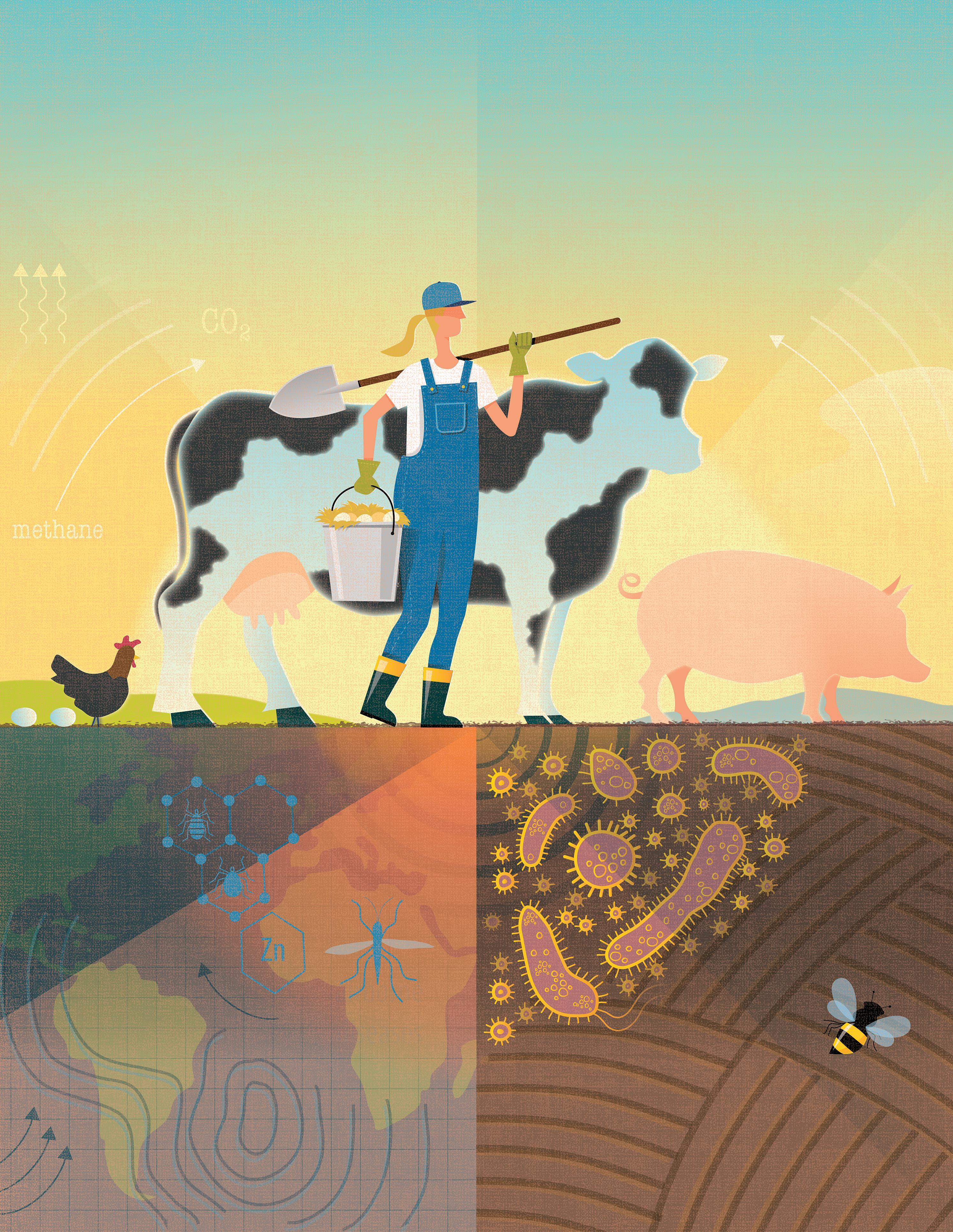

THE AGRICULTURE
THE MAGAZINE OF PENN VET

The Gambia Goat Dairy is a research farm near The Gambia’s Atlantic coast. Founded in 2016 by Brianna Parsons, V’18, and Corey Spies, V’22, while in veterinary school, the farm started with the goal of providing and processing goat dairy products for the region. Its scope has since expanded to serving as a regional hub for agricultural education. It’s also a training ground for Penn Vet students to use their veterinary skills for social good.
Dear Penn Vet Community,
We all want to make the world a better place for future generations, for example, a world with economic equality, greater food security, and ecological resilience. For this reason, in 2015, the United Nations adopted Sustainable Development Goals (UN SDGs) to provide a blueprint for all economic sectors to contribute to a healthier planet.
Agriculture encompasses 38% of the world’s land surface, so it is critical to the attainment of the UN’s SDGs. The agriculture revolution yielded an abundance of food: currently 50% more food than necessary to feed the earth’s 8 billion people. So, what is the problem?
First, this food is largely in the form of grains. It is neither equitably distributed, nor sufficiently nutrient (protein) dense to address global malnutrition; second, industrial cropland agriculture involves repeated tillage and chemical applications, contributing to poor soil health.
AGRICULTURE ENCOMPASSES 38% OF THE WORLD’S LAND SURFACE, SO IT IS CRITICAL TO THE ATTAINMENT OF THE UNITED NATION'S SUSTAINABLE DEVELOPMENT GOALS.
DEAN ANDREW HOFFMAN
On the other hand, two-thirds of agriculture’s footprint is grasslands and pastures used for grazing. Contrary to the common narrative, studies have shown that cattle grazing, if effectively managed, can improve soil health and biodiversity. Agriculture is a doubleedged sword: one edge is the problem, the other the solution. Thus, the agriculture sector needs to provide benefits for everyone, WITHOUT harming our planet.
In 2020 we began to explore this tension by way of our Farm of the Future Symposium, a seven-part series delivered in partnership with Penn’s Stuart Weitzman School of Design. The symposium highlighted the notion that there is no single road map toward sustainability, but rather, a mosaic of evolving and inventive practices. A year later, in 2021, we reconsidered the mission of the Center for Animal Health and Productivity. We wanted to build on Penn Vet’s solid foundation of veterinary scientists and clinicians and integrate other across-Penn faculty. In other words, from inside – and outside – “the agriculture silo.”
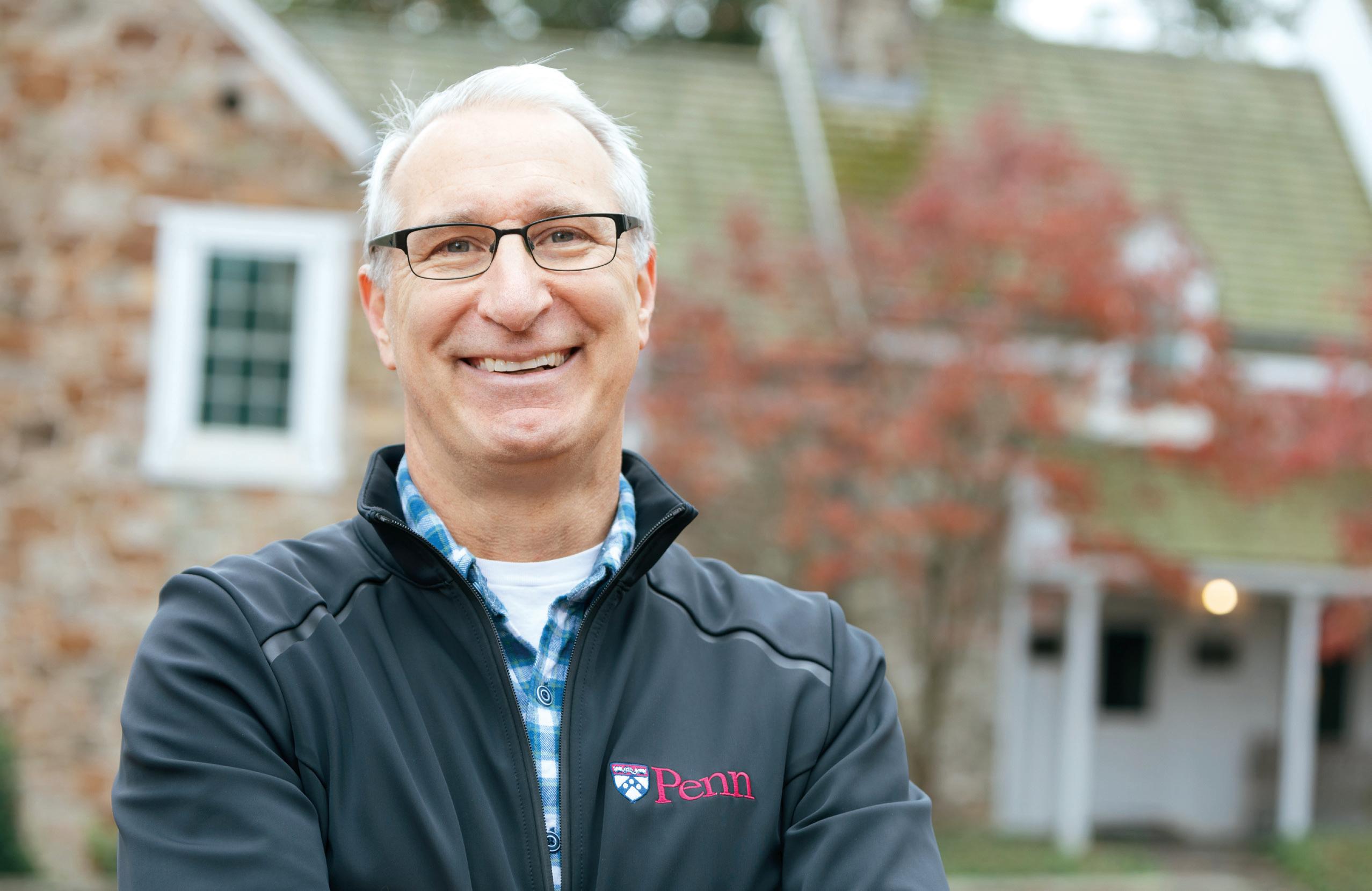
The result is our new Center for Stewardship Agriculture and Food Security (CSAFS). The goal of the CSAFS is to promote interdisciplinary research, education, outreach, and public engagement on the future of sustainable agriculture, finding unique and applicable solutions that enhance food production while minimizing environmental impacts. We envision a future in which faculty specializing in soil and plant biology, hydrology, climate science, and digital agriculture will be working alongside our veterinarians and allied scientists. From my view, the CSAFS will undoubtedly bolster Penn Vet’s role in sustainable agriculture.
This Bellwether features the launch of our CSAFS, an effort led by Tom Parsons, VMD, PhD, Marie A. Moore Professor of Animal Welfare and Ethics. We hope the issue inspires you to think about Penn Vet as a leading institution in sustainable agriculture, driven by the voice of veterinarians. And through this effort, we will make the world a better, more secure, and sustainable place.
Andrew M. Hoffman, DVM, DVSc, DACVIM
The Gilbert S. Kahn Dean of Veterinary Medicine
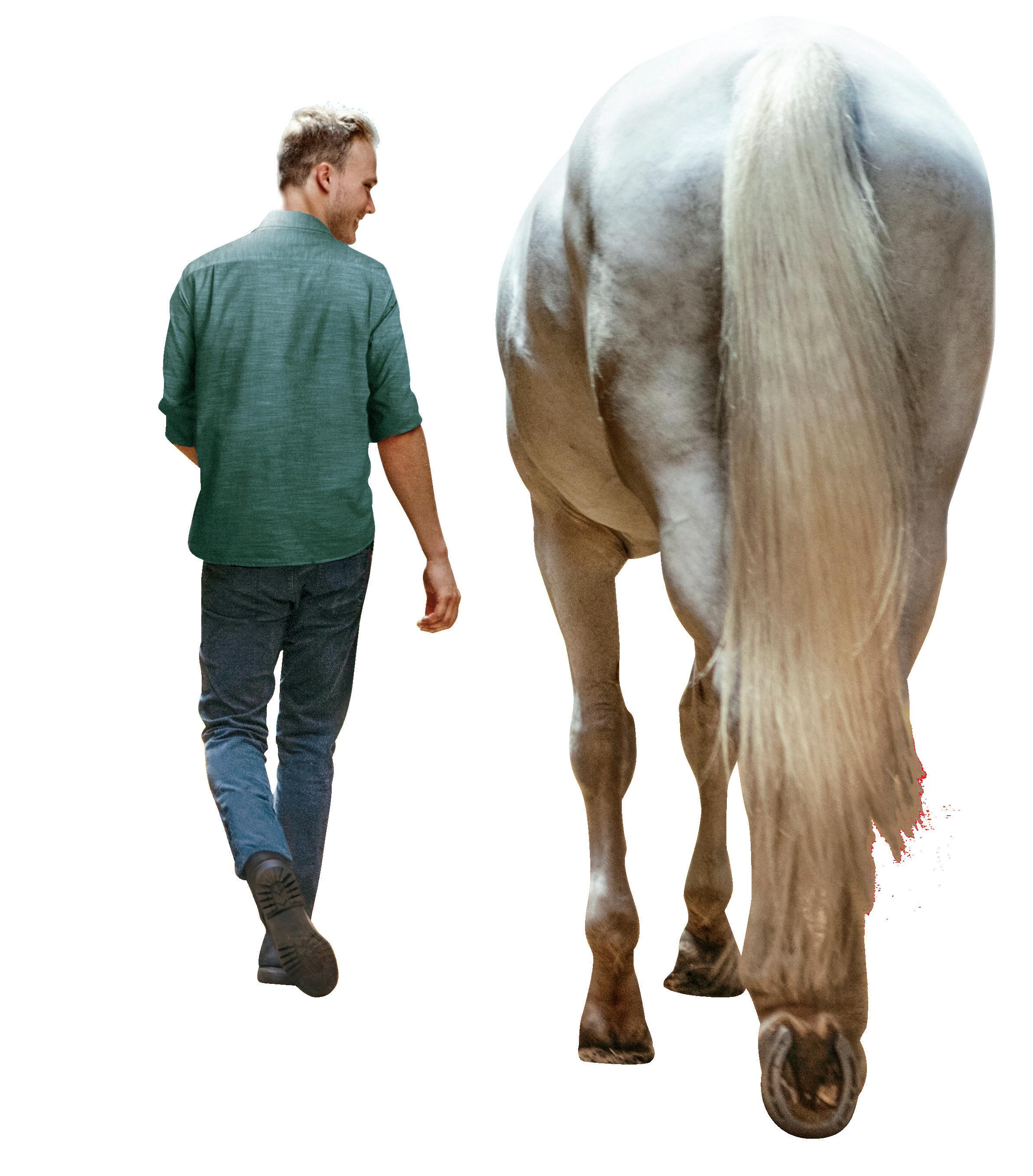
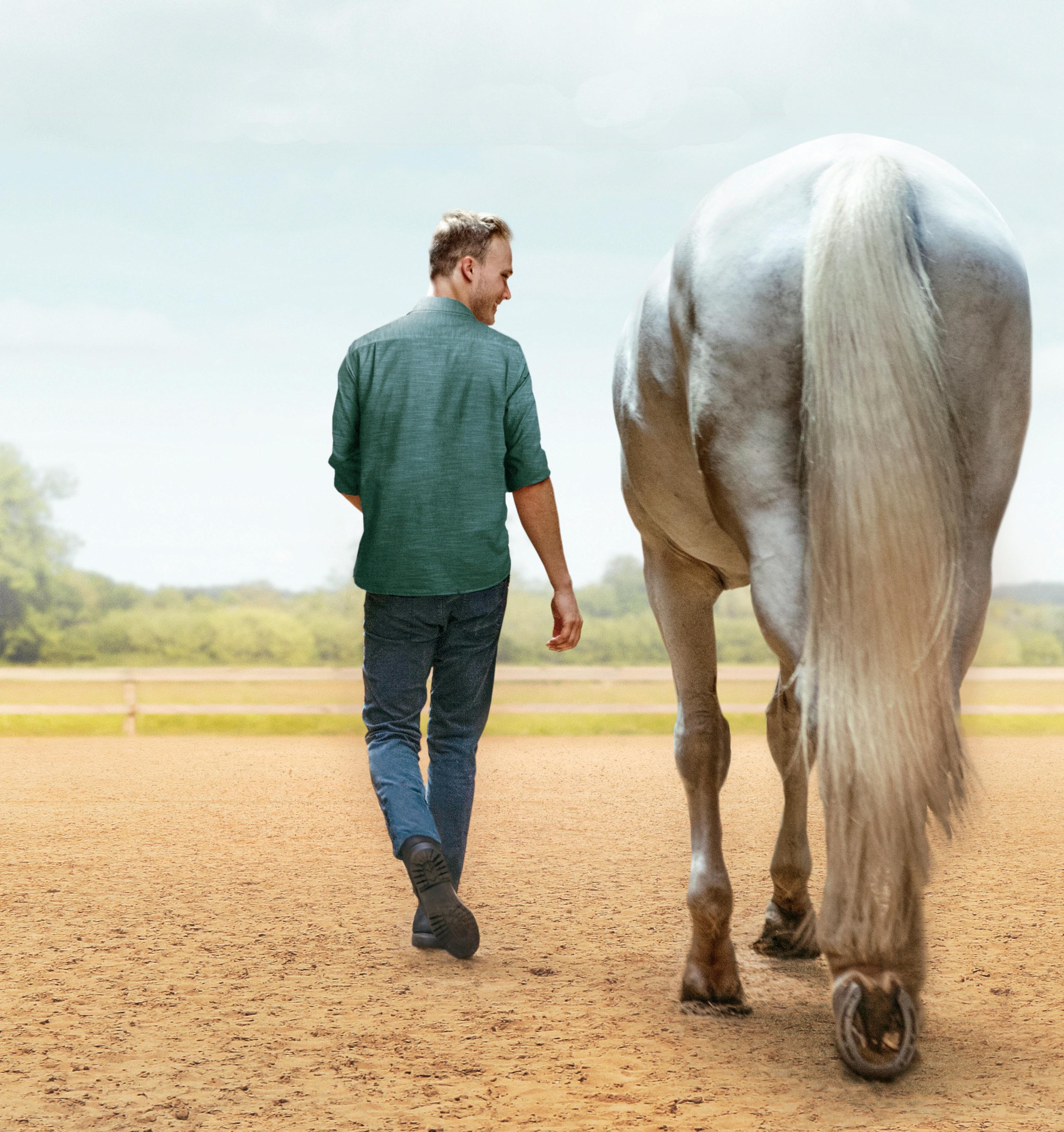
New Bolton Center’s Field Service veterinarians take pride in bringing the expertise and technology of the region’s most accomplished and sophisticated large animal hospital directly to you. And, thanks to their efforts, many of our greatest successes have never set hoof on our campus.
To make an appointment, call 610-444-5800 or visit us online at vet.upenn.edu/newboltoncenter
CONTRIBUTORS

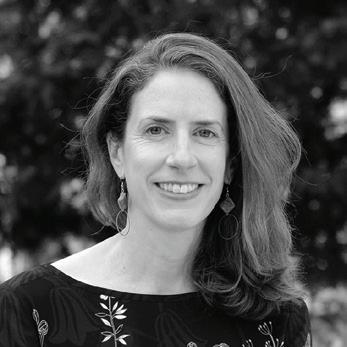
From her home base in Philadelphia, Sacha Adorno writes about people, institutions, and businesses working to make the planet a better place for all life on it.
A senior science news officer in Penn’s Office of University Communications, Katherine Unger Baillie has been writing stories highlighting the incredible scientific insights of Penn Vet researchers for more than a decade.
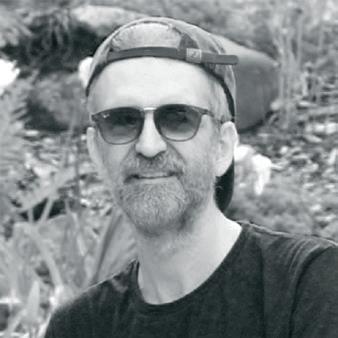
Illustrator Rocco Baviera , the son of Italian immigrants, has been creating timeless illustrations that span a generation. Strongly rooted in tradition, drawing inspiration from the natural world, he thoughtfully captures the essence of his subjects with an organic, earthy color palette and modern aesthetic.

Philadelphia freelance professional photographer
Lisa Godfrey – pictured with her Chihuahua, Mr. Pink – has been combining her passion for visual art and lifelong love of animals for more than 25 years, specializing in lifestyle photography on location for editorial, advertising, and corporate clients.
EDITORIAL
Editor
Martin J. Hackett
Contributing Editor and Writer
Sacha Adorno
Writers at Large
Katherine Unger Baillie, Martin J. Hackett
Class Notes Editor
Shannon Groves
Faculty | Staff Notes Editor and Production Manager
John Donges
DESIGN
Associate Creative Director
Hannah Kleckner Hall
Designer
Anne Marie Kane, Imogen Design
Illustrator
Rocco Baviera
Photographers at Large
John Donges, Avery Fry, Eric Sucar, Loren Volpe
Contributing Photographer
Lisa Godfrey
ADMINISTRATION
Gilbert S. Kahn Dean of Veterinary Medicine
Andrew M. Hoffman, DVM, DVSc, DACVIM
Associate Dean of Institutional Advancement
Hyemi Sevening
Chief Communications Officer
Martin J. Hackett
Director of Alumni Relations
Shannon Groves
Director of Annual Giving
Mary Berger
Directors of Development
Margaret Leardi (New Bolton Center)
Helen Radenkovic (Philadelphia)
CHANGE OF ADDRESS
Sarah Trout
Office of Institutional Advancement
School of Veterinary Medicine
University of Pennsylvania 3800 Spruce Street Suite 151 E, Philadelphia, PA 19104 strout@vet.upenn.edu 215-746-7460
None of these articles is to be reproduced in any form without the permission of the School. ©2022 by the Trustees of the University of Pennsylvania. The University of Pennsylvania values diversity and seeks talented students, faculty, and staff from diverse backgrounds. The University of Pennsylvania does not discriminate on the basis of race, sex, sexual orientation, gender identity, religion, color, national or ethnic origin, age, disability, or status as a Vietnam Era Veteran or disabled veteran in the administration of educational policies, programs or activities; admissions policies; scholarship and loan awards; athletic, or other University administered programs or employment. Questions or complaints regarding this policy should be directed to: Executive Director, Office of Affirmative Action and Equal Opportunity Programs, Sansom Place East, 3600 Chestnut Street, Suite 228, Philadelphia, PA 19104-6106 or by phone at 215-898-6993 (Voice) or 215-898-7803 (TDD).
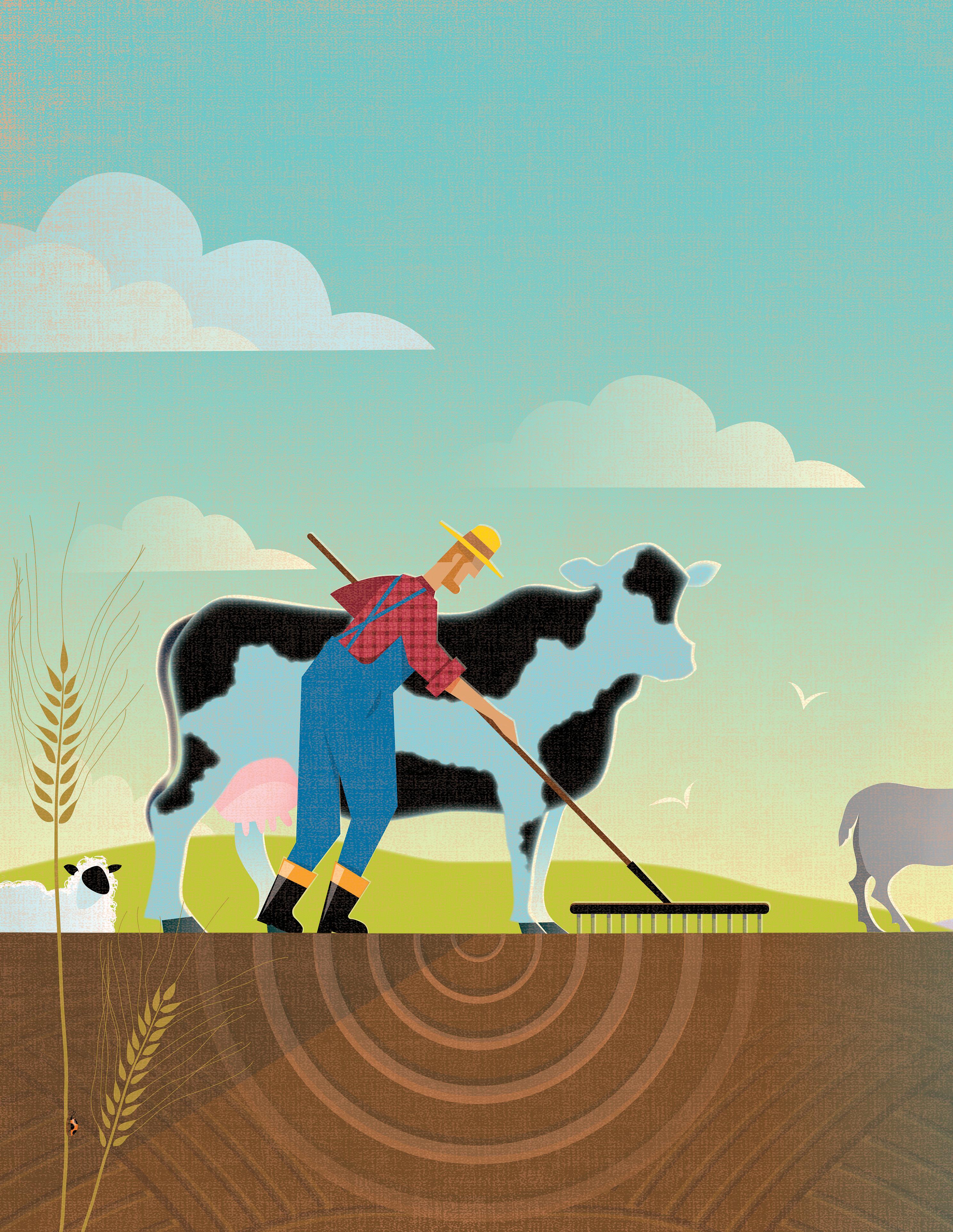
Generational MEETING A
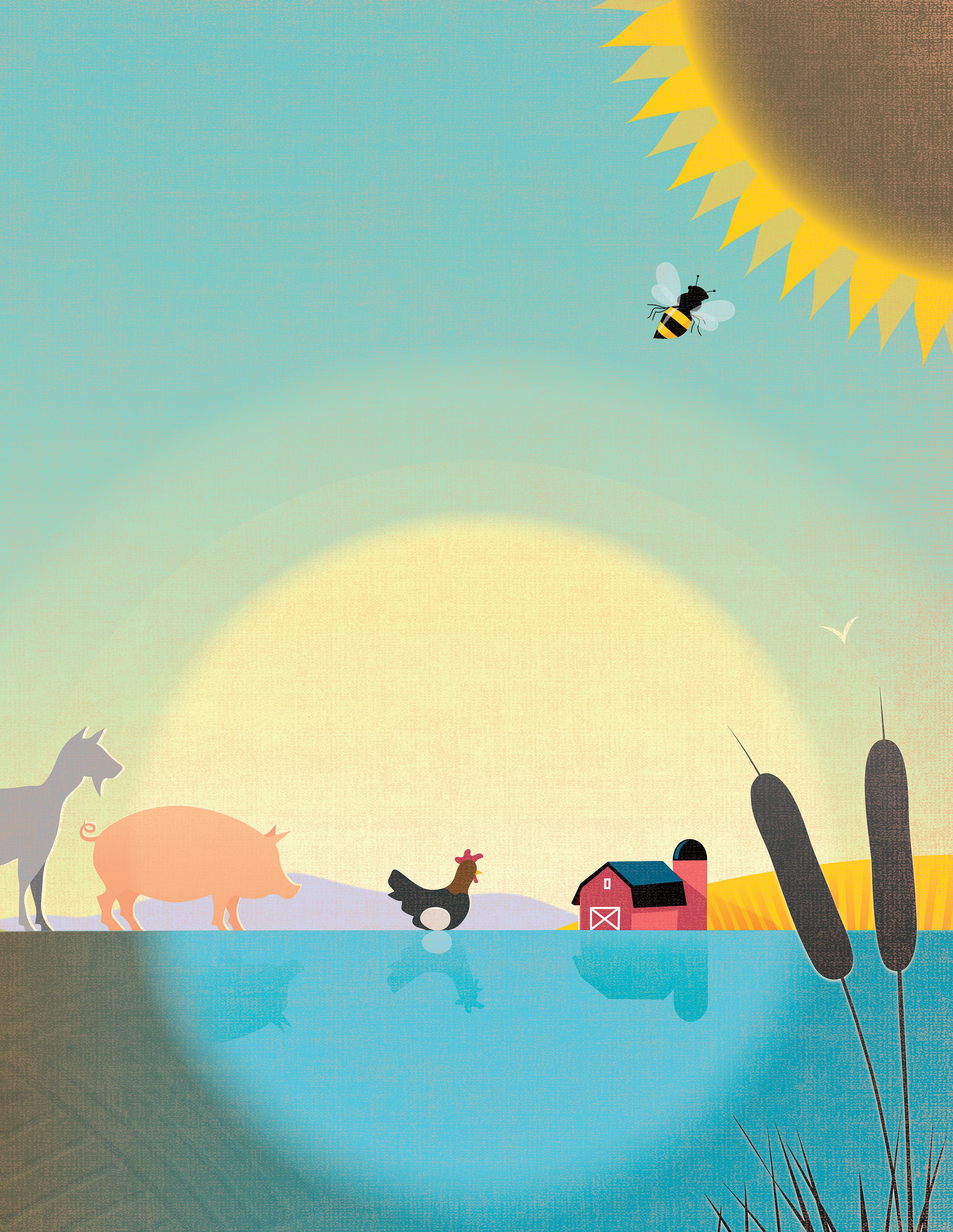
Challenge
Feeding the world and doing it sustainably
BY KATHERINE UNGER BAILLIE
Baviera
WITH THE LAUNCH OF THE CENTER FOR STEWARDSHIP AGRICULTURE AND FOOD SECURITY, THE SCHOOL OF VETERINARY MEDICINE IS WORKING “TO MAKE ANIMAL AGRICULTURE PART OF A SOLUTION TO A MORE RESILIENT, SUSTAINABLE, AND EQUITABLE FUTURE.”
Illustrations by Rocco
Productive
farms and a healthy environment should not be mutually exclusive ends.
Yet sometimes they seem that way.
On the one hand, the need for more food production is unrelenting. The human population is expected to approach 10 billion by 2050, and malnutrition is rampant, particularly in the Global South.
“There's this huge discrepancy around the world when it comes to caloric intake and malnutrition and studies show that one of the best ways to reverse those unwanted conditions is providing access to animal protein,” said Dr. Thomas D. Parsons, Marie A. Moore Professor of Animal Welfare and Ethics in the Department of Clinical Studies at New Bolton Center and director of Penn Vet’s Swine Teaching and Research Center. “That’s the backdrop against which we are working.”
On the other hand, we know that livestock agriculture is a contributor to greenhouse gas emissions, responsible for 11.2% of U.S. emissions and 10-12% of global emissions, according to the U.S. Environmental Protection Agency and the Intergovernmental Panel on Climate Change, respectively. These emissions arise mainly from fertilizer application, manure management, and direct release from cattle. Further, land conversions for agriculture promote deforestation, a major contributor to climate change and biodiversity loss.
At Penn Vet, the newly launched Center for Stewardship Agriculture and Food Security (CSAFS) is taking on what Parsons, the CSAFS’s director, calls “a generational challenge.”
“There is a tension between two pressures that agriculture faces,” he said. “One is to be more environmentally friendly. Two is to go and feed
the world. Our center will be one of the few that is focusing on both of these directives at the same time.”
A working vision statement for the center, Parsons said, is “to make animal agriculture part of the solution to a more resilient, sustainable, and equitable future.” The center views stewardship agriculture as a vehicle to promote the responsible use of resources that are entrusted to farmers to make food, including air, water, land, animals, and people.
While attending to animal health, productivity, and welfare — longtime strengths of Penn Vet—the new center will support and forge connections with a robust research community focused on the relationships between animal agriculture and ecosystem and public health, soil science, and climate change adaptation and mitigation.
“If you look at the United Nations Sustainable Development Goals,” said Andrew Hoffman, The Gilbert S. Kahn Dean of Veterinary Medicine, “it’s clear that agriculture impacts every one of them. The way we conduct agriculture, the ‘inputs and outputs’ as farmers like to say, everything we do in terms of the actual practice and policies around markets—these all impact sustainability goals.”
As experts in animal health and welfare, veterinarians and veterinary scientists are uniquely positioned to find solutions that help farmers feed the world, and do it sustainably.
“Simply put, we have a climate crisis and we have a food security crisis,” said Hoffman, “and we will only succeed if we adapt and innovate to address both.”
“There is a tension between two pressures that agriculture faces. One is to be more environmentally friendly. Two is to go and feed the world. Our center will be one of the few that is focusing on both of these directives at the same time.”
DR. THOMAS PARSONS, Marie A. Moore Professor of Animal Welfare and Ethics
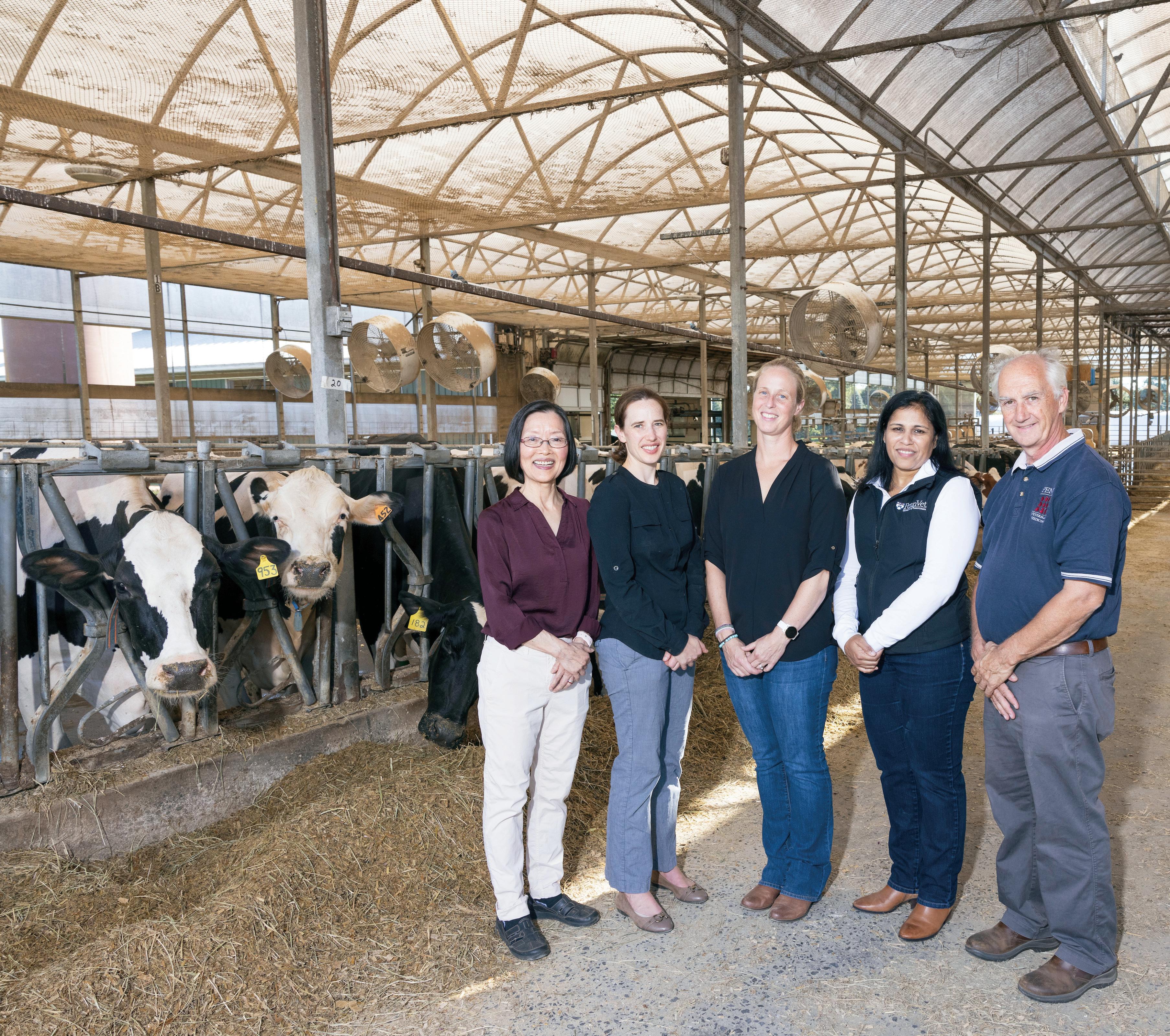
CSAFS leaders (l to r): Zhengxia Dou, PhD; Laurel Redding, VMD, PhD; Meghann Pierdon, VMD; Dipti Pitta, PhD; and Tom Parsons, VMD, PhD.
Evolving Agriculture
Innovation is nothing new at New Bolton Center, a campus rich with expertise and a track record of fostering advancements in dairy production, swine welfare, and poultry health, among other fields. Increasingly, those advancements arise out of collaborations that leverage veterinary science together with expertise from other fields, such as engineering, finance, sociology, energy policy, and epidemiology.
The CSAFS will serve as a nexus for these necessarily cross-disciplinary insights and projects, bringing together the people and resources that can turn nascent ideas into tested, on-the-ground solutions that can be translated and scaled to reach producers across Pennsylvania, the United States, and beyond.
To push these ideas forward, the center encompasses five “clusters of excellence,” each focused on a distinct branch of the mission: Animal welfare, regenerative agriculture, food security, climate mitigation, and human health interfaces. Guided by expert faculty leads, the five overlapping domains will support research, training, and outreach to ensure Penn Vet’s innovations reach farmers where they are.
Healthy Environment, Healthy Herd, Healthy Farms
Promoting health is a priority woven through every cluster in the center but is a particular focus of the human health interfaces and food security clusters, headed by Dr. Laurel Redding, assistant professor of Epidemiology, and Dr. Meghann Pierdon, assistant professor of Clinical Production Medicine, respectively.
By now One Health is a concept that all within the veterinary field—and many beyond it—know well: the inextricable relationships between





















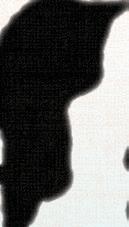



















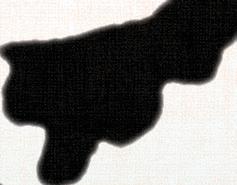


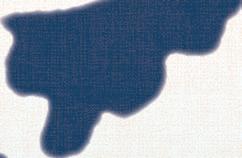






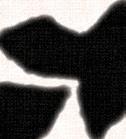

















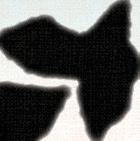



































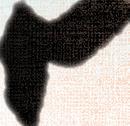

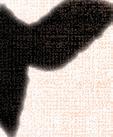

























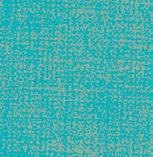
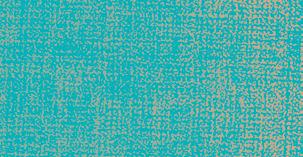









DR. MEGHANN PIERDON Assistant Professor of Clinical Production Medicine



“We want to build collaborations that help farming have less of a negative impact on wildlife and think about ways of approaching wildlife management that will protect the health of our farm animals.”
human, animal, and environmental health. Redding, whose own National Institutes of Health funded research has focused on the use of antibiotics and the impact of harmful and helpful microbes on livestock, pet, and human health, will be exploring all those components in a few projects with close links to the center, in collaboration with the Perelman School of Medicine, the School of Dental Medicine, and Children’s Hospital of Philadelphia.
One involves a feeding trial in cows and pigs to see how high levels of dietary zinc, an essential trace element fed to livestock, may alter the likelihood that the animals’ guts carry Clostridioides difficile , a bacterium associated with diarrhea in animals—and a cause of severe illness in people.
“It’s an open question as to whether animals are a carrier,” Redding said. “They might constitute a reservoir for farmers, farm workers, or potentially even people consuming the associated meat or other animal products from these infected pigs or cows.”
Another study, which will start in companion animals but may later extend to farm animals, will touch upon what’s known as the “hygiene hypothesis.” “We’ve all heard that kids who grew up on farms have less problems with allergies and asthma,” Redding said. “We’re expecting to see that people who have pets and have close contact with their pets will have less disrupted gut microbiota after taking antibiotics and will have a more rapid recovery after completing their course of antibiotics.”
Pierdon, meanwhile, has carved a research niche in agricultural biosecurity, tracing outbreaks of diseases on farms in Pennsylvania, thus arming farmers with the information they need to keep their herds safe from contagious illnesses. She’s hopeful that the center’s collaborative nature will help her develop a broader picture of disease threats and prevention
strategies, looking at variables not traditionally considered in her modeling to date.
“We are trying to think more about the relationship between wildlife and farm animals,” she said. “We want to build collaborations that help farming have less of a negative impact on wildlife and think about ways of approaching wildlife management that will protect the health of our farm animals.”
The Wildlife Futures Program, a partnership between Penn Vet and the Pennsylvania Game Commission, will be a major asset in this work, Pierdon said, as will the Institute for Infectious and Zoonotic Diseases and the arm of the tripartite Pennsylvania Animal Diagnostic Laboratory System based at New Bolton.
Building on disease surveillance work she has led for a decade, Pierdon is experimenting with new ways of mining the data she and others collect from and share with farmers.
With a recent outbreak of infectious coryza in poultry, for example, she is looking for connections between disease hot spots to try to identify common risk factors.
“We’re starting to think about what this data can tell us, not just using it to alert producers that a case is present,” she said. To that end, she's working toward a master’s degree in applied science and epidemiology for public health “to ask those deeper questions.”
She sees the center as a way to get “a big picture view of what we mean by productivity and efficiency” when it comes to food production, a view that wraps in both animal welfare and disease risk. “We can sometimes produce ourselves into a corner,” she said. “It’s not that if a 5,000 sow farm is good then a 10,000 sow farm is better. We need to think carefully about how we can enhance the systems we have to be productive and efficient and also good for the animals at the same time.”
Reducing Agriculture’s Environmental and Carbon Footprint
This kind of holistic approach is guiding work in another one of the clusters, regenerative agriculture. Farmers have long understood that their livelihoods are tied up with the health of the environment. Weather patterns, soil health, water management, and pollinator populations—all are crucial elements to the success of a farm.
Sponsored by Penn’s Environmental Innovations Initiative, Parsons is leading a research community in turning a focus to regenerative agriculture. He has tapped scholars in soil science, carbon capture, landscape architecture, and engineering to come together and consider how agriculture and agricultural lands can be used as part of the solution to climate change. Working closely with researchers in the Stuart Weitzman School of Design, the School of Arts & Sciences, the School of Engineering and Applied Science, and the Kleinman Center for Energy Policy, this alliance will “create a space,” Parsons said, “to think about soil health, about carbon sequestration, about ecological practices, and so on, to find models for agriculture that are truly sustainable.”
Closely connected to this work is the climate mitigation cluster, co-led by faculty members Dr. Dipti Pitta, associate professor in ruminant nutrition, and Dr. Zhengxia Dou, professor of agricultural systems, which is laser-focused on strategies to shave emissions linked with animal agriculture.
Cows, with their methane-producing belches, are especially culpable when it comes to greenhouse gases, contributing a quarter of agriculture’s greenhouse gas emissions. But with support from the U.S. Department of Agriculture as well as private businesses, Pitta has evidence-based techniques to make significant reductions in
those emissions. In one study, she’ll be testing and tracking how a particular feeding supplement affects the gut microbiome of cows, and, relatedly, the methane they produce. A second investigation involves tracking a herd of 30 cows using high-tech equipment at New Bolton Center’s Marshak Dairy designed to record the emissions generated by each individual animal.
“I’m trying to determine whether, by changing the animals’ diet, its timing or its composition, or the timing of lactation, how those variables impact whether a cow is more or less efficient in its rumination,” Pitta said. “Cows that have faster rumination tend to have a higher milk yield and produce less methane.”
Alongside these studies, Pitta’s group is at work in the lab, investigating how the gut microbiome a cow acquires at birth affects its rumination efficiency, as well as its impact on behavior via gut-brain connections.
“These are studies I have been hoping to do for a long time,” Pitta said. “Now with the support of the dean, our funders, and the center, we have the opportunity and our projects are really taking off.”
A partner on some of those projects, Dou, trained as a soil scientist, has been working on the crop-animal interface to see how to minimize waste and increase food system efficiency, gaining insights that touch a variety of aspects of the new CSAFS.
“My work addresses food waste upcycling through animal feeding, it addresses natural resource issues, it addresses on-farm financial sustainability issues, it addresses water quality problems, and it also addresses the need to reduce the carbon and nitrogen footprint on farms,” Dou said.
A recent feeding trial represents one way her work encompasses these diverse facets of sustainable agriculture. Dou obtained culled citrus fruits from
a local processing center that were deemed not suitable for human consumption, and fed them to cows, replacing some of the standard ingredients in their diet, such as corn and protein feedstuffs.
“The result was that the cows fed this fruit material actually milked more,” Dou said. “We were able to turn the culled citrus that would otherwise have been discarded into an inexpensive feed source that made cows more productive.”
Following up on this study and with the support of a U.S. Department of Agriculture grant, Dou is now determining whether fermenting fruit and vegetable wastes with crop residues—materials like corn stalks or wheat straw left over after a harvest— could increase nutritional value and offer another opportunity to turn would-be waste into feed for animals, and then milk for people.
Developing, Synthesizing, and Translating Knowledge
Effectively communicating and translating insights such as these to the larger public, especially agricultural producers, is a core aim of the CSAFS.
Continuing a tradition of exchange and support of the Pennsylvania livestock industry, the CSAFS will offer a central hub for producers to turn to for new innovations and best practices. And on a global scale, the center will support existing programs like the Gambia Goat Dairy as well as projects in Botswana working to make animal proteins affordable and sustainable in those and other locales.
The intellectual embers of the CSAFS date back to a virtual symposium jointly hosted during the pandemic with the Stuart Weitzman School of Design, “The Farm of the Future.” Penn Vet will continue growing its profile across campus by
“Food production is one of the major drivers of the climate crisis, but new practices in agriculture offer important solutions. The bottom line is that the way that we move forward with producing food will have everything do with our success in addressing the climate crisis.”
DEAN ANDREW HOFFMAN
holding the official CSAFS launch event during the University’s Climate Week in October. Two new faculty positions will soon augment the center’s work, perhaps with dual appointments in schools beyond Penn Vet, eliciting new scholarly, interdisciplinary connections, always grounded in the deep connection between the veterinary field and farming.
“All good farming requires good veterinary care,” said Dean Hoffman. “We really are integral to the health, sustainability, and resilience of that industry.”
Which means, he said, veterinarians must be part of the work to sustain and steward the natural resources that make farming — and life on this planet — possible.
“Food production is one of the major drivers of the climate crisis, but new practices in agriculture offer important solutions. The bottom line is that the way that we move forward with producing food will have everything do with our success in addressing the climate crisis.”
by Sacha Adorno
WALTER B. SAUL HIGH SCHOOL
On nice days, regular travelers along Philadelphia’s Henry Avenue aren’t surprised to see empty cars parked on a stretch of the busy road, drivers a few feet away visiting the “Saul horses.”
Adored by residents citywide, the animals in their field (safely behind a fence) are a delightful sight on this congested thoroughfare.
Saul team (l to r): Saul teacher Kelsey Romano, senior Addisyn Carbaugh, senior Zachary Crawford, junior Diamond Waters, and teacher Tiffany Turrentine.
STEWARDS THE FUTURE
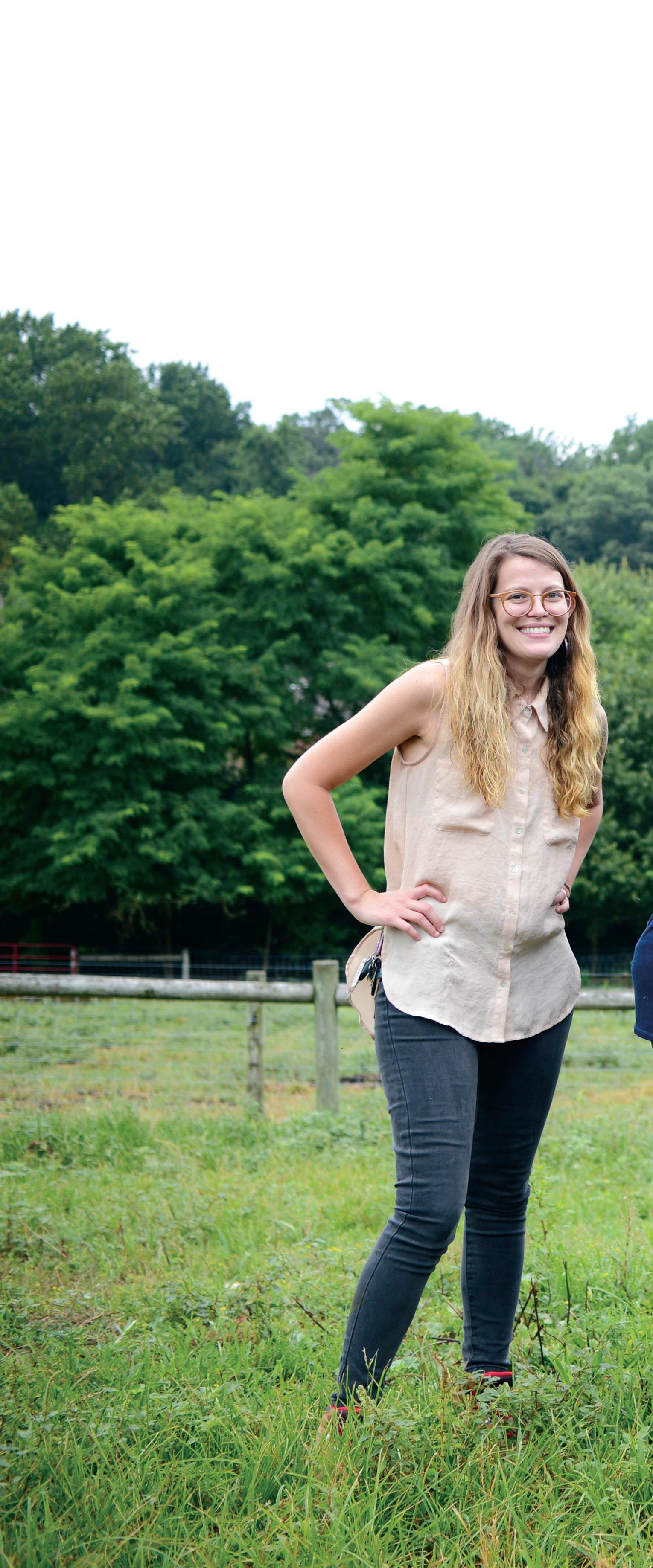

“We’re a special, tightly knit community of kids and adults who love animals and are interested in the relationship between animals, environment, and people.”
TIFFANY TURRENTINE, EdD SMALL ANIMAL/VETERINARY TECHNOLOGY INSTRUCTOR
The horses live on the 55-acre campus of Walter B. Saul High School, an agricultural oasis nestled between Philadelphia’s verdant Fairmount Park on one side and included the urban Roxborough neighborhood on the other.
Saul is the largest agricultural magnet high school in the country. Its four agricultural programs — horticulture, natural resource management, animal science, and food science and processing — draw students from across Philadelphia. The campus boasts a working farm, with sheep, cows, and horses, as well as an extensive vegetable and flower garden – crops are sold through a local farm share — tended by more than 500 students, their teachers, and farm staff.
“People ask all the time if we’re a private school – but, nope, we’re a Philly public school,” said Tiffany Turrentine, EdD, a small animal/veterinary technology instructor at Saul and alumna of the school. “We’re a special, tightly knit community of kids and adults who love animals and are interested in the relationship between animals, environment, and people.”
In other words, Saul is a very One Health place.
STEWARDING US INTO TOMORROW
Most students start at Saul with little to no agriculture experience. Some are encouraged to apply by parents who went to the school and others are interested in “working with animals” or having a “nontraditional” classroom experience. Many begin high school wanting to be veterinarians and leave with new interests after gaining hands-on experience.
“Our goal is to promote careers in or related to agriculture,” said Turrentine. “But really our alumni are everywhere. We have some in upperlevel management in Fortune 500 companies. We have business owners, veterinarians and vet techs, nurses and doctors, dental technicians and dentists, psychologists, physical therapists, teachers, policymakers, you name it.”
Whatever their ultimate professional path, she added, “Students graduate from Saul with a strong foundation they can build on in any situation. And we nurture them to be good stewards of all earth’s resources – human, plant, and animal.”
Addisyn Carbaugh, a senior this year, is a case in point. “I feel as though the people this school is creating, myself including, are going to build a better world because we’re always thinking about ways to do better for our communities, for agriculture that feeds us, and for animals in our homes.”
PARTNERSHIP AND LIFELONG LEARNING WITH PENN VET
Saul is close to Penn Vet — roughly 10 miles from Ryan Hospital and 40 miles from New Bolton Center. The high schoolers benefit from the proximity to an institution that leads in developing and teaching sound, safe, and sustainable agriculture practices and animal care.
“Throughout the years, Saul has connected with Penn Vet often,” said Turrentine, adding that Saul students regularly visit both Penn Vet campuses, and Penn Vet students frequently present at Saul on careers in veterinary medicine. “Penn Vet offers our students added exposure to what real-world veterinary medicine is about and shows them how agricultural science advances every day.”
But, for Saul teachers, learning isn’t left to the students.
“Part of being a teacher is preaching the value of lifelong learning,” said Kelsey Romano, Saul’s special education compliance monitor and learning support teacher.
When she first arrived at Saul four years ago, Romano “really didn’t know much about animals and animal welfare and saw my lack of knowledge as an opportunity to be a better teacher by becoming a student again.”
Enter Penn Vet once again.
Turrentine (l) began Penn Vet's Graduate Certificate in Animal Welfare and Behavior program in September. And Romano (r) graduated from the program in summer 2022.
“Saul’s animals are important teachers on our campus and knowing how to best ensure their welfare is key to honoring and caring for them, while creating a culture dedicated to the betterment of people and animals alike.”
KELSEY ROMANO
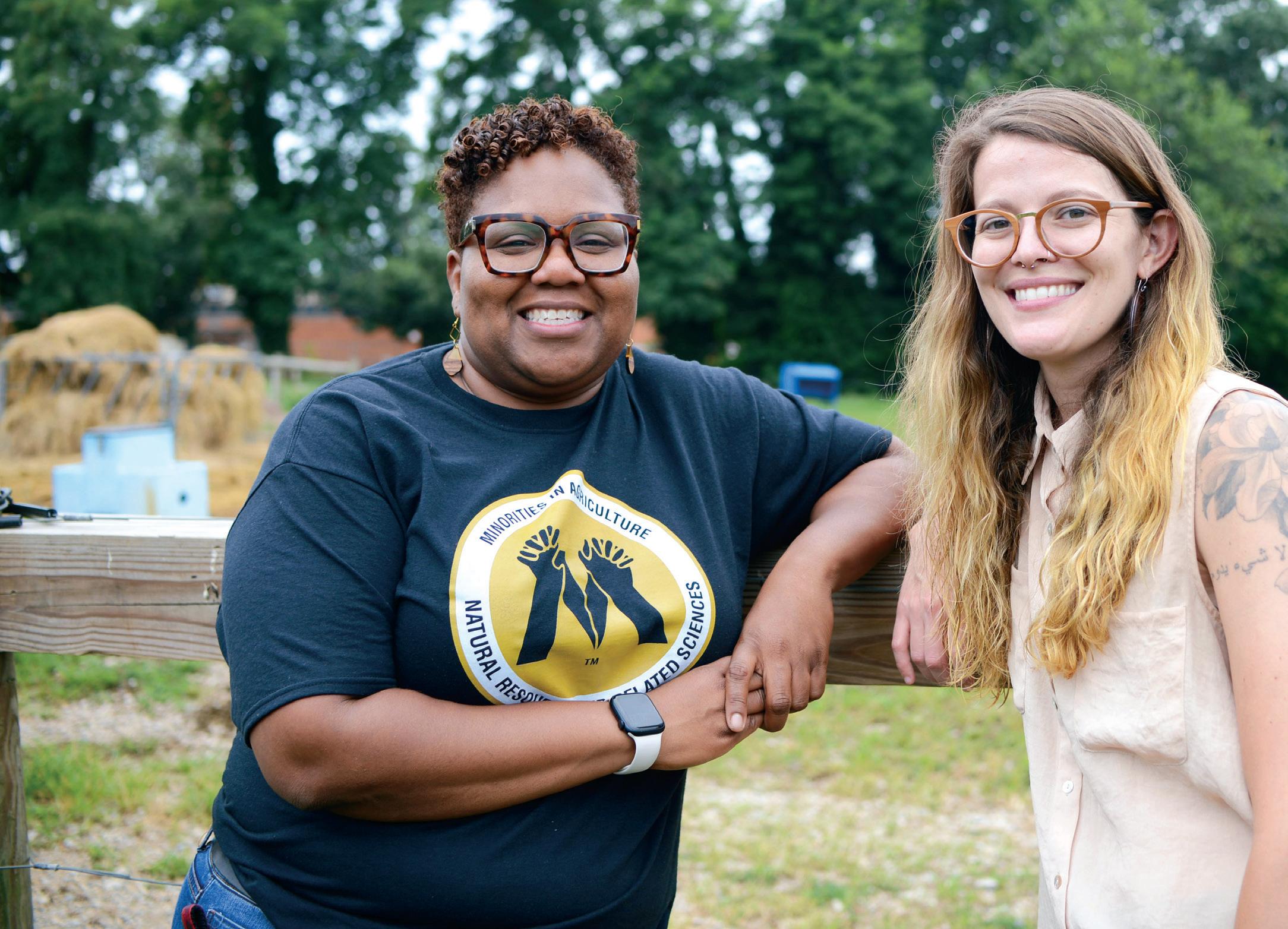
A MODEL FOR EVERYONE
Romano enrolled in Penn Vet’s Graduate Certificate in Animal Welfare and Behavior program, which is designed for working professionals and science graduates looking to deepen their understanding of animal welfare, behavior, and human-animal interactions. She earned her certificate last year.
“I learned so much,” she said. “Saul’s animals are important teachers on our campus and knowing how to best ensure their welfare is key to honoring and caring for them, while creating a culture dedicated to the betterment of people and animals alike.”
During the program, which is four courses each running seven weeks, Romano gained an understanding of animal welfare and behavior. She and her fellow program participants learned how to identify evidence-based solutions to welfare challenges facing individual animals and organizations and industries.
“And it wasn’t only the coursework that taught me,” said Romano. “I brought my learnings to my students, who would then apply the new knowledge to their own understanding of animals. We were all learning together. It was an amazing experience for everyone.”
Diamond Waters, a Saul junior, agreed: “Animals give us so much. We need to be able to give back – to treat them well and care for them and to show others how to as well.”
Now, it’s Turrentine’s turn. She began the certificate course in September.
“Saul is a model school and other schools in the country look to us,” said Turrentine. “They’re watching what we’re doing and how we’re doing it. If we’re going to be that premier model, we better have it right. And how do we keep it right? Continual education. The Penn Vet program is an example. It’s beneficial for teachers, which is beneficial for students. And it contributes to Saul’s position today and in the future as a leading urban agriculture high school with an animal science program.”
MOVING LEARNING FORWARD
But all the teaching and learning only matters on a large scale if it’s carried forward. Saul students take their responsibility seriously as ambassadors for the animals that mean so much to them.
“I always thought I’d be a veterinarian,” said senior Zachary Crawford. “But I’ve become interested in animal behavior. It’s opened new ideas for me to explore in college and as a possible career, maybe in agriculture or maybe not – and even if I pursue being a large or small animal veterinarian, I already know a lot about animal welfare and behavior.”
More immediately Waters carries her learning forward every day: “I always have something to talk about with my family and friends – they’re curious about Saul and about agriculture and taking care of animals. I get them even more interested. At any time, I can just start a conversation with questions like, ‘Hey, did you know this about sheep? Or this about cows?’ My friends love it and so do I.”
ADDISYN CARBAUGH
SENIOR, WALTER B. SAUL HIGH SCHOOL
“I feel as though the people this school is creating, myself included, are going to build a better world because we’re always thinking about ways to do better for our communities, for agriculture that feeds us, and for animals in our homes.”
ZACHARY CRAWFORD
SENIOR, WALTER B. SAUL HIGH SCHOOL
“It’s opened new ideas for me to explore in college and as a possible career, maybe in agriculture or maybe not – and even if I pursue being a large or small animal veterinarian, I already know a lot about animal welfare and behavior.”
DIAMOND WATERS
JUNIOR, WALTER B. SAUL HIGH SCHOOL
“Animals give us so much. We need to be able to give back – to treat them well and care for them and to show others how to as well.”
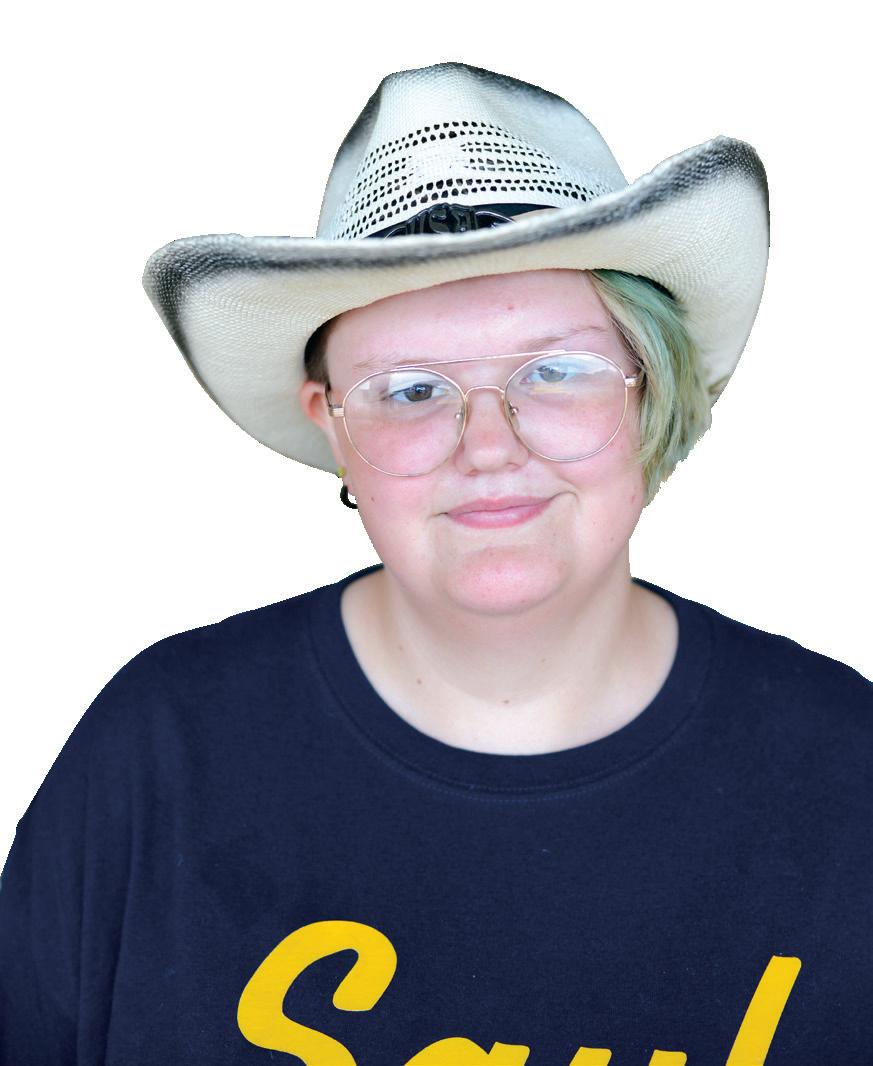
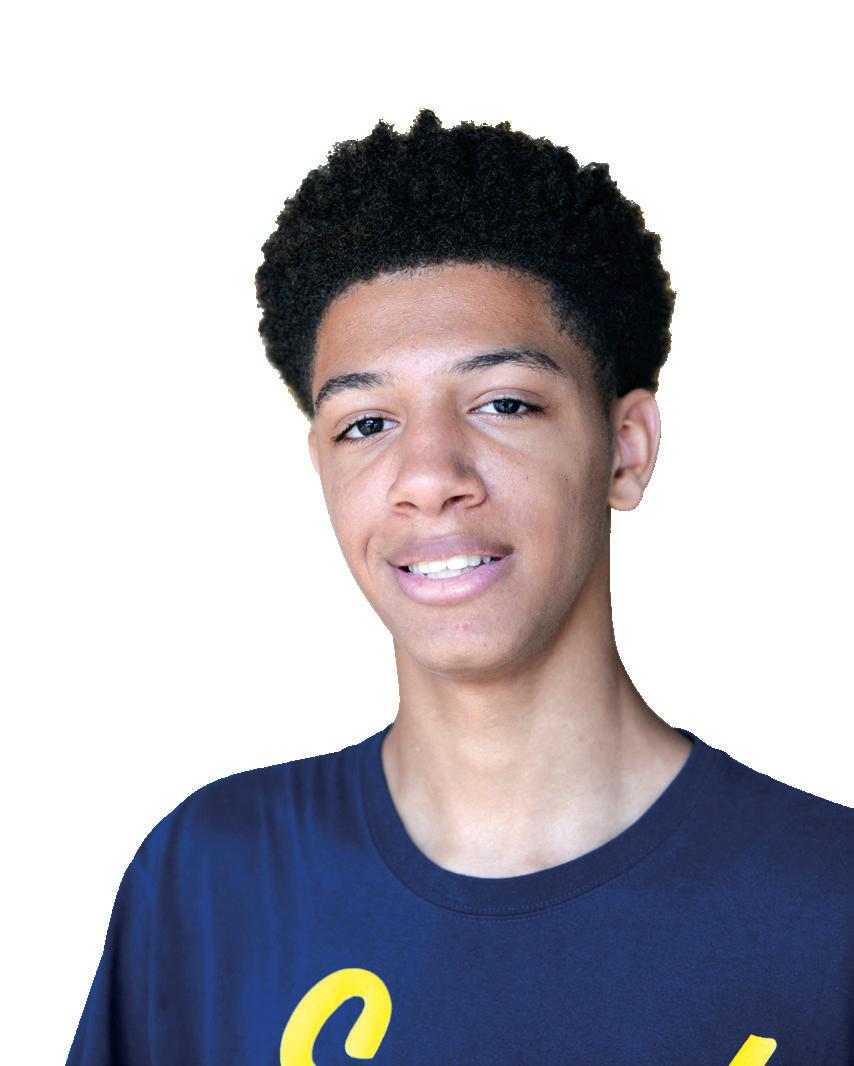
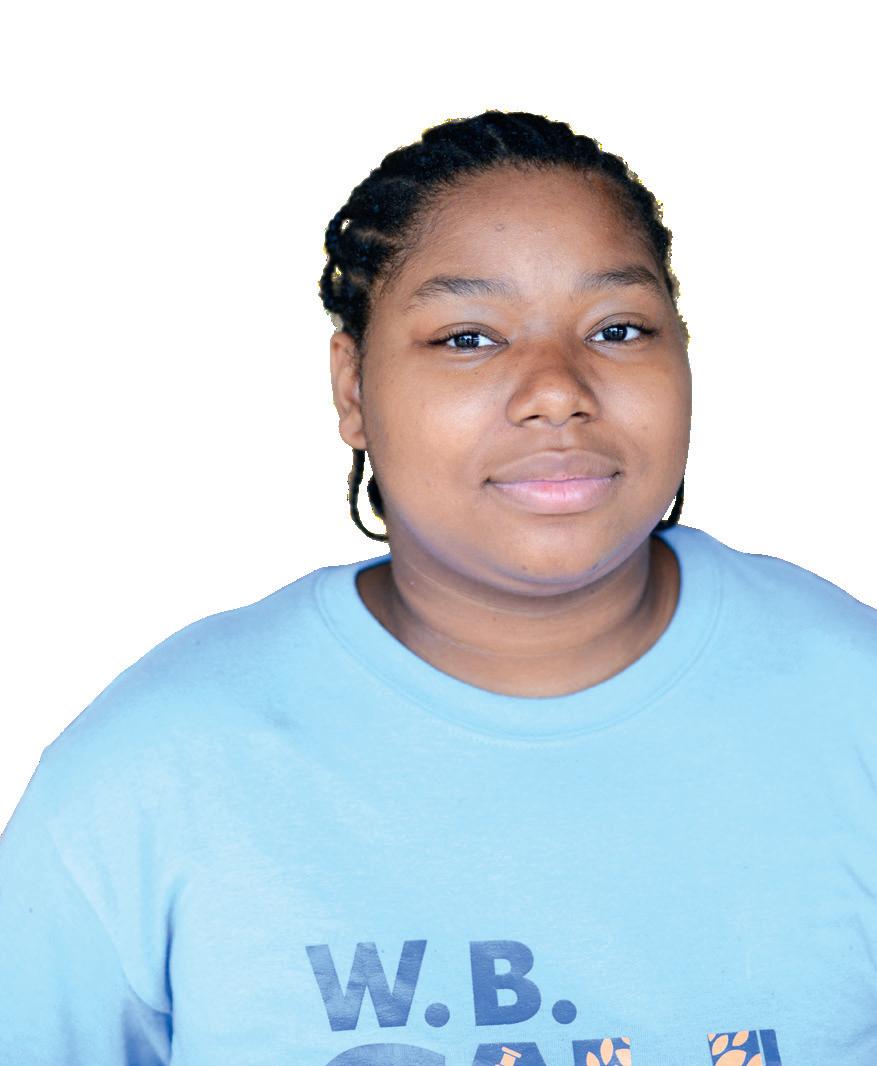
Dr. Amber Itle, V’03 Keeps Watch on Washington State’s Animal Health and Well-Being
BY SACHA ADORNO
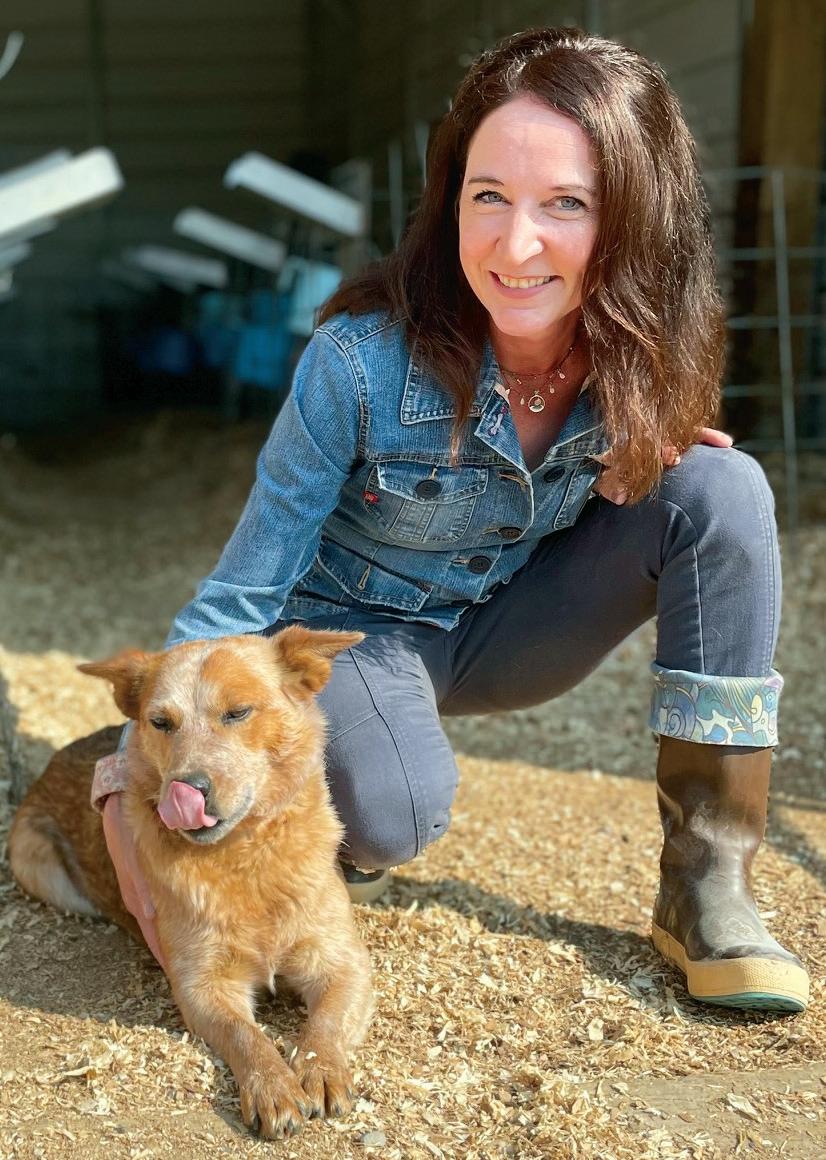
Dr. Amber Itle, V’03, grew up immersed in the world of cows on her family’s fourth-generation producer, handler dairy farm. She worked alongside her grandparents, cousins, and immediate family — including her Penn Vet alumnus father Dr. Joseph Itle, V’72, and veterinarian sister Dr. Kendra Itle — to help manage the herd, treat sick animals, perform artificial insemination, feed calves and milk cows, make ice cream and butter, and deliver products on a home delivery route.
The experience prepared Itle well for her current role as state veterinarian for the Washington State Department of Agriculture (WSDA). “At an early age, I learned work ethic and was empowered to solve problems,” she said. “I was privileged to see all sides of dairy production, regulatory challenges, and consumer values and views around animal agriculture.”
After nearly a decade in large animal private practice with a dairy emphasis, in 2013 Itle started with WSDA as a field veterinarian. She then became assistant state veterinarian before assuming the head position in March 2022.
A MIGHTY MISSION AND IMPACT
As the state’s lead veterinarian, Itle is primarily concerned with protecting animal health and well-being; controlling, containing, and eradicating emerging, foreign animal, and zoonotic diseases; safeguarding public health; and promoting the continuity of business for agricultural stakeholders.
“State veterinarians have many stakeholders to consider, among them veterinarians, farmers, producers, processors, and consumers,” she said. “My upbringing and time spent in private practice really impressed upon me the importance of considering all these viewpoints and maintaining effective communication with everyone. I became adept at viewing contentious issues through multiple lenses and considering diversified perspectives to find solutions.”
State veterinarians, she added, also take a One Health approach to disease. For example, WSDA has collaborated with the Washington State Department of Health and the University of Washington on SARS-CoV-2 and monkeypox research.
KEEPING WATCH IN WASHINGTON STATE
Washington is a major agriculture state, with 39,000 commercial and niche, backyard, and small diversified farms operating on more than 15 million acres and requiring different approaches to disease prevention and response. Like much of the world, it too is experiencing increases in the number and intensity of natural disasters from climate change. Catastrophic landslides, floods, droughts, and wildfires impact both animal and human health, threaten food security, and create supply chain disruptions. And it all relates to Itle’s work.
During her WSDA tenure, Itle has led her team in responding to numerous animal diseases, including outbreaks of avian influenza, rabbit hemorrhagic disease, and equine herpesvirus myeloencephalopathy. She has headed efforts to increase and improve outreach to all stakeholders, expand the use of Radio Frequency Identification tags in the state’s livestock industry, develop infrastructure to support animal disease traceability, create guidance materials for responding to animal welfare cases, and provide subject matter expertise on animal care issues during natural disasters.
“WSDA is really on the side of the house of preparing for and responding to emerging diseases, foreign animal diseases, zoonotic diseases, diseases we don't manage every day. They have huge economic and animal welfare impacts. Our role is to make sure they don't get into the state – into the country – and do our best to contain and eradicate them as rapidly as possible.”
She continued, “We live in a global village, where diseases spread rapidly. There are many examples of diseases that have become endemic. We haven’t had to deal with them on the scale we do today — COVID-19 and monkeypox are public health examples. Rabbit hemorrhagic disease and highly pathogenic avian influenza (HPAI) are other instances of a disease that we've historically been able contain and stamp out early but are now struggling to fully eradicate.”
(As of publication, Washington had just confirmed its 34th HPAI case in backyard flocks.)
“These diseases have huge economic and animal welfare impacts. Our role is to make sure they don't get into the state – into the country –and do our best to contain and eradicate them as rapidly as possible.”
Dr. Amber Itle, V’03 State Veterinarian of Washington State
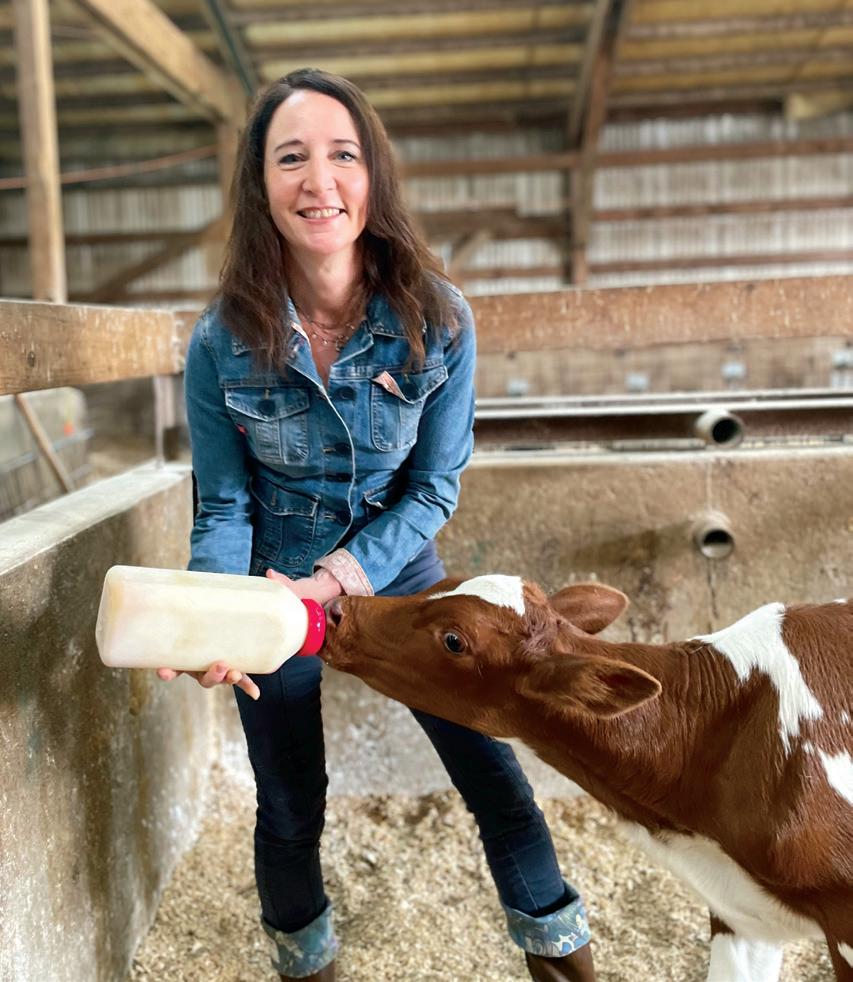
“Working with Dr. Parsons in the swine barn was hugely impactful for me – his animal welfare research was ahead of its time and inspired me to study the subject after getting my VMD.”
Dr. Amber Itle, V’03 State Veterinarian of Washington State
THE ROAD BACK TO PENN VET
While Itle might lose sleep over seriously complex issues, she is bolstered by the collaborative nature of the community addressing the challenges.
Past president of the Western States Livestock Health Association, Itle leads collaborative initiatives with the National Assembly of State Animal Health Officials (NASAHO).
“I'm really lucky to work with NASAHO’s executive committee,” she said. “And to be part of this highly motivated group of state veterinarians that make hard decisions, solve problems, and set visionary agendas to address difficult issues facing our animal agricultural industries.”
Penn Vet is well represented in this regulatory circle.
Many of Itle’s fellow Penn Vet alumni hold similar public service positions. “Bob Gerlach [V’82] is Alaska’s state veterinarian. Alex Hamberg [V’03] is assistant state veterinarian for Pennsylvania. Nate Harvey [V’03] is assistant state veterinarian for New Hampshire. And my vet school roommate Sunny Geiser-Novotny [V’03] is a veterinary medical officer for the U.S. Department of Agriculture’s Animal and Plant Health Inspection Service.”
Itle traces her part in this specialized circle back to Penn Vet. As a student, she worked with Dr. Thomas Parsons, Marie A. Moore Professor of Animal Welfare and Ethics in the Department of Clinical Studies at New Bolton Center and director of Penn Vet’s Swine Teaching and Research Center. Parsons’s groundbreaking and One Health–centered research explores the advancement of sustainable models of agriculture through the study of animal behavior, health, and welfare, as well as the use of technology.
“Working with Dr. Parsons in the swine barn was hugely impactful for me – his animal welfare research was ahead of its time and inspired me to study the subject after getting my VMD,” said Itle, who holds a master’s degree in animal welfare from the University of British Columbia. “Parsons and Penn Vet as an institution really emphasized critical thinking, data analysis, and application of knowledge and research to solve problems in ways that benefit animals, humans, and the environment. Penn Vet shaped how I think about animal agriculture and welfare and the need to protect both.”
Itle expected to apply this Penn Vet framework to caring for large animals in private practice. But the opportunity to join the WSDA changed how she viewed her professional impact and influence.
“I never would have imagined myself in this regulatory position — I thought I’d be doing food animal medicine forever,” she said. “But here I am, and I love it. There’s this common misconception that regulatory veterinarians don’t do much – that we’re lazy or bureaucratic. Nothing could be further from the truth. We put in long hours, especially during a response. We work interstate and on a national platform to solve problems for our industry and stakeholders. Our work is critical. Regulators know what’s at stake for human and animal and environmental health, and we know well-considered and smart regulations are good for everyone.”

Dr. Amber Itle with her family on the farm, including her father, Dr. Joseph Itle, V’72.
avian flu
DIAGNOSING HIGHLY PATHOGENIC AVIAN INFLUENZA
The School of Veterinary Medicine has been supporting the state’s diagnostic work.
by Katherine Unger Baillie
At the close of 2021, a form of highly pathogenic avian influenza (HPAI) began causing widespread disruption and illness in birds. In March 2022, the Pennsylvania Game Commission (PGC) announced that a bald eagle was the first confirmed victim in the state. Then in April, the disease was identified in a flock of commercial chickens in Pennsylvania.
Through the Wildlife Futures Program and the Pennsylvania Animal Diagnostic Laboratory System, Penn’s School of Veterinary Medicine supports agencies including the PGC and the U.S. Department of Agriculture in monitoring for HPAI in birds both wild and domestic. Starting in the spring, Penn Vet ramped up its diagnostic work to help the state respond.
“We are approved to run HPAI subtyping PCR tests,” said Eman Anis, an assistant professor of microbiology at Penn Vet. “When we learned that this outbreak was popping up in other states, we stocked up our lab with enough reagents to run at least 500 samples per day.”
As part of its testing protocol, the lab at New Bolton Center first confirms the presence of influenza A, then follows up on positive results with a second PCR to determine the virus subtype. Additional testing can distinguish high- from low-pathogenic viruses, and potential HPAI viruses are then further characterized at the National Veterinary Services Laboratories.
This latest HPAI outbreak, which affected hundreds of commercial and backyard flocks as well as wild birds, subsided this summer, but cases could creep up again this fall during wild birds’ migration. Anis and her colleagues stand ready to act.
“It’s very important to us that we continue to test as needed and support the agricultural industry and Wildlife Futures so we understand as best as we can the extent of this disease,” Anis said.
Katherine Houpt, V’63, PhD’72
Gives Back in Thanks for a Career Well Earned
Dr. Katherine Houpt, V’63, PhD’72, loves her work: “I wake up every day feeling glad and lucky to be part of this wonderful profession.”
Forget luck. Houpt’s illustrious career in veterinary medicine is the result of hard work and determination to break into what was, in her college years, a male-dominated field. Her trailblazing began at Penn Vet. Today, the founding figure in the discipline of veterinary behavior is investing in her veterinary roots.
“Penn Vet accepted me when no other vet school admitted more than two women,” said Houpt. “There were five of us in the Class of ’63, and we had a great time. Overall, our classmates and professors treated us with respect, and we really held our own with the men.”

p Pioneering women of Penn Vet’s Class of 1963: (From left) Drs. Katherine Houpt, Elinor Brandt, Jeffie Roszel, and Joan O’Brien (not pictured: Barbara Henderson).
PIONEERING A DISCIPLINE
Once upon a time, Houpt dreamt of being a large animal veterinarian. But, unlike Penn Vet, not everyone embraced the idea of female veterinarians. “As an undergrad at Penn State, I spent time on farms and saw that these guys and their fathers would never ask me to care for their animals,” she said. “I realized if I was going to work with the animals I loved, I should do it through research. So that’s where I focused my attention, as a student and then a VMD.”
After Penn Vet, Houpt earned a PhD in biology from the University of Pennsylvania. Board certified as a charter diplomate of the American College of Veterinary Behaviorists, Houpt was the first woman appointed to full professorship at Cornell’s College of Veterinary Medicine, where she served from 1989 to 2010. Since retiring 12 years ago, she has been a professor emeritus of behavioral medicine, conducting research and enjoying the extra time with her family, which includes a dog, a cat, horses, and chickens.
Houpt’s work is foundational to the discipline of animal welfare and behavior. She has published extensively — including Domestic Animal Behavior for Veterinarians and Animal Scientists , a pivotal textbook now in its sixth printing — and lectured worldwide on the topic. Her research has included improving animal welfare in a research environment, equine ingestive and maternal behavior, and companion animal behavior.
BRINGING OTHERS ALONG
While her Penn Vet years were great ones, Houpt was always aware that she and her four female classmates were in the minority. The experience inspired her to support other minority students at Penn Vet with the T. Richard and Katherine Albro Houpt Scholarship Fund, which she established in 2020.
And, just this year, Houpt turned her Penn Vet giving focus to her life’s work — animal welfare and behavior — with another gift that offers scholarships for students enrolled in Penn Vet’s certificate or MSc programs in animal welfare and behavior. Her gifts, she said, are investments in the future.
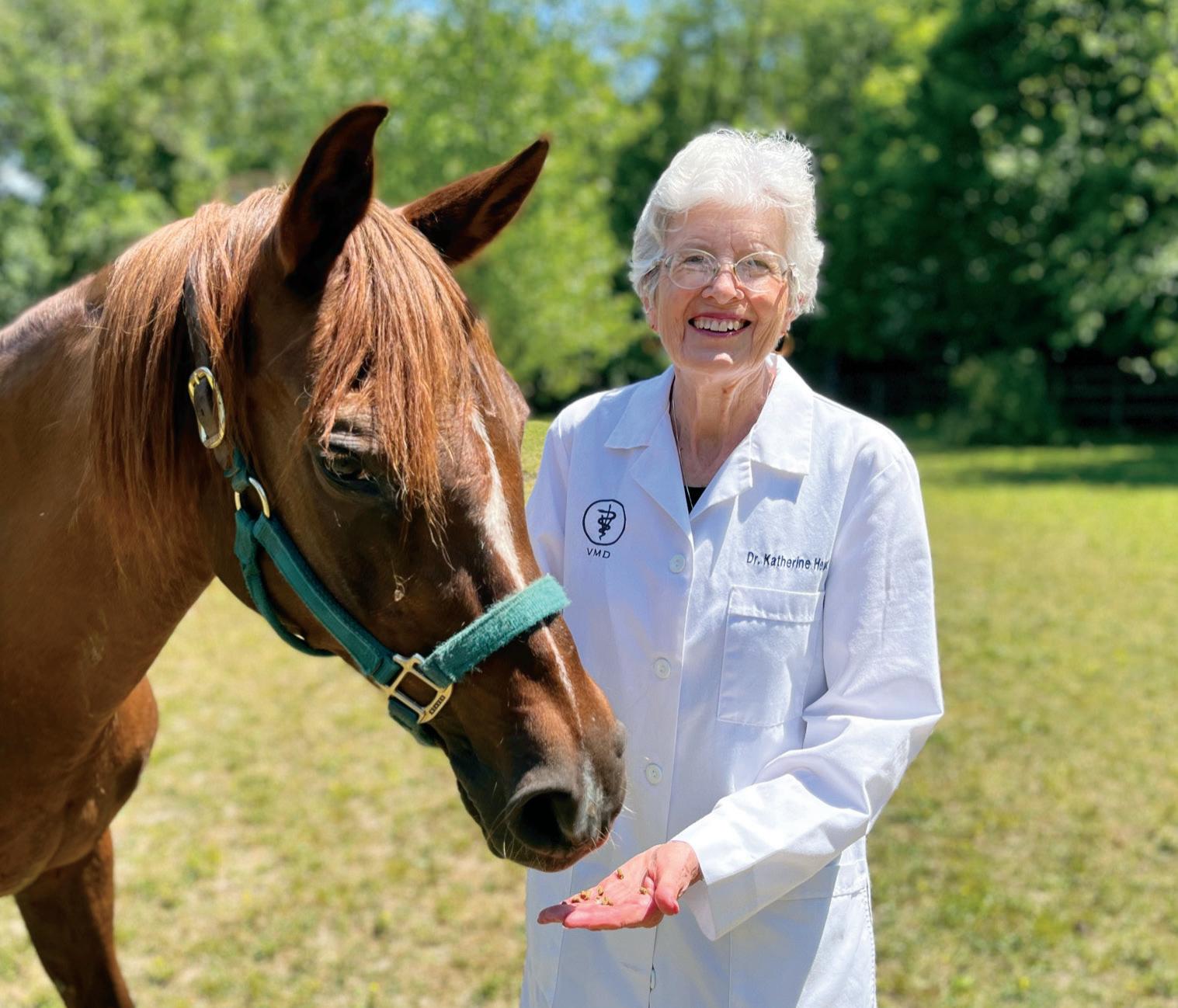
“Penn Vet gave me the opportunity to have many amazing experiences, and I want other bright students to have the same opportunities.”
Katherine Houpt, V’63, PhD’72
“Penn Vet gave me the opportunity to have many amazing experiences, and I want other bright students to have the same opportunities,” she said.
“Of course, it prepared me for what has been a very satisfying career, but it was also where I met my husband. The funny thing is I almost didn’t go. I was engaged to a guy, and he wasn’t happy when I was accepted to vet school — many men were threatened by smart, educated women. So, I declined and was devastated. Then, I changed my mind and enrolled, and broke up with the guy shortly after. Best decision I ever made. Three years later I married T. Richard Houpt [V’50].”
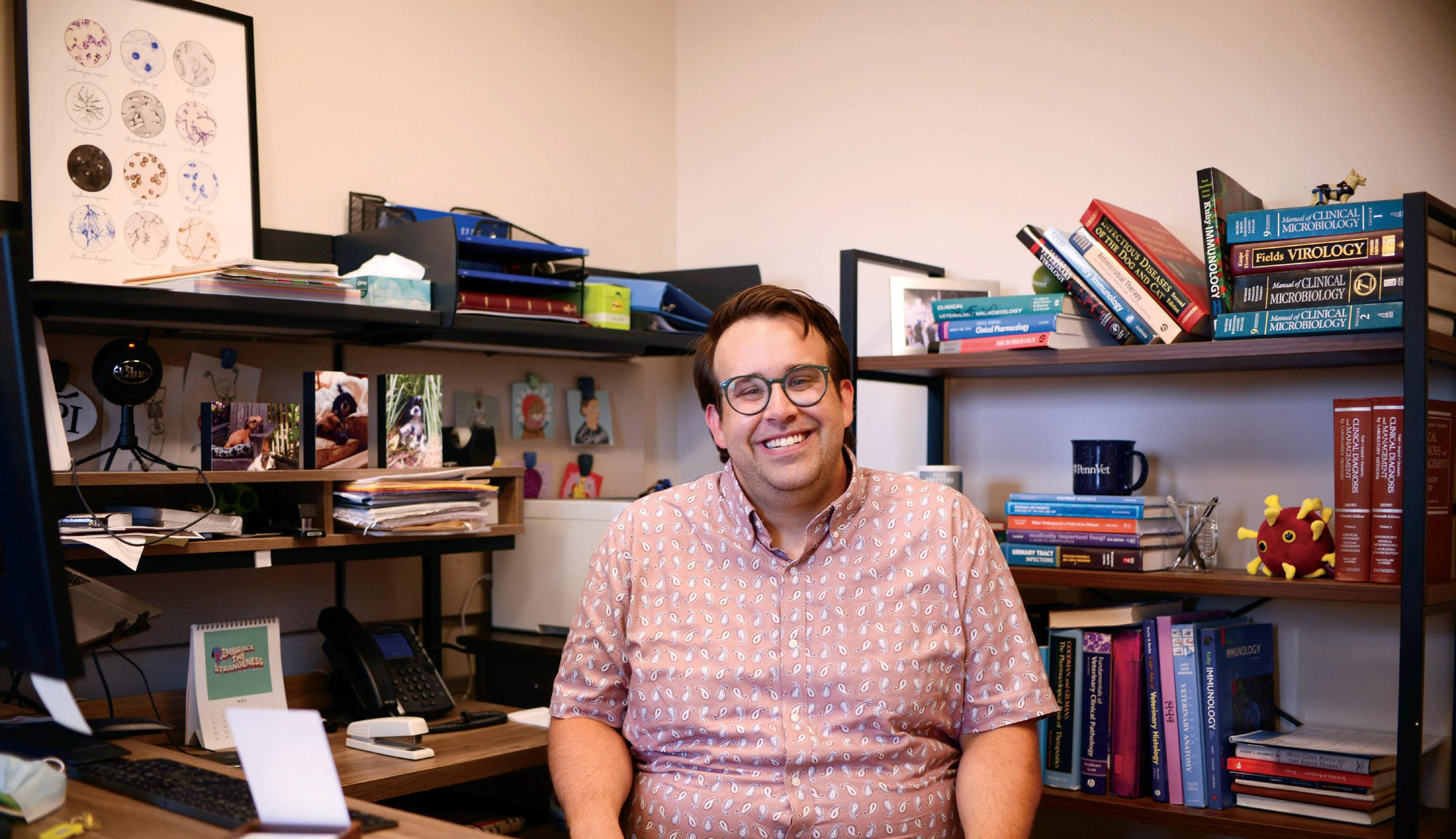
IN THE OFFICE WITH Dr. Stephen Cole, V’15
Assistant Professor of Microbiology
By Sacha Adorno
When Dr. Stephen Cole’s father dropped him at college, dad predicted son would never leave higher ed. He was right.
Cole is a born academic — inquisitive, tenacious, open to discovery, and passionate about learning and teaching. He’s also wickedly funny, a talent he puts to good use as a member of ComedySportz, Philadelphia’s longest-running comedy theater. The humor/intellect combo makes for an adored professor: Cole received the Class of 2023 Award for Spirit from the Penn Vet chapter of the Student American Veterinary Medical Association (SAVMA).
“With improv, you never know what's going to happen when you walk into a scene — there's
freedom in ambiguity and I have a high threshold for it,” he said. “This is helpful in impro,v but also in diagnostics research and teaching. It’s okay not to know something and to ask about it — to be wrong… or right.”
A board-certified microbiologist, Cole studies antibiotic-resistant bacteria in companion animals. This includes educating students and veterinarians in antimicrobial stewardship, which is the focus of his current study. “It’s a multicenter study with 250 veterinary students, from five vet schools, on the effectiveness of using a mnemonic device to choose an antibiotic. I’m very excited to see and share the results.”
1. Adler and Princess Margaret. Adler is our 11-year-old ‘pittie’ mix. She came with Clarke [Garthwaite, V'15], my husband, who got her a week before we met. She’s the best dog ever. She recently had emergency surgery at Ryan Hospital — it was so reassuring to know she was in the hands of my colleagues, who I’d trust with my own life! Princess Margaret is our 3-yearold Cavalier King Charles Spaniel. She was abandoned as a puppy at Clarke’s practice. She is just the most ridiculous dog! We love them both so much.
2. Pillows. I study a bacteria called CRE — carbapenem-resistant Enterobacterales. My colleague Jackie Dietrich gave me this pillow [right] for Christmas last year. Clarke and I were married a month earlier and at first glance I thought the pillow said Stephen and Clarke together forever. Then I looked again and realized, ‘Oh goodness, this is Stephen and CRE together forever!’ It’s hysterical: my bacteria and I are going to be together forever. The stuffed bladder [top right] was a gift from a student who worked on a urinary tract infection (UTI) project with me — at one point I thought I’d study UTIs. My mom gave me the animal cell pillow. She knows I work with animals. I don’t do anything with animal cells whatsoever, but it’s cute.
3. Art & Science. This print of fungi is quite beautiful. My brother and sister-inlaw gifted it to me when I was appointed to the faculty.
4. Hysterical. I listen to a feminism podcast called Hysteria. These funny pieces are cutouts from the podcast’s calendar. I love the messages delivered through colorful and cute illustrations. I always have strong opinions on things, some important and some not, and the sign on the door is how I feel every day.
5. Size Matters. Microbiology jokes are always great. I like having a fun office. It makes me feel more at home. We spend so much time in our offices, why not be comfortable and enjoy them.
6. Surrounded by Pride. One year at Penn Vet’s SAVMA auction, I bid on and won a basket of Pride goodies from Lambda Vets ( the School’s LGTB+ club). The contents and much more Pride stuff are all over my office — it’s very important for me to be proud and out and represent for our students.

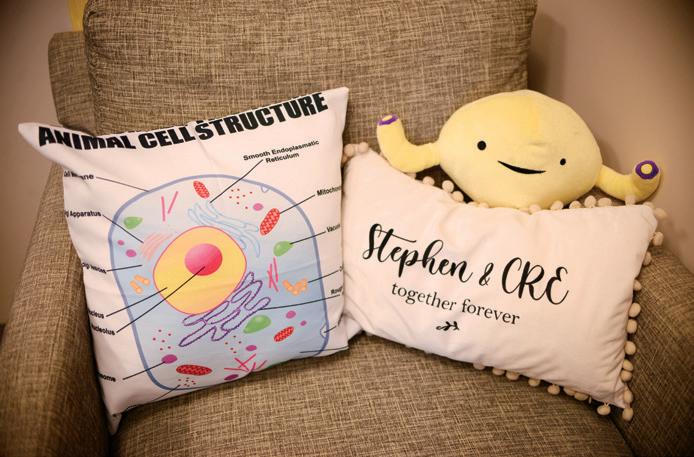
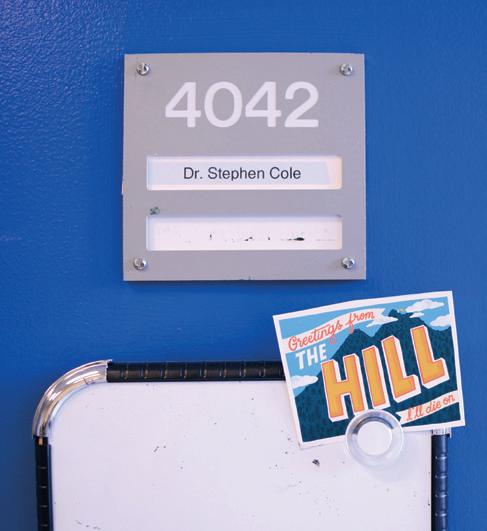
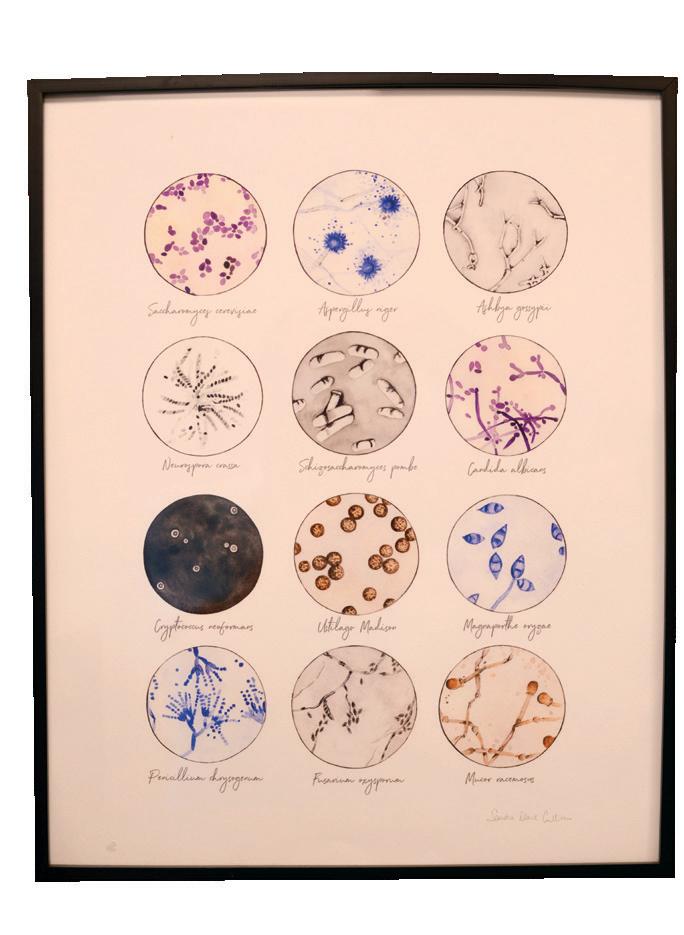

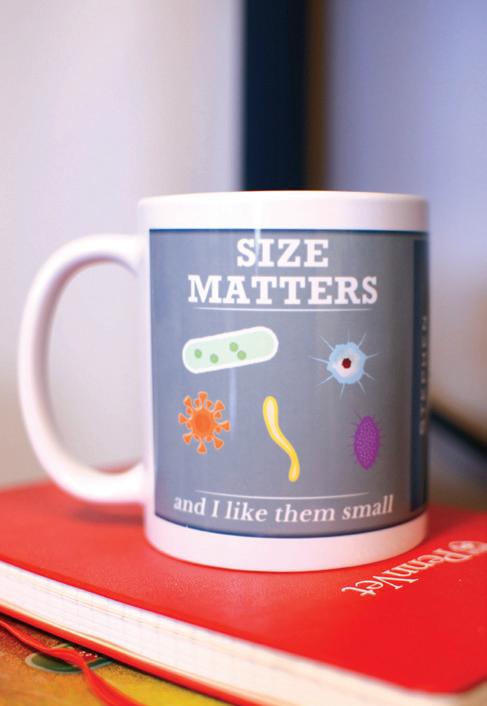
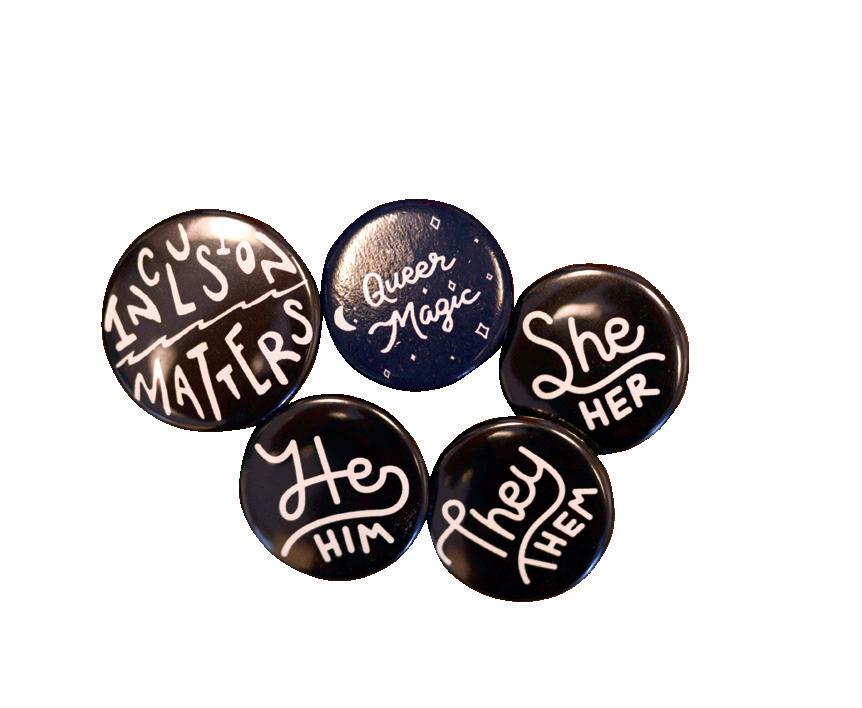
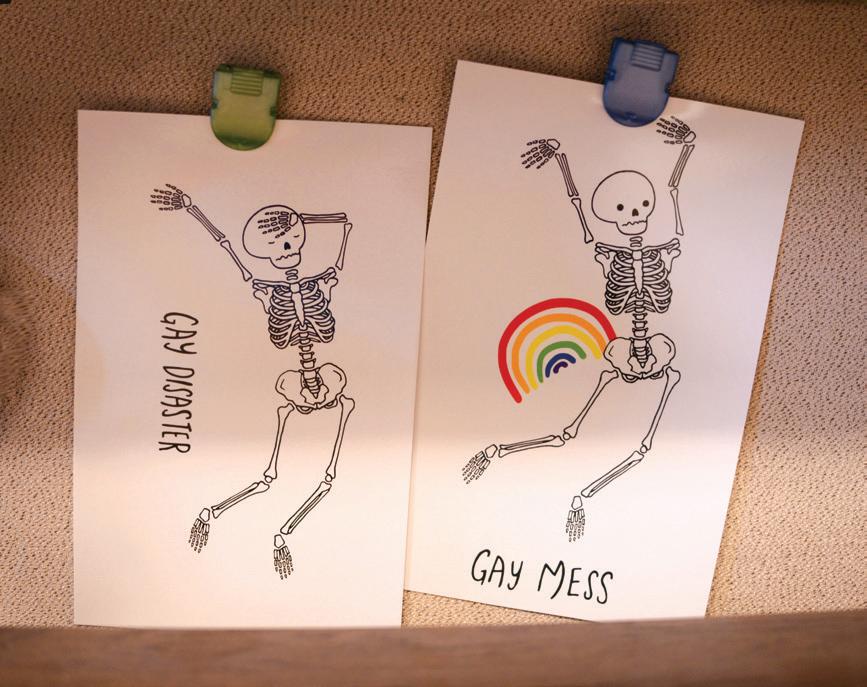
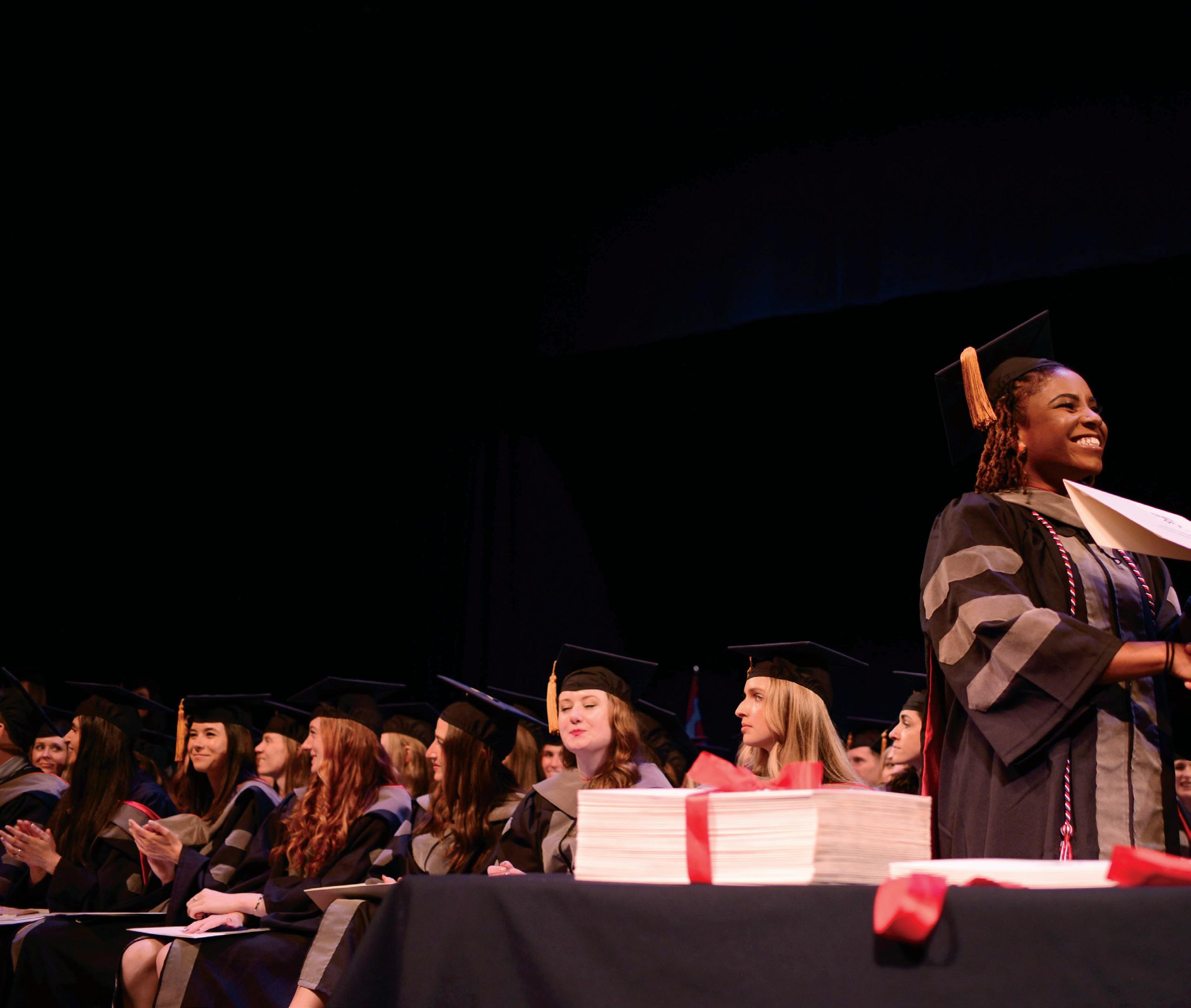
A WEEKEND WE WON’T SOON FORGET
On May 14, members of the Penn Vet community were invited to the first in-person Alumni + Reunion Weekend since 2019. New Bolton Center was buzzing with Penn Vet alumni who came out in record-breaking numbers to enjoy an evening under the tent outside Allam House, including fifth reunion parties, and jubilee dinners for V’72, V’67, V’62, and V’57!
In addition to Alumni Weekend, Penn Vet hosted Commencement for the Class of 2022 on May 17. Dr. Heather Fowler, V’10, director of producer and public health at the National Pork Board, delivered the Commencement Address. Dr. Nathan “Nate” Anthony Fanzone, V’22, delivered the Class President’s Address.
Here’s a selection of photos from Penn Vet’s 2022 Alumni + Reunion +
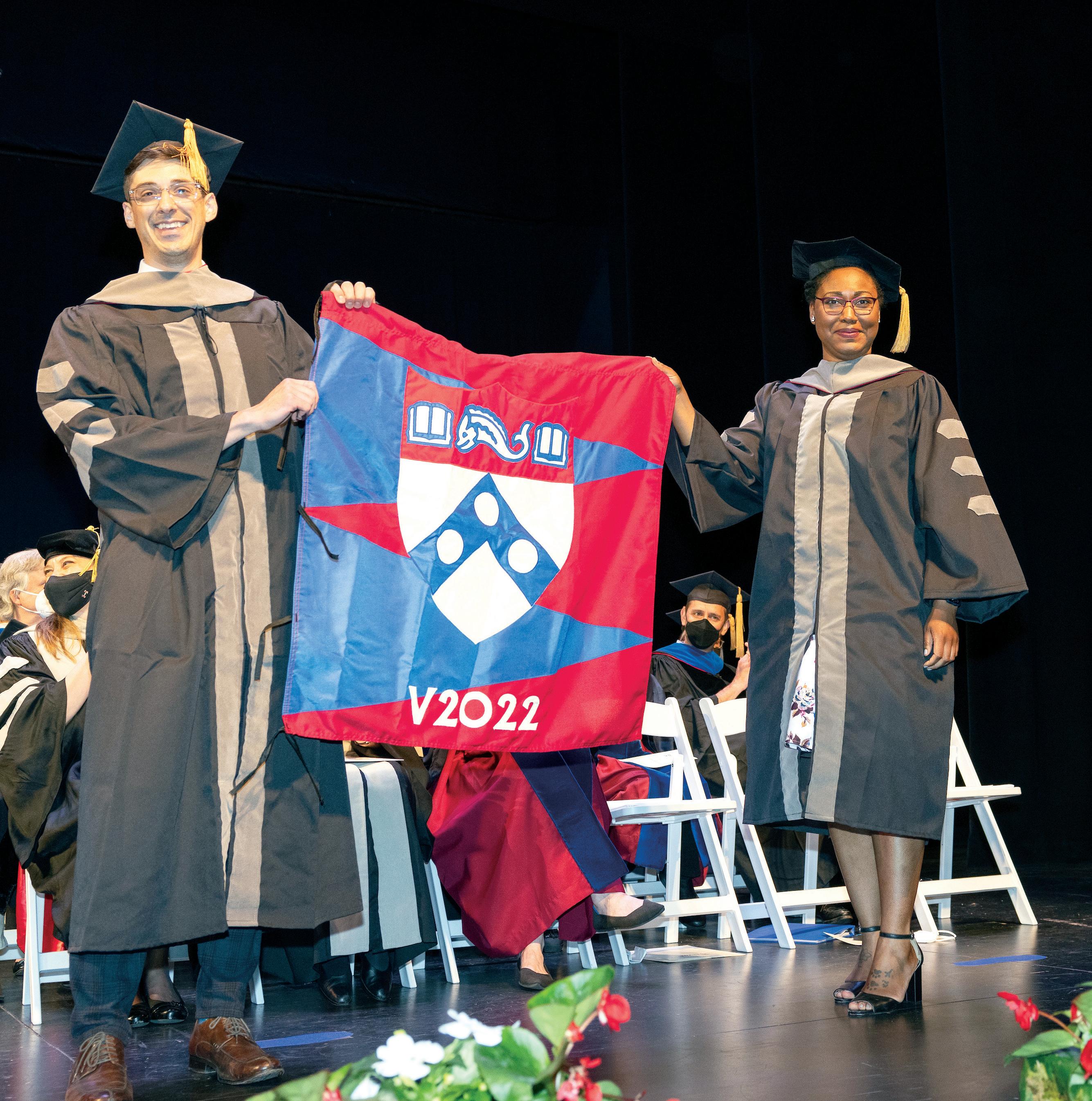


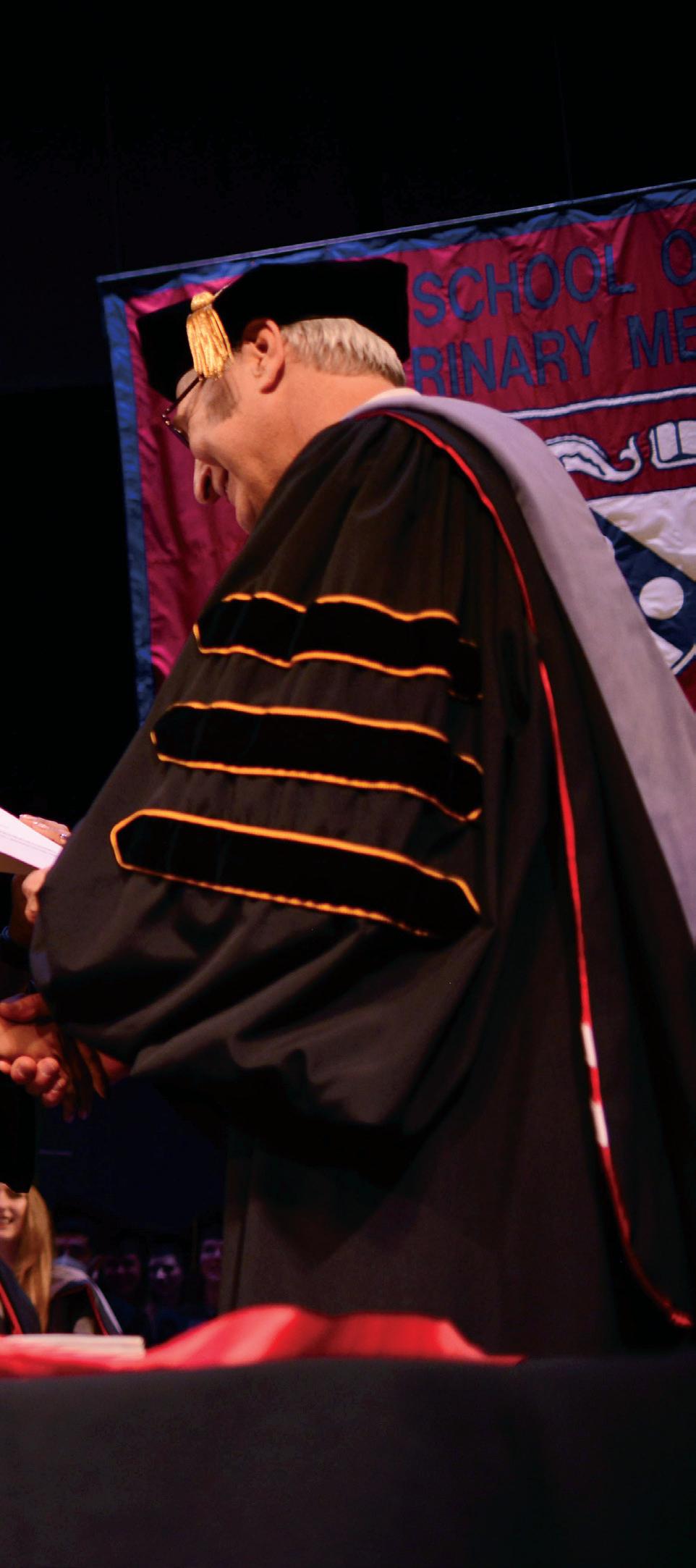
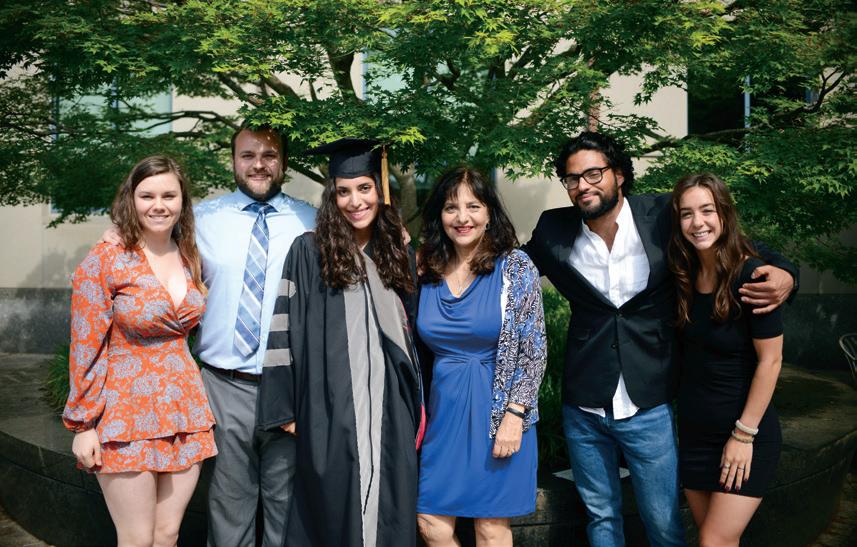
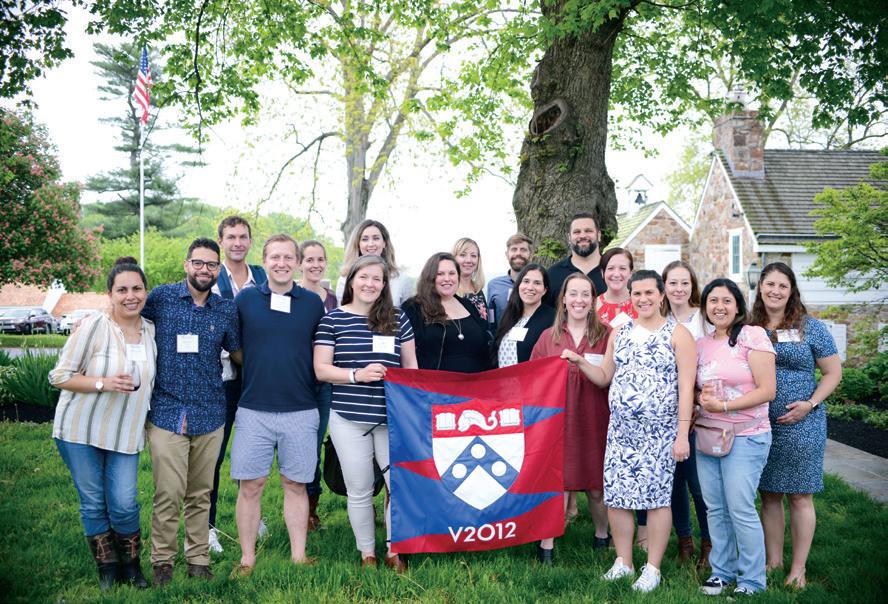
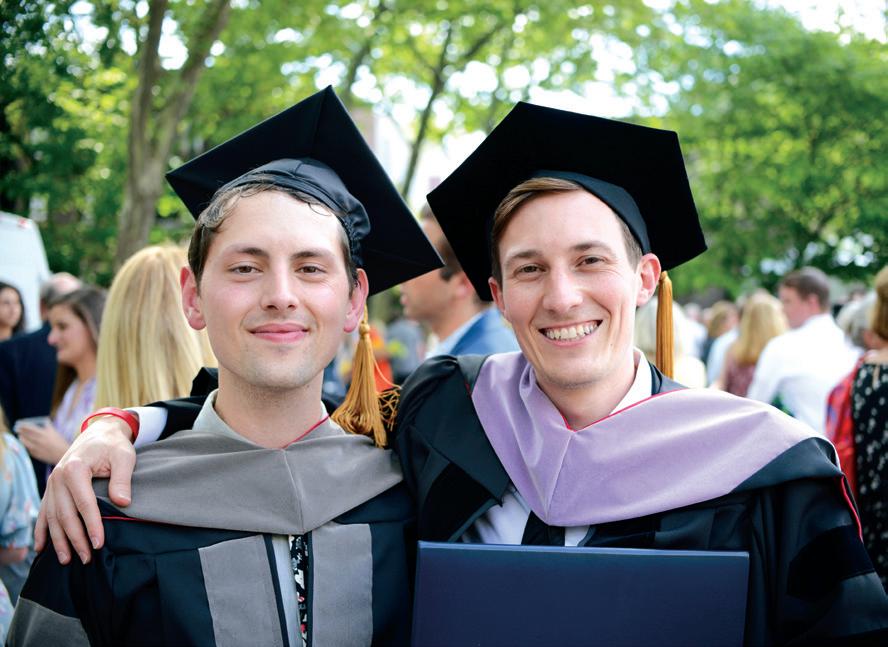
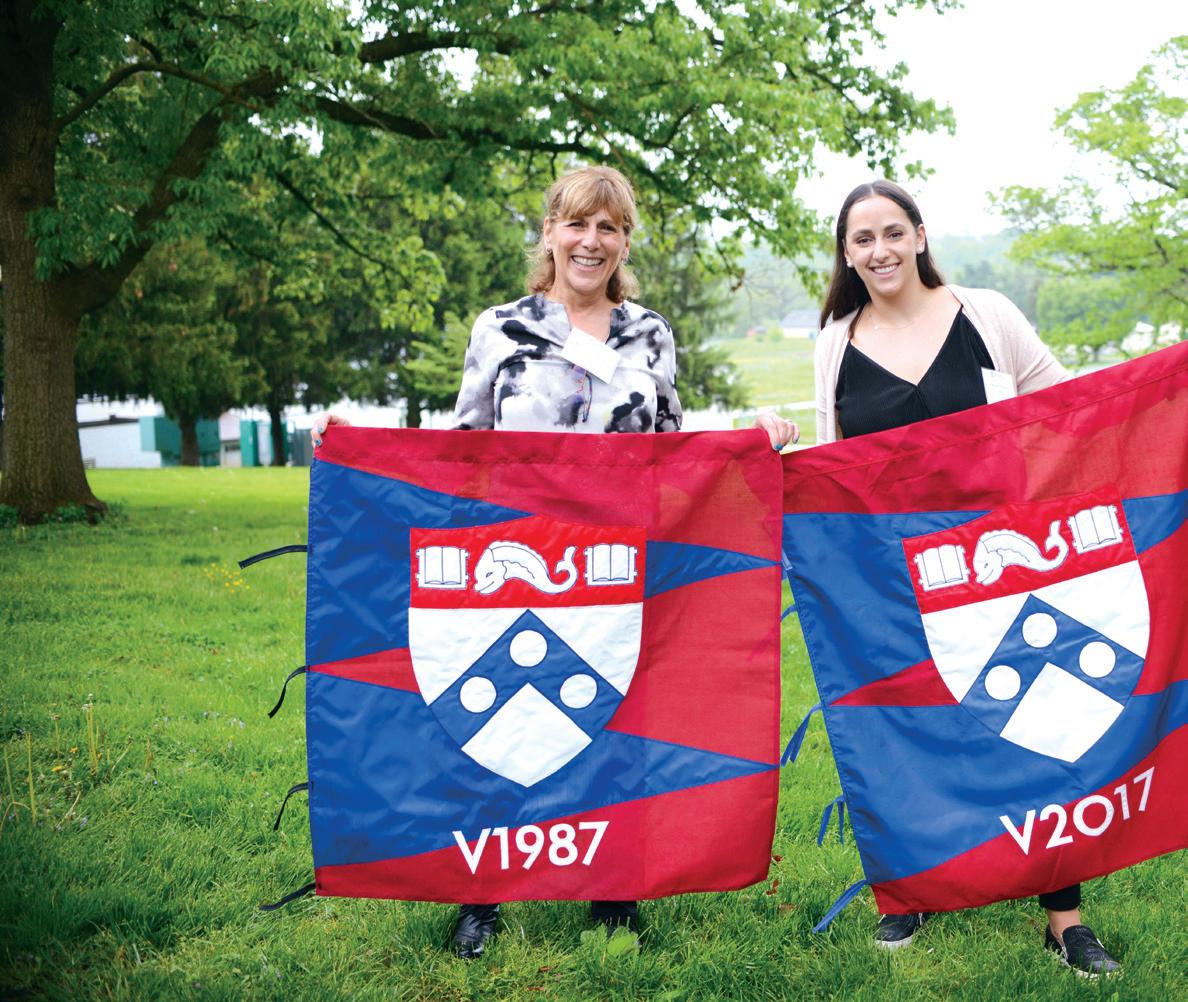
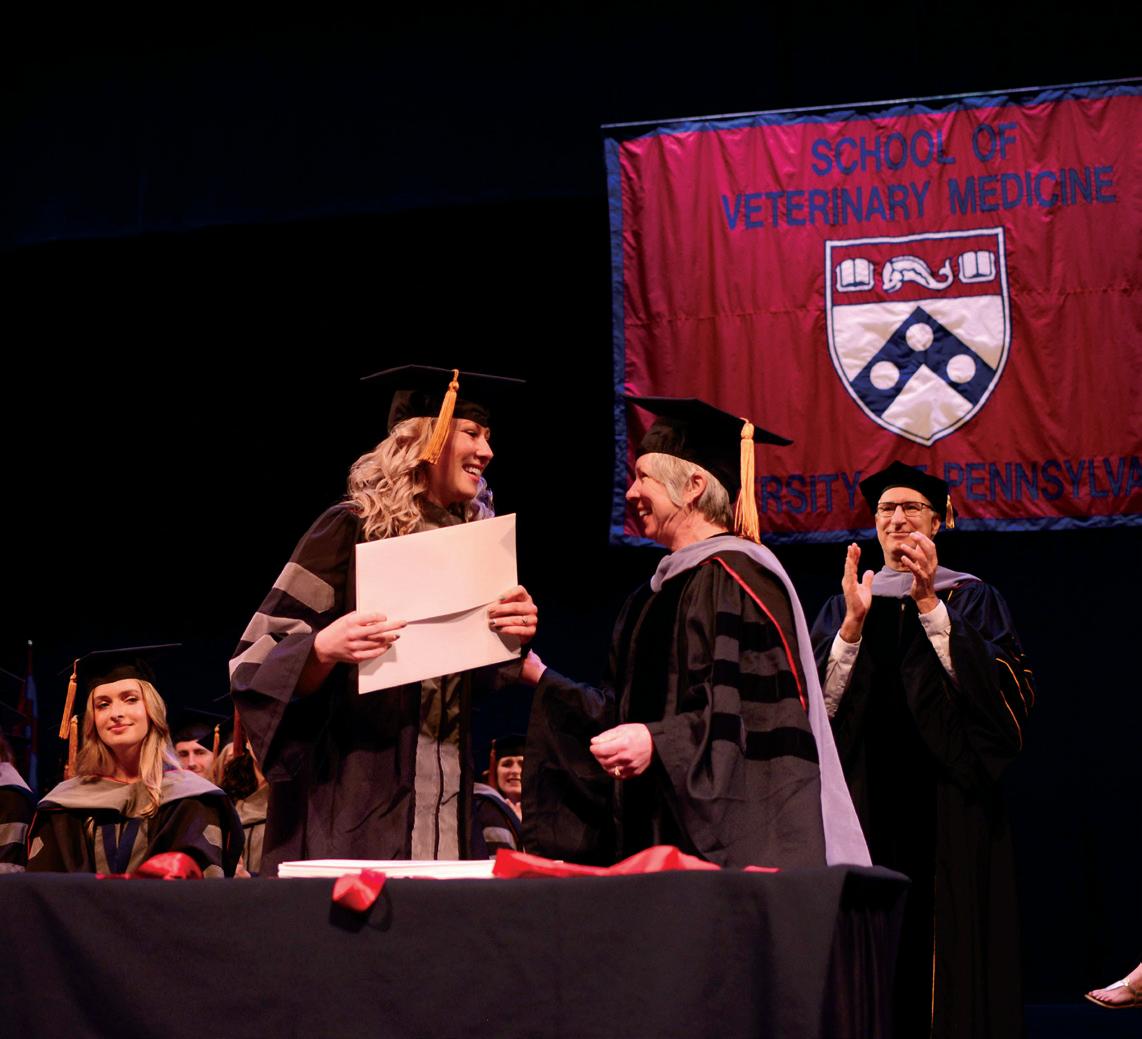
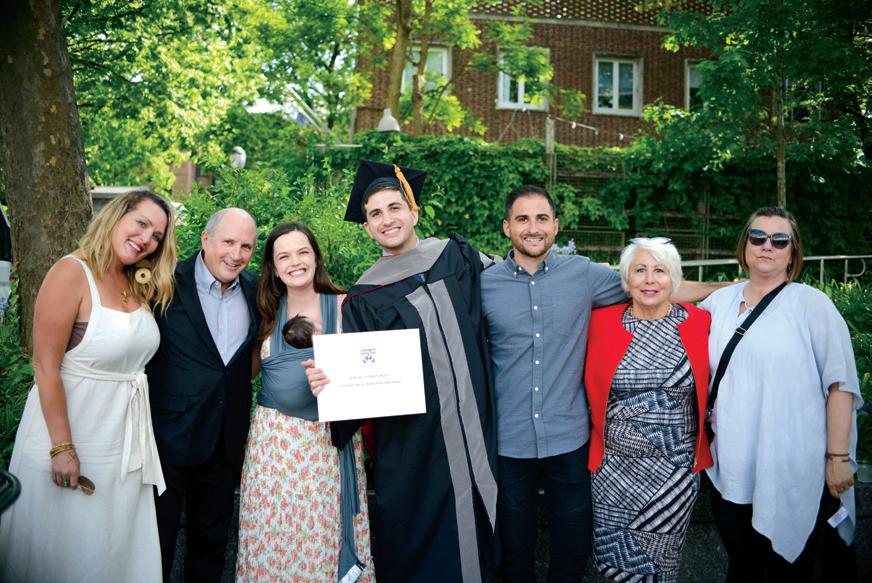

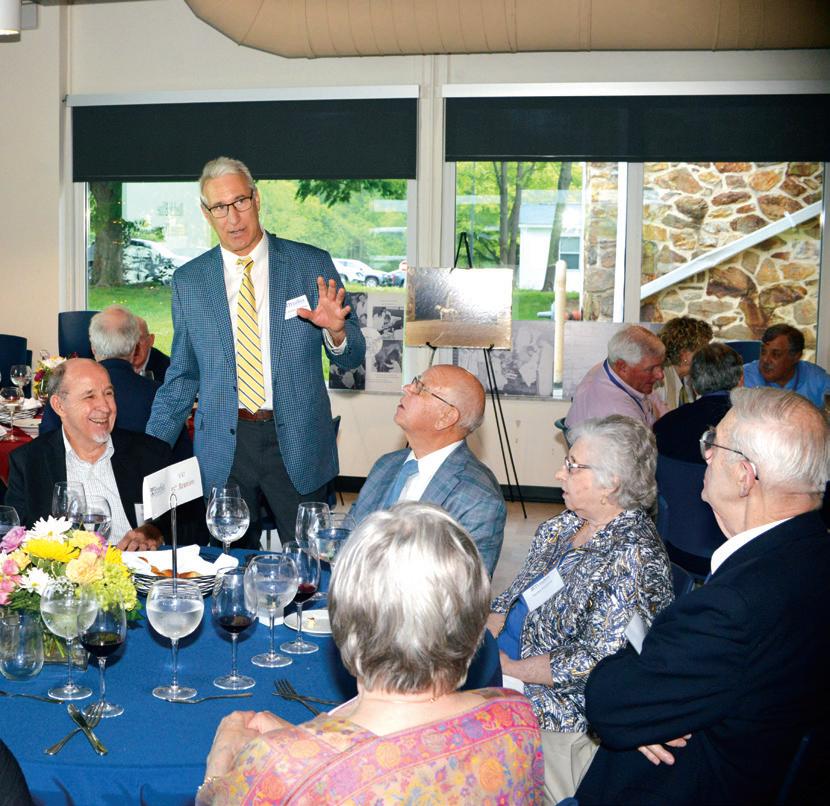
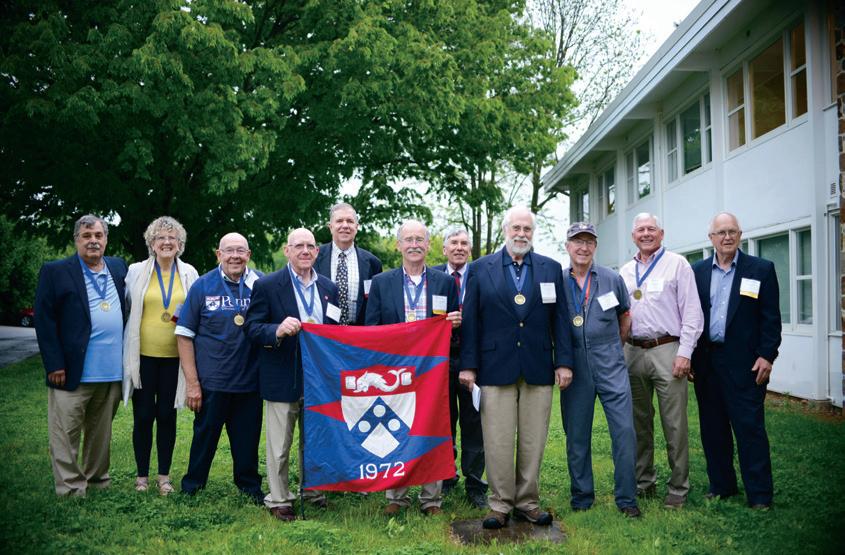
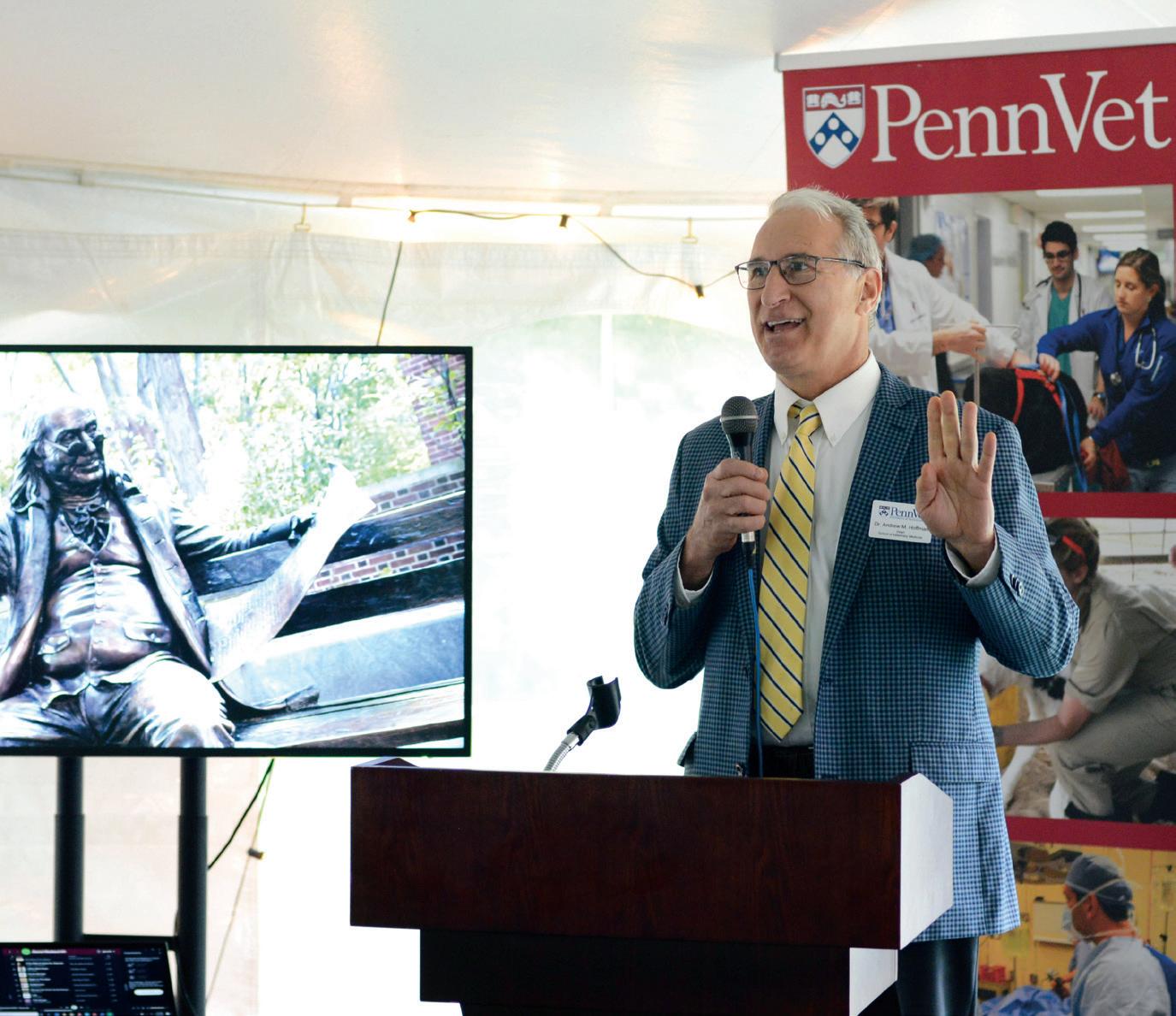
PENN’S NEW PRESIDENT M. ELIZABETH “LIZ” MAGILL

Liz Magill assumed her duties as the University of Pennsylvania’s ninth president on July 1, 2022. “It’s an enormous privilege, and a huge responsibility,” Magill told Penn Today . “I firmly believe that Penn has, does, and will continue to change the world for the better.”
Magill comes to Penn after serving as executive vice president and provost at the University of Virginia and, prior to that, as the Richard E. Lang Professor and Dean of Stanford Law School. A scholar of administrative and constitutional law, Magill is a Fellow of the American Academy of Arts and Sciences and a member of the American Law Institute. Her articles have been published in leading law reviews, and she has won several awards for her scholarly contributions.
Magill received her bachelor’s degree in 1988 from Yale University, and her law degree in 1995 from the University of Virginia’s School of Law. She served as a senior legislative assistant for energy and natural resources for U.S. Senator Kent Conrad, and later clerked for Judge J. Harvie Wilkinson III of the U.S Court of Appeals for the Fourth Circuit and then for U.S. Supreme Court Justice Ruth Bader Ginsburg.
To learn more about President Magill, go to https://president.upenn.edu/meet-president.

Penn Vet’s Opportunity Scholarship Program Celebrating 24 Years of Success and Still Going Strong
More than 100 students, faculty, alumni, and supporters gathered on April 23 at the Greathouse at Loch Nairn in Avondale, Pennsylvania, to reconnect with the Opportunity Scholarship (OS) community. It was a perfect evening of mingling and networking with students, mentors, sponsors, and alumni who are a key component of this unique scholarship program. Established in 1998 by Dr. Charles Raker, V’42, the OS program is built upon the values of caring, compassion, commitment, and communication. In addition to financial support, the OS program offers a structured platform for mentorship opportunities between Penn Vet alumni and students.
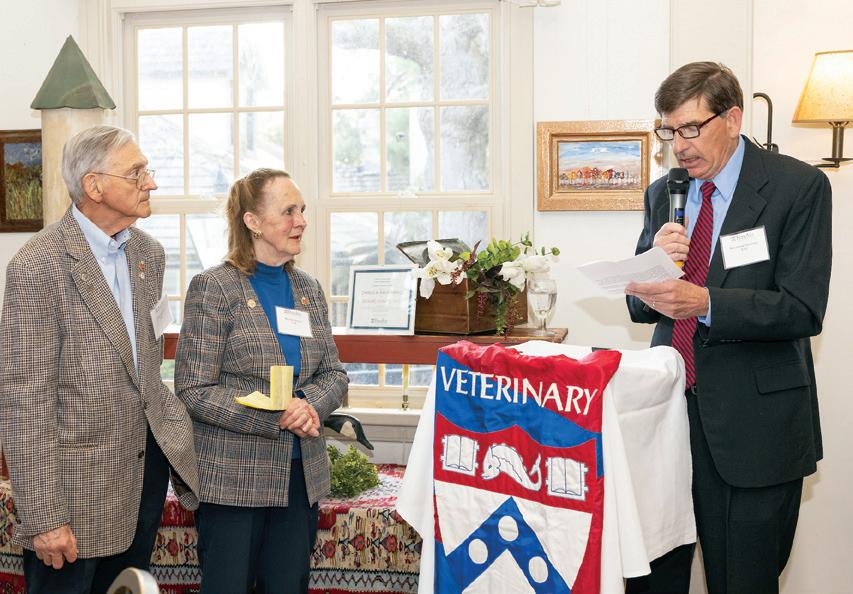
PENN VET COMMUNITY CELEBRATES LIFE OF DR. ROBERT R. MARSHAK
DEAN EMERITUS OF THE
SCHOOL OF VETERINARY
MEDICINE
At the Allam House at New Bolton Center, family and friends celebrated the life and impact of Dr. Robert Marshak at a memorial event held on June 25.
A pioneering veterinarian and academic, Marshak served the School for more than 30 years before retiring in 1987. He was beloved by generations of students, alumni, and faculty for his enduring devotion to the University of Pennsylvania and Penn Vet communities.
Marshak died on October 19, 2020. The celebration of life event was delayed almost two years due to the coronavirus pandemic. It was held in early summer as in-person school events returned, allowing more than 130 family members, friends, faculty, and former students to celebrate Marshak’s incredible impact together.
In his welcome, Dean Andrew Hoffman set the stage for remembrances, reminding attendees of Marshak’s “transformative influence on veterinary medicine.”
Former colleagues, family, and friends offered remembrances of Marshak, including Dr. Alan Kelly, Vernon Hill, Dr. Ralph Brinster, Dr. Aaryn Gottesfeld, Dr. Don Abt, Dick Newpher, Dr. Laurie Landeau, Dr. Mike Kotlikoff, and Marshak’s son, Dr. Richard Marshak.
Among many touching moments, the celebration of the dean's life concluded with the musical interlude Va, Pensiero by Giuseppe Verdi and a toast by Dr. Richard Marshak.

CLAIRE BRUNO
ASSISTANT DEAN OF ADMISSIONS AND STUDENT LIFE
Claire Bruno, a higher education professional with more than 18 years of recruitment experience, joined Penn Vet as its new assistant dean of admissions and student life in July.
Bruno comes to Penn Vet from Villanova University’s School of Business, where she served as assistant dean of graduate admissions and oversaw that institution’s wide-ranging recruitment plans for 12 graduate programs, including Villanova’s MBA, Executive MBA, and specialized master’s programs. Prior to her appointment as assistant dean in 2020, she served as that school’s director of graduate admissions, and director of diversity initiatives. Bruno previously held admissions positions at the University of Pennsylvania’s Wharton School and at Temple University’s Fox School of Business.
As assistant dean of admissions and student life, Bruno will be responsible for delivering visionary leadership to achieve strategic recruitment, retention, and graduation goals and overseeing all aspects of admissions, financial aid, and student life. She will also lead best practices and benchmarking initiatives to measure progress toward strategic enrollment objectives, as well as support student academic success.
“Claire has an outstanding record of achievement. She brings extensive expertise in graduate admissions and firsthand knowledge of the value of inclusion and diversity efforts,” said Andrew M. Hoffman, Gilbert S. Kahn Dean of Veterinary Medicine. "Her belief in our relationship-oriented culture, and in the unique nature of our veterinary program, will be essential as we prepare students for whatever career pathways they invent, whether in private practice or research, academia or public policy, or some unique combination of all.”
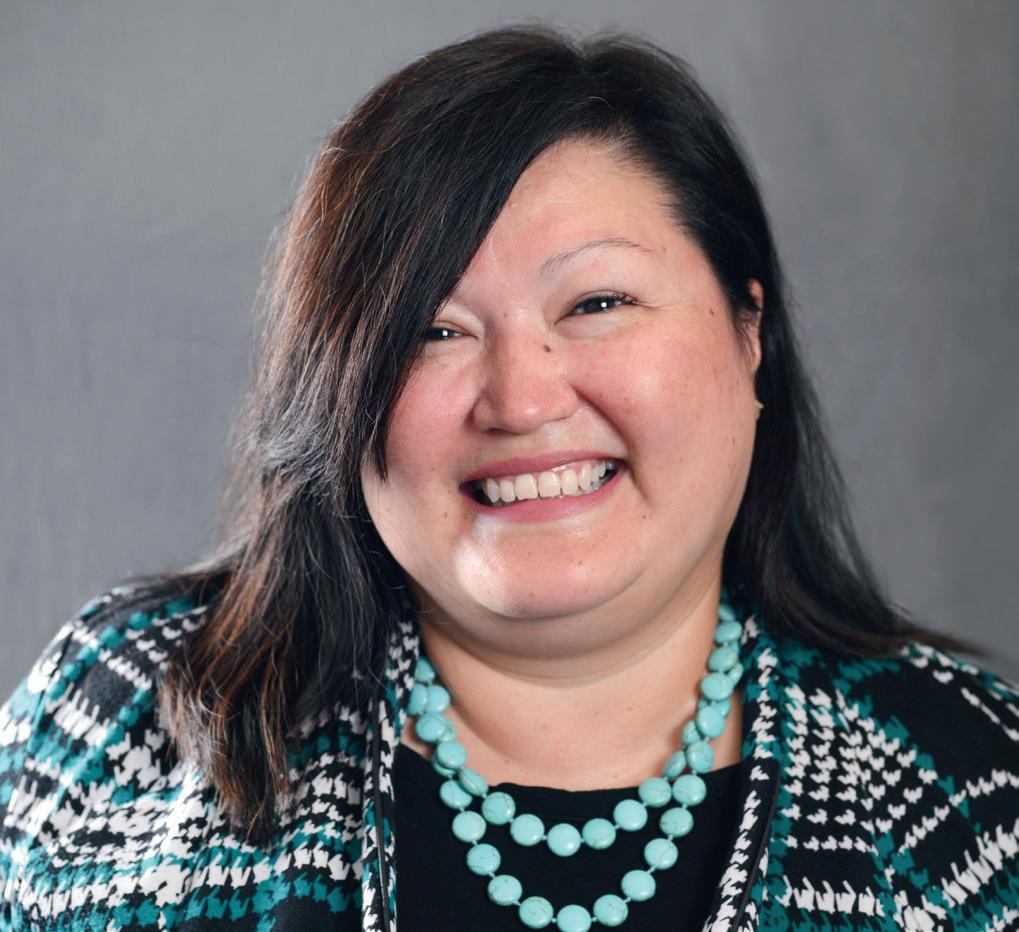
Bruno’s most significant accomplishments at Villanova include a yield program that penetrated smaller recruiting markets in the southern and midwestern regions of the United States, a substantive programmatic posture that integrated diversity and inclusion within Villanova’s business school culture, and precise corporate outreach that accelerated employer desirability for Villanova business school students.
“I am thrilled and honored to join Penn’s School of Veterinary Medicine,” said Bruno. “The school has a dynamic and forward-looking educational mission, and a vision for the future of veterinary medicine. I welcome this extraordinary opportunity to work with the entire Penn Vet community in preparing our students for a world characterized by rapid medical discovery and escalating societal needs.”

PENN VET HONORS GRADUATES AT 2022 CEREMONY FOR ANIMAL WELFARE AND BEHAVIOR PROGRAM
Twelve Master of Science (MS) degree recipients, and eleven graduate certificate recipients were honored on July 29 at Hill Pavilion during the Animal Welfare and Behavior Program’s graduation weekend.
The ceremony and weekend festivities marked the first time that the graduates gathered as an in-person cohort on campus. This impressive group persevered and prioritized their education during a particularly challenging and uncertain time.
Organizations with MS graduates taking part in the ceremony included Tyson Foods, Penn Law, and the University of California, as well as several private practices. Certificate recipients represented the University of Pittsburgh, the ASPCA, Sea World, Saul High School, private practices, farm operations, and non-profits. Professor Emeritus of Ethics and Animal Welfare Dr. James Serpell gave the keynote address, and Kathryn Deans-Schaub delivered the student address.
Launched in 2020, the online Animal Welfare and Behavior Graduate Certificate and MS programs allow students to tailor their studies to fit their education needs, offering unique opportunities to explore issues affecting animal welfare within the veterinary sector.
PENN VET WORKING DOG CENTER CELEBRATES 10TH ANNIVERSARY
Penn Vet’s Working Dog Center celebrated 10 years of building canine scent detection teams. To date, more than 150 dogs have gone through the center, deployed to complement safety and public health services in communities across the country.
On September 11, more than 500 partners and leaders, staff, canine handlers, fosters, and volunteers attended the special three-hour event at the Pennovation Center. Programming included canine demonstrations, opportunities to engage with handlers and fosters, and research poster presentations.
Founder and Director Dr. Cynthia Otto gave the keynote address, reflecting not only on the center’s accomplishments, but also on the vision and direction for the future. Otto was part of the Pennsylvania FEMA Task Force that responded to the September 11, 2001, attack on lower Manhattan. She spent 10 days at Ground Zero providing veterinary care to the search and rescue dogs who worked the rubble piles.
“Dogs in general make us whole,” said Otto, who calls the Working Dog Center a legacy of 9/11. “But working dogs make us safe and whole.”
“ DOGS IN GENERAL MAKE US WHOLE, BUT WORKING DOGS MAKE US SAFE AND WHOLE.”
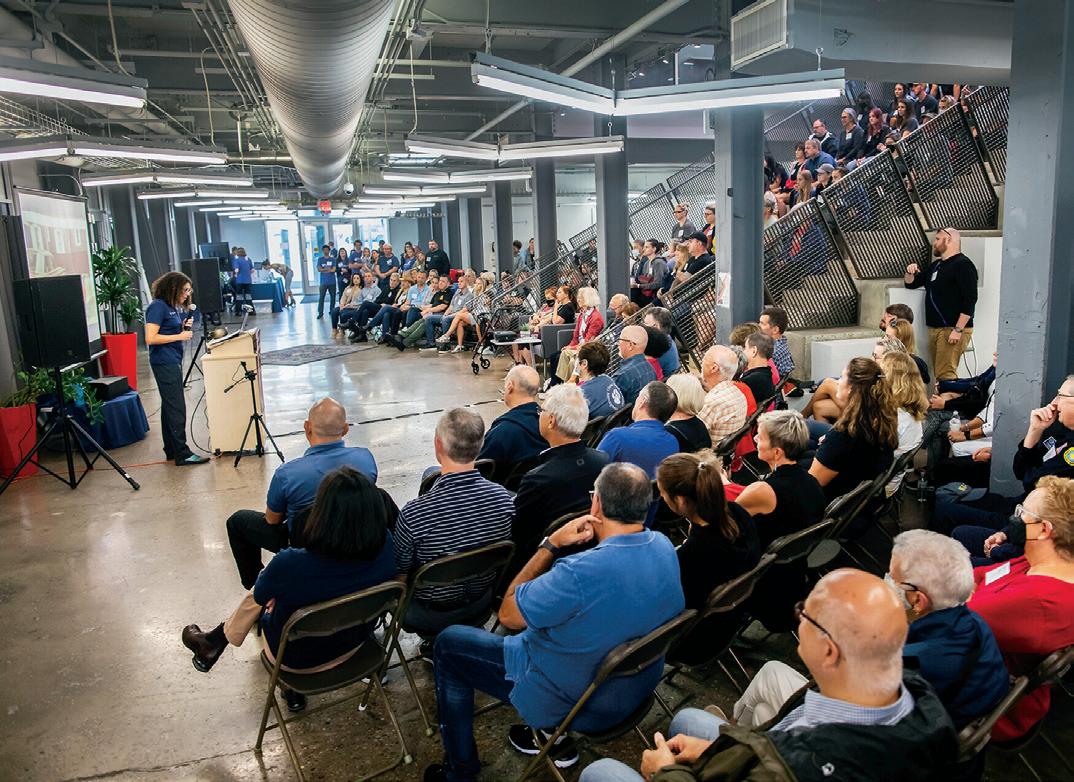
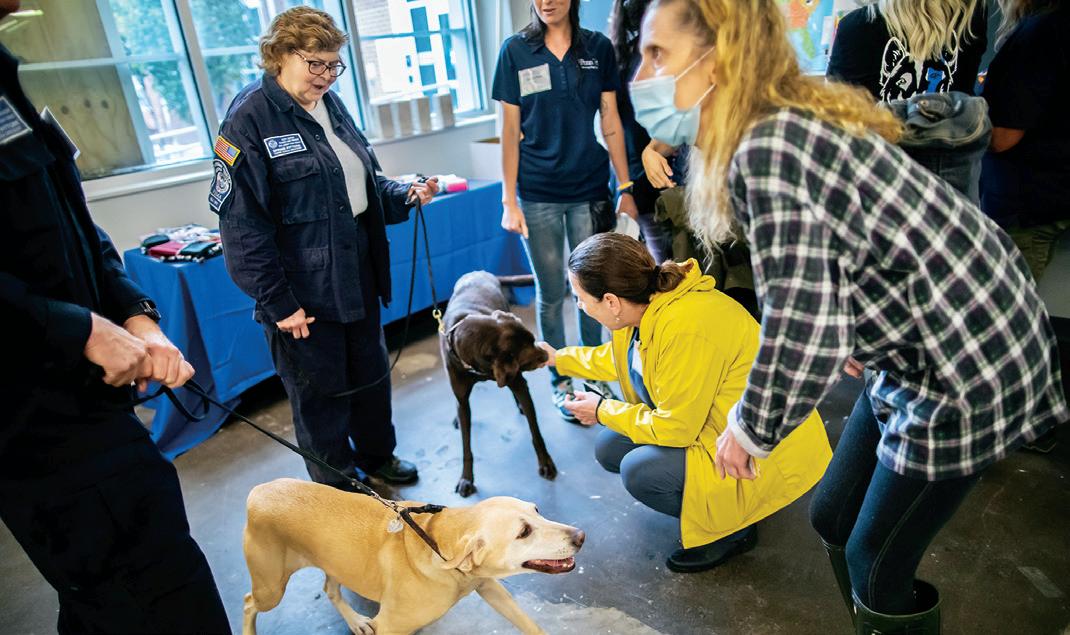

BOARD OF ADVISORS WELCOMES MICHAEL DANA, WG’85
Penn Vet is delighted to welcome Michael Dana, WG’85, to the Board of Advisors. Dana is president and chief executive officer of Onex Real Estate Partners and SkyView Companies and offers more than 35 years of experience in commercial real estate, including site selection, investment and development, and asset management. He held previous roles at Credit Suisse First Boston, where he headed the North American Real Estate, Investment Banking unit, and at Equitable Real Estate, where he led the capital markets division.
Dana served as a member of the Board of Trustees of the University of Maryland for 18 years and was co-chair of the Baltimore Incentive Program, an education access initiative for students from public high schools in Baltimore, and Maryland’s Montgomery and Prince George’s Counties. Dana received his marketing degree from the University of Maryland, and his MBA from the University of Pennsylvania’s Wharton School.
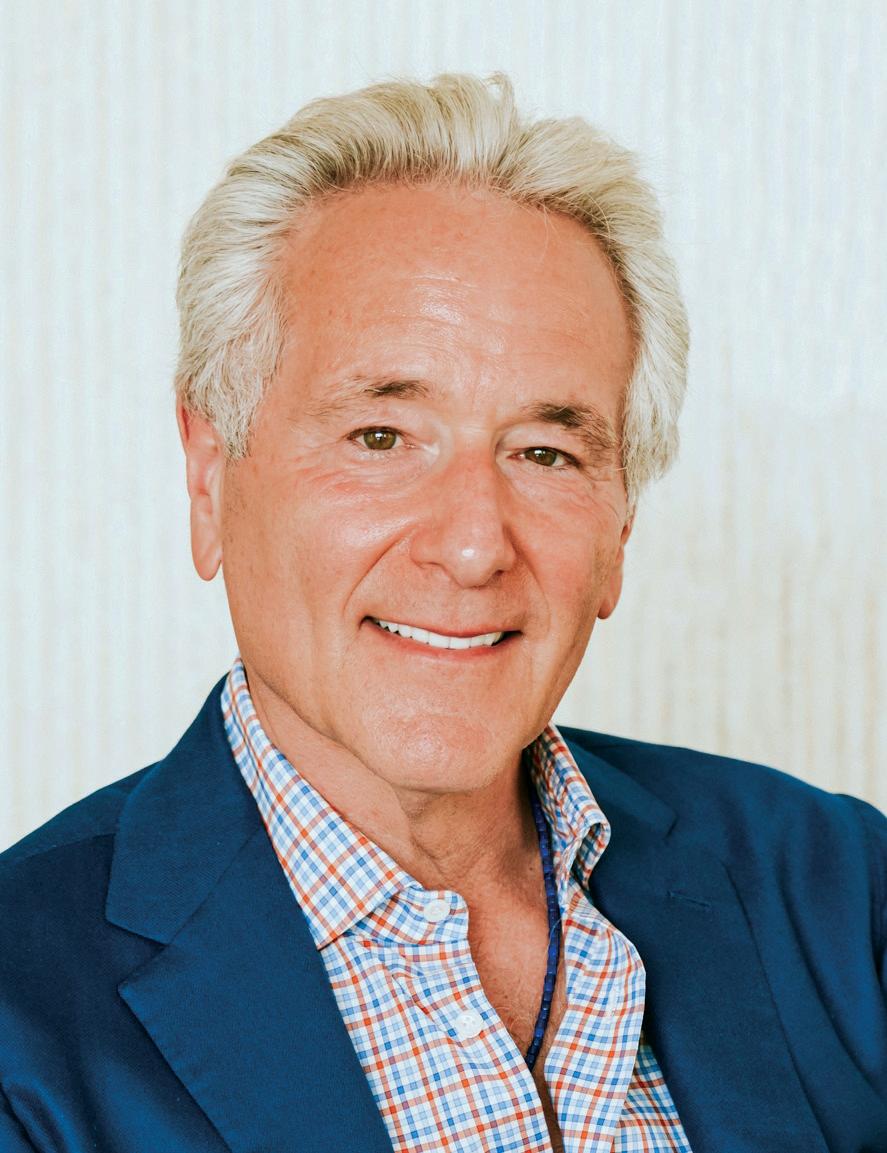
PENN VET IS DELIGHTED TO WELCOME MICHAEL DANA, WG’85, TO THE BOARD OF ADVISORS.
FACULTY RETIREMENTS
The 2021–22 academic year saw the retirement (and pandemic-delayed celebrations) of nine faculty members with years of distinguished service who have played a significant role in shaping Penn Vet into the premiere institution it is today.
Kenneth Drobatz, DVM, MS , professor of critical care, Department of Clinical Sciences and Advanced Medicine
David Galligan, VMD, MBA , (retired 2020–21 academic year) professor of animal health economics, Department of Clinical Studies at New Bolton Center
Robert Greenberg, PhD , research associate professor, Department of Pathobiology
James “Sparky” Lok, PhD, MS , professor of parasitology, Department of Pathobiology
Virginia Reef, DVM , (retired 2020–21 academic year), professor of medicine, Department of Clinical Studies at New Bolton Center
Dean Richardson, DVM , Charles W. Raker Professor of Equine Surgery, Department of Clinical Studies at New Bolton Center
Dieter Schifferli, Matura, DVM, Dr Med Vet, PhD , professor of microbiology, Department of Pathobiology
Corinne Sweeney, DVM , professor of medicine, Department of Clinical Studies at New Bolton Center
Raymond Sweeney, VMD , professor of medicine, Department of Clinical Studies at New Bolton Center
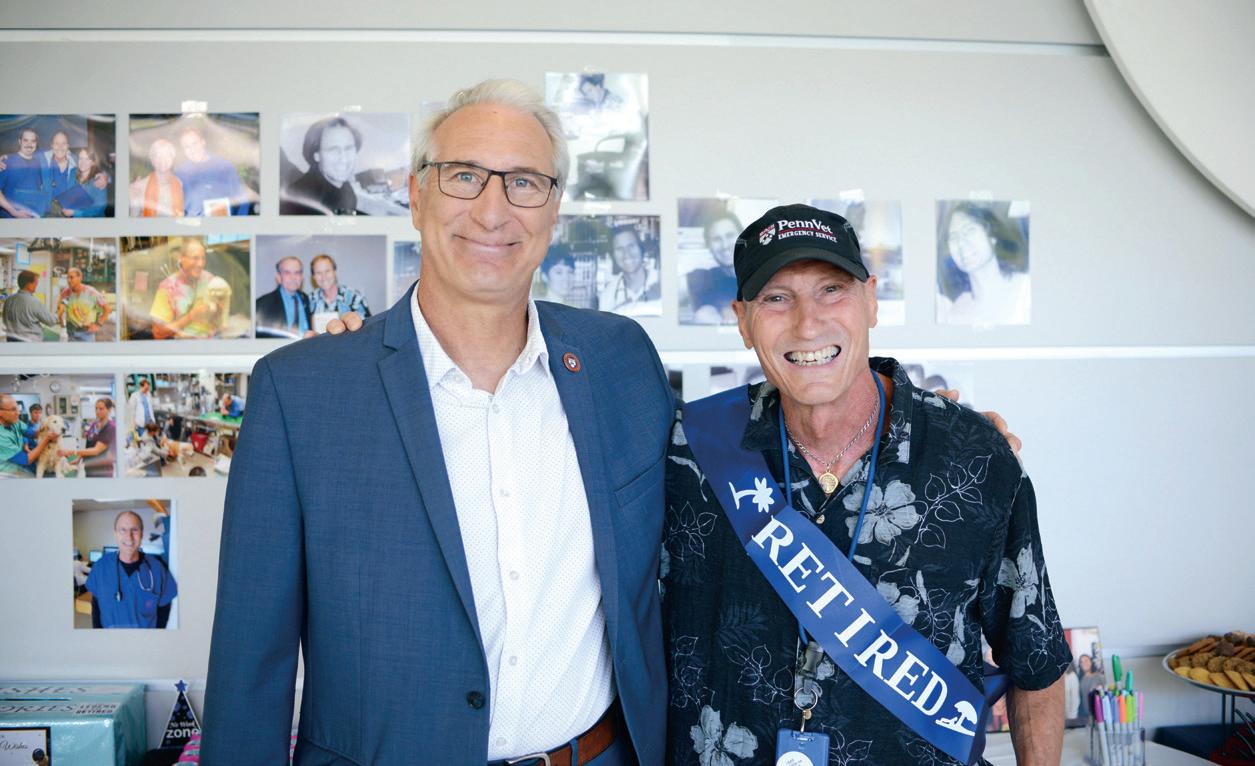
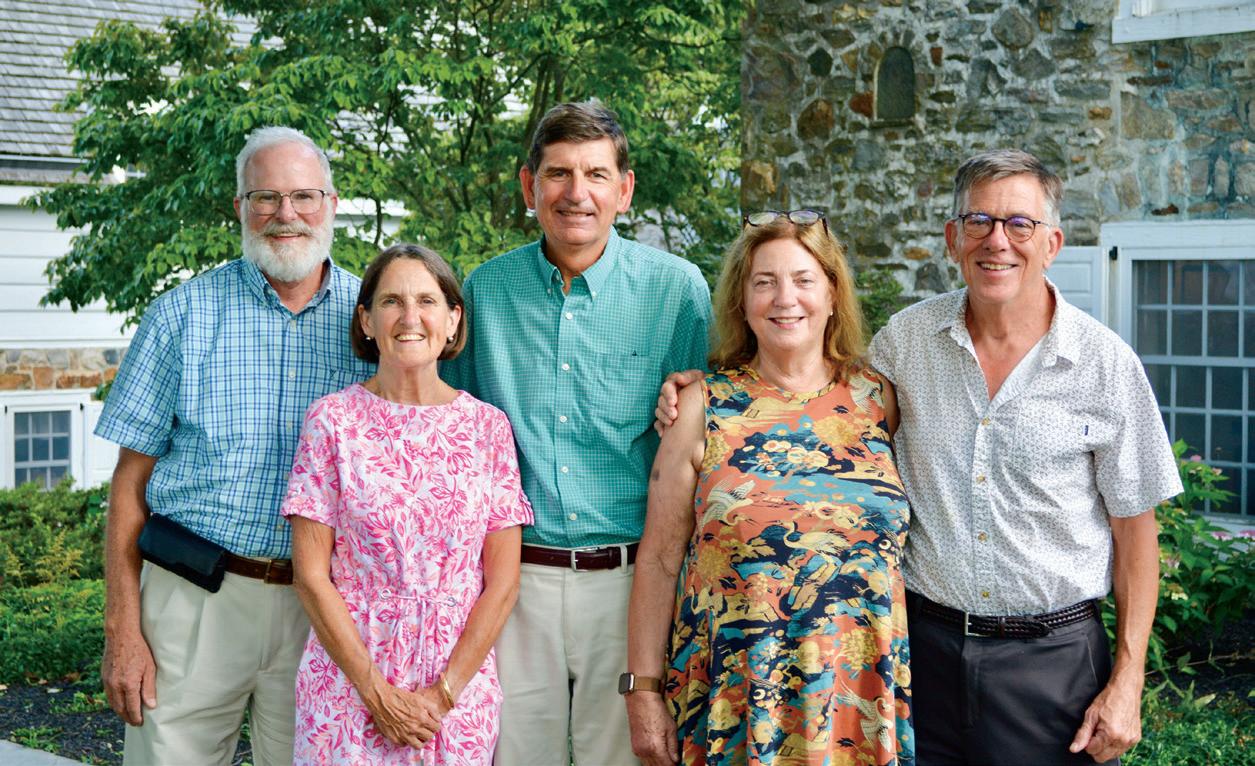
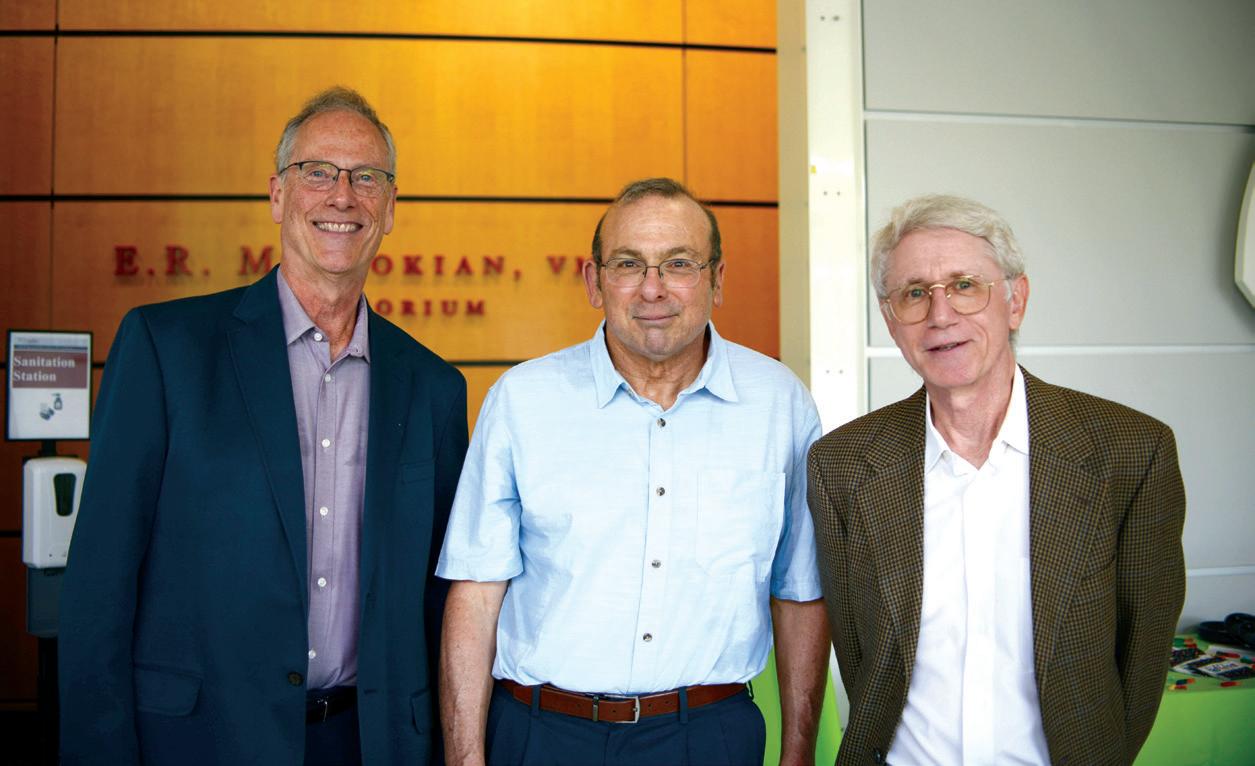
Dean Andrew Hoffman and Kenneth Drobatz
(Left to right): David Galligan, Corinne Sweeney, Raymond Sweeney, Virginia Reef, Dean Richardson
(Left to right): James “Sparky” Lok, Robert Greenberg, Dieter Schifferli
Gary Althouse, DVM, PhD, Dipl. ACT, presented an invited talk in June at the 13th Biennial Conference of the Association of Applied Animal Andrology (4A) in Bologna, Italy. He also accepted a nomination to join 4A’s Executive Board in 2022.
Montserrat Anguera, PhD, published Jiwrajka N and Anguera MC, “The X in seX-biased Immunity and Autoimmune Rheumatic Disease,” Journal of Experimental Medicine, 2022, https://doi. org/10.1084/jem.20211487. She also published Lovell CD and Anguera MC, “Long Noncoding RNAs That Function in Nutrition: Lnc-ing Nutritional Cues to Metabolic Pathways,” Annual Review of Nutrition, 2022, https://doi. org/10.1146/ annurev-nutr-062220-030244.
Lillian Aronson, VMD, published Small Animal Surgical Emergencies, second edition (Wiley Blackwell, 2022). She also published Aronson LR, Phillips H, and Oyama MA, “Characterization of Preoperative Cardiovascular Status and Association with Outcome
Following Feline Renal Allograft Transplantation: 166 Cases,” JAVMA, 2022, https://doi.org/10.2460/ javma.22.03.0120. She also published Wilson J, Douglas H, and Aronson LR, “Anesthetic Management of Three Dogs Undergoing Renal Transplantation Surgery,” Veterinary Record, 2022.
Matthew Atherton, BVSc, PhD, published Gedney A, Salah P, Mahoney JA, Krick E, Martins R, Scavello H, Lenz JA, and Atherton MJ, “Evaluation of the Anti-Tumor Activity of Coriolus Versicolor Polysaccharopeptide (I’m Yunity®) Alone or in Combination with Doxorubicin for Canine Splenic Hemangiosarcoma,” Veterinary and Comparative Oncology, 2022, https://doi.org/10.1111/vco.12823. He also published Atherton MJ and Mason NM, “A Bitesize Introduction to Canine Hematologic Malignancies,” Blood Advances, 2022, https://doi.org/10.1182/ bloodadvances.2021005045.
Alireza Badiei, PhD, published Badiei A, Beltran WA, and Aguirre GD, “Altered Transsulfuration Pathway Enzymes and Redox Homeostasis in Inherited Retinal Degenerative Diseases,” Experimental Eye Research, 2022, https://doi.org/10.1016/j. exer.2021.108902.
William Beltran, DVM, presented “Proof of Concept Studies of Gene Therapy for NPHP5-LCA in a Canine Model: Efficacy of Intervention at Advanced Stages of Disease and Long-Term Restoration of Vision” at the Cell/Gene Therapy Meeting in Denver in April 2022. He also presented “Long-Term Follow-Up of Gene Therapy for NPHP5-LCA in a Canine Model Shows Restoration of Photoreceptor Function and Vision for > 5 Years” at the Association for Research in Vision and Ophthalmology Meeting in Denver in May 2022.
Tonya Bennett, director of educational technology, was recognized by EdTech Magazine as one of “30 Higher Education IT Influencers to Follow.” And, along with Penn Vet educational technology team members Brendan Gallagher and Elona Canaj, Bennett was awarded the 2022 Model of Excellence Award for her role in the university’s cross-campus Penn Zoom team that supported COVIDinduced, online teaching.
Eleanor Boyd retired after 23 years of service as senior medical records associate at New Bolton Center.
Leonardo Brito, DVM, PhD, DACT, was appointed deputy editor of Theriogenology, a publication specializing in animal reproduction that is consistently ranked among the top veterinary journals. In addition, he was appointed chair of the Job Task Analysis Committee and member of the Exam Scoring Committee of the American College of Theriogenology. He also presented “Advances in Sexed Semen Production” for the animal sciences graduate program at the Universidade do Oeste Paulista, Brazil.
FACULTY & STAFF UPDATES
Lee Brittingham retired after 38 years of service in the clinical lab at New Bolton Center.
Anthony Carty, DVM, MS, was hired as associate professor of laboratory animal medicine in the Department of Pathobiology.
Ana Castejon-Gonzalez, DVM, was named a fellow of the American Veterinary Dental College Oral and Maxillofacial Surgery.
Candice Chu, DVM, PhD, DACVP, was accepted into the Penn Faculty Pathways Program, a career leadership program for tenure and clinician-educator track assistant professors in science, technology, engineering, math & medicine (STEMM). She also received a McCabe Pilot Award for “Comparison of Sample Volume and Isolation Methods for Urinary Extracellular Vesicles Derived MicroRNA for Transcriptomic Biomarker Studies in Cats with Chronic Kidney Disease.”
Sarah Colmer, VMD, received the American Association of Veterinary Clinicians (AAVC) 2022 Resident Award. Winners are chosen by the AAVC Awards Committee based on evidence of sustained excellence throughout the clinical residency in clinical service, clinical teaching, client communications, and research.
Valerie Dufour, DVM, MSc, presented “Surgical Technique, Histopathology and Visual Outcome Following Sector Iridectomy for Uveal Melanocytic Mass in the Dog: 13 Cases” at the European College of Veterinary Ophthalmologists Meeting in Salzburg, Austria in June 2022.
Brian Flesner, DVM, MSc, will serve as chair of the Osteosarcoma Research Scientific Advisory Board at Morris Animal Foundation.
Hannah Galantino-Homer, VMD, PhD, DACT, received an outstanding poster award for “Expression of Equine Keratins K42 and K124 Is Restricted to the Hoof Epidermal Lamellae (Nail Bed Epithelium) of Equus Caballus” at the 2022 Gordon Research Conference on Intermediate Filaments, Mount Snow, Vermont, on June 5–10, 2022.
Alexa Gray, PhD, presented “Surgical Procedure and Applicability of the Orbit Subretinal Delivery System (SDS)™ in the Normal Adult Canine Eye” at the Association for Research in Vision and Ophthalmology Meeting in Denver in May 2022. She also presented “Evaluation of the Orbit Subretinal Delivery System (SDS)™ in the Normal Adult Canine Eye” at the European College of Veterinary Ophthalmologists Meeting in Salzburg, Austria, in June 2022. In addition, she published Gray AP, Sato Y, Miyadera K, and Aguirre GD,
“Novel Insights into Chorioretinal and Juxtapapillary Colobomas by Optical Coherence Tomography,” Veterinary Ophthalmology, 2022, https://doi.org/10.1111/vop.12970.
Maureen Griffin, DVM, received a $30,000 McCabe Pilot Award for “Sentinel Lymph Node Mapping for Canine Apocrine Gland Anal Sac Adenocarcinoma.”
Jamie Guiberson, CVT, VTS-EVN, presented “Horse Body Basics” at the Horse Sense community outreach event for the Amish sponsored by the Standardbred Retirement Foundation. Alycia Crandall, DVM, presented “Horse Emergencies” and Nicole Scherrer, DVM, presented “Daily and Preventative Care to Keep Horses Well.”
David Levine, DVM, received the CS-NBC Teaching Excellence Award.
Timothy Manzi, VMD, Diplomate ACVR, Diplomate ACVR-EDI, was appointed clinical assistant professor of diagnostic imaging in the Department of Clinical Studies-New Bolton Center, School of Veterinary Medicine as of April 2022.
Anna Massie, DVM, received a McCabe Pilot Award for “Assessment of Microdamage and Peri-Prosthetic Healing Related to Zinc-Coated Implants in a Rabbit Femur Model.”

Igor Brodsky, PhD, Named Inaugural
Robert R. Marshak Professor
Dean Andrew Hoffman has named Igor Brodsky, PhD, as the inaugural Robert R. Marshak Professor.
Brodsky’s research focuses on the interplay of bacterial virulence mechanisms and host innate immune recognition strategies, including how bacterial pathogens are sensed by host cells, how this sensing contributes to antimicrobial immune defense, and how bacterial pathogens evade innate immune recognition. Brodsky is a member of several graduate groups and interdisciplinary research groups at Penn. He has received continuous National Institutes of Health (NIH) support and is currently principal investigator (PI) on two R01 grants and one R21 grant, and mentor or co-PI on several other grants from the NIH, the National Science Foundation, and the American Heart Association.
The professorship is named in honor of the late Dean Emeritus Dr. Robert R. Marshak.
Keiko Miyadera, DVM, PhD, published Miyadera K, Santana E, Roszak K, Iffrig S, Visel M, Iwabe S, Boyd RF, Bartoe JT, Sato Y, Gray A, Ripolles Garcia A, Dufour V, Byrne LC, Flannery JC, Beltran WC, and Aguirre GD, “Targeting ON-Bipolar Cells by AAV Gene Therapy Stably Reverses LRIT3-Congenital Stationary Night Blindness,” Proceedings of the National Academy of Sciences of the United States of America, 2022, https:// doi.org/10.1073/pnas.2117038119.
Louise Moncla, PhD, was hired as assistant professor of pathobiology.
Lisa Murphy, VMD, DABT, was promoted to professor of toxicology on July 1, 2022.
Cris Navas De Solis, LV, PhD, was part of the Organizing Committee for the Havemeyer Conference for Poor Performance in Horses in Gallatin Gateway, Montana, in May 2022. He also organized the workshop “Translating Elite Human Coaching to Equine Sports with the Equine High-Performance Sports Group” in March 2022. In addition,
he published Boutet BG, Gordon SG, De Solis CN, Lepiz MA, Saunders AB, and Wesselowski S, “Feasibility and Clinical Utility of Transvenous Intracardiac Echocardiography in Conscious, Sedated Horses,” Journal of Veterinary Cardiology, 2022, https://doi.org/10.1016/j. jvc.2022.05.002.
Kevin Niedringhaus, BVetMed, PhD, was hired as assistant professor of wildlife pathology in the Department of Pathobiology.
Eric Parente, DVM, received the House Officer Mentoring Award.
Blythe Philips, VMD, was hired as assistant professor of laboratory animal medicine in the Department of Pathobiology.
Dipti Pitta, MVSc, PhD, was appointed to the fourteenth cohort of the Penn Fellows Program, a leadership development program for select mid-career faculty.
Enrico Radaelli, DVM, PhD, DECVP, published Kalbasi A, Siurala M, Su LL, Tariveranmoshabad M, Picton LK, Ravikumar P, Li P, Lin JX, EscuinOrdinas H, Da T, Kremer SV, Sun AL, Castelli S, Agarwal S, Scholler J, Song D, Rommel PC, Radaelli E, Young RM, Leonard WJ, Ribas A, June CH, and Garcia KC, “Potentiating Adoptive Cell Therapy Using Synthetic IL-9 Receptors,” Nature, 2022, https:// doi.org/10.1038/s41586-022-04801-2.
FACULTY & STAFF UPDATES
Anna Ripolles-Garcia, PhD, presented “Triple Drug Immunosuppression for Xenotransplantation of Human Photoreceptor Precursor Cells in the Canine Retina” at the Association for Research in Vision and Ophthalmology Meeting in
Denver in May 2022. She also presented “Retinal Vascular Plexuses Are Unequally Affected in Canine Inherited Retinal Degenerations” at the European College of Veterinary Ophthalmologists Meeting in Salzburg, Austria, in June 2022.
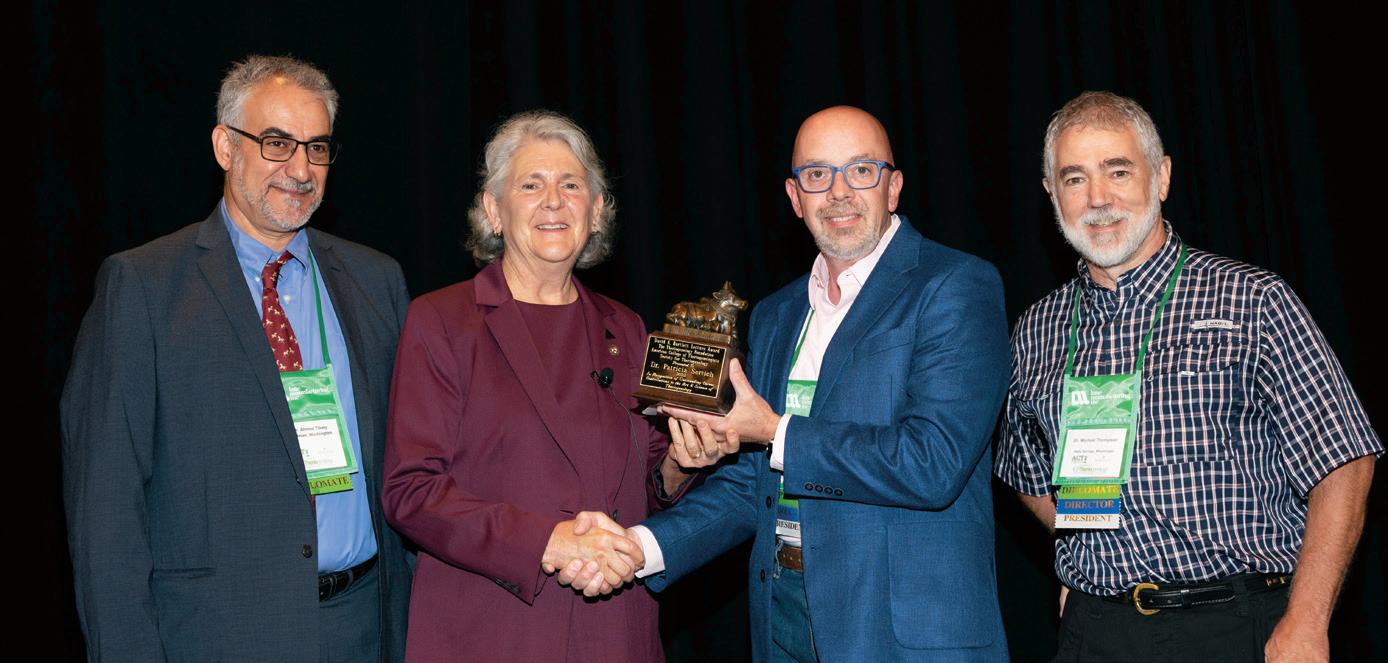
Patricia L. Sertich, VMD , associate professor-clinician educator in reproduction, was presented the 2022 David E. Bartlett Lifetime Achievement Award at the Society for Theriogenology Annual Conference on July 21, 2022, in Bellevue, Washington.
The annual award is intended to cement the efforts of the society and the American College of Theriogenologists toward common goals in animal reproduction and to reward and inspire excellence, improve the visibility of theriogenology, and recognize the efforts of the college’s founders, particularly Dr. David E. Bartlett, its first president. Among his many accomplishments, Bartlett was responsible for deriving the terms “theriogenology” and “theriogenologists,” and he was instrumental in gaining hard-won AVMA recognition for the American College of Theriogenologists in 1971.
Mary Robinson, VMD, PhD, DACVCP, was an invited speaker, along with Dr. Klaus Hopster, at the ACVIM Forum on Equine Pain Management in June.
Clair Sauer, CVT, MSEd, received the Emergency and Critical Care Society 2022 Stephen Haskins Memorial Scholarship, which will allow her to represent Penn Vet nursing at the annual conference later this year.
Deborah Silverstein, DVM, DACVECC, published Gradilla SM, Balakrishnan A, Silverstein DC, Pratt CL, Fletcher DJ, and Wolf JM, “Owner Experiences with and Perceptions of Owner-Witnessed CPR in Veterinary Medicine,” Journal of Veterinary Emergency and Critical Care, 2022, https://doi. org/10.1111/vec.13180.
Paolo Silvestrini, DVM, MSc, PhD, received the Resident Award for Outstanding Teaching.
Joann Slack, DVM, received the Robert Whitlock Award.
Boris Striepen, PhD, received an European Molecular Biology Organization postdoctoral fellowship to Aurelia Ballestra and a Swiss National Science Foundation postdoctoral fellowship to Sebastian Shaw. He published English ED, Guerin A, Tandel J, and Striepen B, “Live Imaging of the Cryptosporidium Parvum Life Cycle Reveals Direct Development of
Male and Female Gametes from Type I Meronts,” PLoS Biology, 2022, https://doi.org/10.1371/journal. pbio.3001604. He also published Gibson AR, Sateriale A, Dumaine JE, Engiles JB, Pardy RD, Gullicksrud JA, O’Dea K, Beiting DP, Hunter CA, and Striepen B, “A Genetic Screen Identifies a Protective Type III Interferon Response to Cryptosporidium That Requires TLR3 Dependent Recognition,” PLoS Pathogens, 2022, https://doi. org/10.1371/journal.ppat.1010003. He also delivered the opening keynote for the 2022 Woods Hole Immunoparasitology meeting.
Caroline Sobotyk de Oliveira, VMD, MSc, PhD, was hired as assistant professor of clinical parasitology in the Department of Pathobiology.
Raghavi Sudharsan, PhD, received a McCabe Fund Pilot Award for “Functional Characterization of a Novel Prolactin Isoform in Inherited Retinopathies using a Knockdown Approach.”
Kei Takahashi, PhD, presented “Molecular Characterization of MAP9 in Primary Cilia as a Modifier of Canine RPGRIP1 Cone-Rod Dystrophy” at the Association for Research in Vision and Ophthalmology Meeting in Denver in May 2022.
Vincent Thawley, VMD, was promoted to associate professor of clinical emergency and critical care.
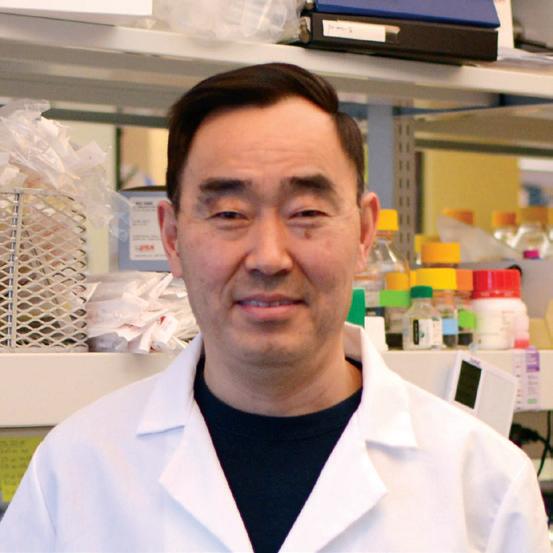
P. Jeremy Wang, MD, PhD, Named Ralph L. Brinster President’s Distinguished Professor
Dean Andrew Hoffman has named Dr. P. Jeremy Wang, an internationally recognized reproductive biologist, as the Ralph L. Brinster President’s Distinguished Professor.
Wang holds an extraordinary record of scholarly accomplishments. His research program focuses on the cellular, molecular, genetic, and epigenetic controls of meiosis, the process of cell division that is unique to germline cells and influences genetic diversity. Wang seeks to understand the generation of gametes through in vitro meiosis that could remedy infertility in animals and humans, and identify abnormal meiosis that can result in spontaneous pregnancy loss or human congenital conditions. He has received National Institutes of Health (NIH) support totaling $16 million at Penn and is currently principal investigator on two NIH grants.
Established in 2017 through a gift from former Penn Vet Board of Advisor Henrietta Alexander, the Ralph L. Brinster President’s Distinguished Professorship was named in honor of Brinster, Penn Vet’s Richard King Mellon Professor of Reproductive Physiology.
Charles Vite, DVM, PhD, became chair of the Canine Committee and a member of the Board of Trustees of the Seeing Eye in December. He spoke about “Markers of Disease Severity and Progression in Large Animal Models of Neurodegenerative Disease,” at the Experimental Biology ACVP/ASIP
symposium in Philadelphia in April 2022. And he spoke about “Optimizing Intracisternal Magna Gene Therapy for Niemann-Pick Type C Disease,” at the Michael, Marcia, and Christa Parseghian Scientific Conference for NiemannPick Type C Research in Tucson in May 2022.
FACULTY & STAFF UPDATES
GRANTS
Jeremy Wang, MD, PhD, published Guan Y, Lin H, Leu NA, Ruthel G, Fuchs SY, Busino L, Luo M, and Wang PJ, “SCF Ubiquitin E3 Ligase Regulates Meiotic DNA DoubleStrand Breaks in Early Meiotic Recombination,” Nucleic Acids Research, 2022, https://doi. org/10.1093/nar/gkac304. He also published Lin H, Cheng K, Kubota H, Lan Y, Riedel SS, Kakiuchi K, Sasaki K, Bernt KM, Bartolomei MS, Luo M, and Wang PJ, “Histone Methyltransferase DOT1L Is Essential for Self-Renewal of Germline Stem Cells,” Genes & Development, 2022, http://www. genesdev.org/cgi/doi/10.1101/ gad.349550.122.
Amanda Watkins, VMD, became a large animal surgery resident at New Bolton Center. She received the NIH Clinical and Translational Science Award, a two-year research fellowship for clinical specialists working across inter-disciplinary and comparative research teams.
Elizabeth Woodward, PhD, was promoted to clinical associate professor in the Department of Biomedical Sciences.
Jorge Alvarez, PhD, received a two-year $300,000 grant from the Stanford Uytengsu-Hamilton 22q11 Neuropsychiatry Research Program (UH22QEXTFY22) for Dysregulation within the Brain-Immune Axis in the 22q11.2 Deletion syndrome. He also received a $150,000 grant from Stanford University for Dysregulation within the BrainImmune Axis in the 22q11.2 Deletion Syndrome. The grant spans from May 1, 2022 to April 30, 2023.
Montserrat Anguera, PhD , received a $275,000 grant from the University of Pennsylvania for Sex-Dependent Regulation of Host Factors Influencing SARS-CoV-2 Infection and COVID-19 Disease. The grant spans from April 2022 to March 2024. Her collaborator is Dr. Andrew Vaughan. She also received $275,000 1 R21 AR081588-01 grant for Elucidating the Role of Dynamic X-Chromosome Inactivation
Maintenance in the Pathogenesis of Systemic Sclerosis. The grant spans from July 1, 2022 to June 2024. She is affiliated with the Anguera lab. She also received a $275,000 NIH R21 grant for Sex-Dependent Regulation of Host Factors Influencing SARS-CoV-2 Infection and COVID-19 Disease. The grant spans from April 15, 2022 to March 31, 2023. In addition, she received a $150,000 grant from the Institute for Regenerative Medicine for Generation of Live Cell Imaging System to Investigate X-linked mRNA Expression Dynamics during
the Development of the Immune System and with Immune Responses. The grant spans from July 1, 2022 to June 30, 2024. She also received a $8,000 grant from the Center for Undergraduate Research and Fellowships (CURF) for CURF undergraduate mentoring. The grant spans from April 1, 2022 to March 31, 2023.
Lillian Aronson, VMD, received a one-year $165,928 grant from Purina for Untargeted Plasma Metabolomics and Biomarker, DNA, and Microbiome Assessments in Cats with and without Chronic Kidney Disease. Her collaborators are Dr. Johnny Li, Dr. Mary Beth Callan, and Dr. Ariel Mosenco. She also received a one-year $23,000 grant from EveryCat for Identification of Urinary Extracellular Vesicles-Derived MicroRNAs as Sensitive and Specific Biomarkers for Early-Stage Feline Chronic Kidney Disease. Her collaborator is Dr. Candice Chu She also received a $119,373 grant from Nestlé Purina for Untargeted Plasma Metabolomics and Biomarker, DNA, and Microbiome Assessments in Cats with and without Chronic Kidney Disease. The grant spans from January 1, 2022 to December 31, 2022.
Michael Atchison, PhD, received a $24,000 grant from Boehringer Ingelheim Pharmaceuticals for the 2022 Boehringer Ingelheim Veterinary Summer Scholars Program. The grant spans from January 1, 2022 to December 30, 2022.
Michael Atherton, BVSc, PhD, received a $711,345 NIH grant for Prognostic and Therapeutic Implications of IFNAR1 Signaling on CAR T Cell Therapy for Cancer. The grant spans from July 1, 2021 to June 30, 2026.
William Beltran, DVM, PhD, received a $250,000 grant from the Foundation for Fighting Blindness for Preclinical Evaluation of an iPSC-Derived Photoreceptor Therapeutic in Canine Model of Retinitis Pigmentosa. The grant spans from January 1, 2022 to December 31, 2022. He also received a U.S. $289,423 grant from Fighting Blindness Canada for Preclinical Evaluation of an iPSC-Derived Photoreceptor Therapeutic in Canine Models of Retinitis Pigmentosa. The grant spans from January 1, 2022 to December 30, 2023.
Andres Blanco, PhD, received a $50,000 grant from the University Research Foundation for Investigating the Role of KAT6A as a Potential Therapeutic Target in Acute Myeloid Leukemia. The grant spans from March 1, 2022 to
February 28, 2023. He also received a $50,000 Hollis Brownstein New Investigator grant from the Leukemia Research Foundation Dual Targeting of LSD1 and KAT6A to Induce Therapeutic Differentiation in AML. The grant spans from July 1, 2021 to June 30, 2022. He also received a $100,000 grant from the Margaret Q. Landenberger Research Foundation for Investigating the Role of KAT6A as a Differentiation Therapy Target MLL-Rearranged Acute Myeloid Leukemia. The grant spans from November 1, 2021 to October 31, 2023. In addition, he received a $25,000 grant from the American Association for Cancer Research for Evaluating KAT6A as a Novel Target for Non-APL AML Differentiation Therapy. The grant spans from December 1, 2021 to November 30, 2022.
Leonardo Brito, DVM, PhD, DACT, received a $56,262 grant from the Pennsylvania Center for Poultry and Livestock Excellence For Swine Resistome After Antibiotic Therapeutic Intramuscular Treatment or Artificial Insemination with Semen Extender Containing Preservative-Level Antibiotics. The grant spans from June 2022 to April 2023. His collaborators are Dr. Dipti
Pitta, Dr. Gary Althouse, and Dr. Thomas Parsons. He also received a $10,650 grant from the AKC Canine Health Foundation for Artificial Intelligence and Machine Learning for Evaluation of Dog Sperm Morphology. The grant spans from June 2022 to June 2023. He also received a $5,000 grant from the Theriogenology Foundation for Artificial Intelligence and Machine Learning for Evaluation of Bull Sperm Morphology. The grant spans from June 2022 to June 2023. And he received a $56,262 grant from the Center for Poultry and Livestock Excellence for Temporal Changes in Swine Vaginal and Fecal Microbiome and Resistome Before and After Antibiotic Therapeutic Intramuscular Treatment or Artificial Insemination with Semen Extender Containing PreservativeLevel Antibiotics. The grant spans from March 1, 2022 to March 1, 2023.
Igor Brodsky, PhD, received a $6,000 grant from the Burroughs Wellcome Fund for the ToCaShinSky Annual Host Microbe Interactions NYU-Penn Research Symposium. The grant spanned from May 1, 2022 to May 31, 2022.
GRANTS
Candice Chu, DVM, PhD, DACVP, received a $23,000 grant from the EveryCat Health Foundation for Identification of Urinary Extracellular Vesicles-Derived MicroRNAs as Sensitive and Specific Biomarkers for Early-Stage Feline Chronic Kidney Disease. The grant spans from July 2022 to June 2024. She is affiliated with the Extracellular Vesicle Core lab. Her collaborators are Dr. Lillian Aronson and Dr. Luca Musante
Zhengxia Dou, PhD, received a $769,231 grant from the National Institute of Food and Agriculture/ Department of Agriculture for Developing Novel Feeds via Bioprocessing of Food Waste and Crop Residue Biomass to Support Sustainable Dairy Production. The grant spans from February 1, 2022 to January 31, 2025.
Raimon Duran-Struuck, DVM, PhD, received a $140,835 from Interius BioTherapeutics, Inc. for Development of Technology to Generate In Vivo-Transduced Immune Cells. The grant spans from February 1, 2022 to January 31, 2023. He also received a $1,909,118 NIH R01 grant for Engineering T Cells to Promote Islet Transplant. The grant spans from April 1, 2022 to March 31, 2026. His collaborator is James L. Riley (PSOM).
Julie Ellis, PhD, received a $3,000,000 grant from the Richard King Mellon Foundation for the Stewardship of Wildlife Health Initiative. The grant spans from July 1, 2022 to June 30, 2025.
Brian Flesner, DVM, MSc, received a $45,510 grant from Case Western Reserve University for COTC029: Pilot Assessment of BG34-200 in Spontaneous Canine Cancers. The grant spans from January 1, 2022 to December 31, 2022. He also received a $30,000 grant from the Companion Animal Research Fund for Use of the PI3K Inhibitor Copanlisib to Treat Splenic Hemangiosarcoma Harboring PI3K Pathway Mutations. The grant spans from April 15, 2022 to April 15, 2024. He also received a $31,147 grant from Cure Biotech for Evaluation of Resiquimod (CB101) in Combination with Radiation Therapy in Dogs with Head and Neck Cancer. The grant spans from February 9, 2022 to February 9, 2023.
Maureen Griffin, DVM, received a $29,093 grant from the Companion Animal Research Fund for Cathepsin-Activated Near-Infrared Imaging for Intraoperative Detection of Insulinomas. The grant spans from April 1, 2022 to April 1, 2024. She also received a $29,907 grant from the Companion Animal Research Fund for Evaluation of Pre- and Intra-Operative Sentinel Lymph Node Mapping Techniques for Canine Thyroid Carcinoma. The grant spans from April 1, 2022 to April 1, 2024.
Ron Harty, PhD, received a $600,000 NIH/NIAID grant for Development of Host-Oriented Therapeutics Targeting Severe Acute Respiratory Syndrome Coronavirus 2 (SARS-CoV-2). The grant spans from 2022 to 2024. Harty is collaborating with the Fox Chase Chemical Diversity Center and the Texas Biomedical Research Institute.
Christopher Lengner, PhD, received a $150,000 grant from the Institute for Regenerative Medicine for Testing Genotype-Specific Therapeutic Inhibition of NOTUM in Human Colon Cancer Tumor Organoid Models. The grant spans from July 1, 2022 to June 30, 2024.
Jennifer Lenz, DVM, received a $29,945 grant from the Companion Animal Research Fund for Exploring the Osteopontin- CD44 Axis to Uncover Therapeutic Targets for Histiocytic Sarcoma. The grant spans from July 1, 2022 to July 1, 2024.
Claudia Lovell, PhD, received a $3,000 grant from the Lupus Foundation of America, Inc. for Defining X Chromosome Inactivation and Escape in Age-Associated B Cells. The grant spans from June 20, 2022 to August 31, 2022. She also received a $3,000 from the Lupus Foundation of America, Philadelphia Tri-State Chapter for Defining X
Chromosome Inactivation and Escape in Age-Associated B Cells. The grant spanned from July 1, 2021 to June 30, 2022. She also received a $4,000 grant from the Lupus Foundation of America, Inc. for Defining X Chromosome Inactivation Maintenance and Escape in Age-Associated B Cells. The grant spanned from June 30, 2021 to December 31, 2021. In addition, she received a $30,000 Future Physician Scientist Award from the Rheumatology Research Foundation. The grant spans from July 1, 2021 to June 30, 2023. Lovell is affiliated with the Anguera lab.
Nicola Mason, BVetMed, PhD, received a $349,529 NIH grant for Coordinating Center for Canine Immunotherapy Trials and Correlative Studies. The grant spanned from September 1, 2021 to August 31, 2022.
Andrew Modzelewski, PhD, received a $153,230 grant from the Eunice Kennedy Shriver National Institute of Child Health and Human Development for the Role of Retrotransposon Activity in Mammalian Pre-Implantation Development. The grant spans from March 18, 2022 to January 31, 2023.
Kyla Ortved, DVM, PhD, received a $109,350 grant from Zoetis for Evaluation of Autologous Protein Solution (Pro-Stride®) in an Equine Model of Synovitis. The grant spans from December 15, 2021 to February 15, 2023. She also received a $76,893 grant from the University of Wisconsin-Madison for Translational Research Workforce Training: Leveraging the Veterinary Specialist. The grant spanned from August 1, 2021 to July 31, 2022.
Cynthia Otto DVM, PhD, received a $52,810 NIH grant for Effective, Reagent-Free Detection of the Odor Signature of COVID-19 Infection Using a Nano-Enabled Sensor Array. The grant spans from January 10, 2022 to December 31, 2022.
Mark Oyama, DVM, MSCE, received a $2,114 CHOP/R01 grant for Serotonin Signaling in Mitral Valve Homeostasis, Maintenance and Restoration. The grant spans from March 1, 2022 to February 28, 2023. He also received a $5,000 grant from the Morris Animal Foundation for Comparative Medicine and Translational Research Symposium: Hypertrophic Cardiomyopathy in Cats and Humans. The grant spanned from March 9, 2022 to August 9, 2022.
Meghann Pierdon, VMD, received a $20,795 grant from the Center for Poultry and Livestock Excellence for Assessment of Welfare and Behavioral Impacts on Commercial Laying Hens Infested with Bed Bugs. The grant spans from March 1, 2022 to March 1, 2023. She also received a $36,217 grant from the Pennsylvania Department of Agriculture for Origins of the Piglet Gut Microbiome. The grant spanned from July 1, 2021 to June 30, 2022.
Dipti Pitta, MVSc, PhD, received a $188,146 grant from the U.S. Department of Agriculture for Modulating Inflammation During the Peri-Parturient Period: Understanding the Link Between Rumen Microbiome and Inflammation. The grant spans from January 1, 2022 to December 31, 2024. She also received a $765,385 grant from the National Institute of Food and Agriculture/Department of Agriculture for Increasing Efficiency and Reducing Methane Emissions of Dairy Herds by Bridging the Gap Between Animal and Data Science. The grant spans from July 1, 2022 to June 30, 2025. She also received a $995,000 grant from USDA Inter-Disciplinary Engagement in Animal Systems (IDEAS) for Improving Efficiency and Reducing Methane Emissions of Dairy Herds by Bridging the Gap Between Animal and Data Science.
GRANTS
The grant spans from July 1, 2022 to June 30, 2025. She also received a $89,500 from the Center for Poultry and Livestock Excellence for Deciphering the Role of Gut Microbiome in Reducing Haemonchus Contortus Infestation in PA’s Small Ruminant Herds. The grant spans from November 16, 2021 to December 1, 2022. In addition, she received a $233,193 grant from DSM Nutritional Products AG for the Effect of 3-Nitrooxypropanol (3-NOP), a Persistent Methane Inhibitor, on the Ruminal Microbiota in Dairy Cows with Distinct Microbial Syntrophic Clusters. The grant spans from November 24, 2021 to December 31, 2023.
Ellen Puré, PhD, received a $768,647 grant from Capstan Therapeutics for a Capstan Therapeutics Puré Albelda sponsored research agreement. The grant spans from March 1, 2022 to February 28, 2023.
Enrico Radaelli, DVM, PhD, DECVP, received a $1,553,906 (direct and indirect costs) NIH/NCI P01-CA257904-01A1 grant to test the overall hypothesis that Proton/ Carbon/Electron Particle FLASH RT is superior to Standard Particle RT in protecting normal tissues while the two modalities are equipotent in controlling malignant growth. The grant spans from February 2022 to January 2027. Radaelli is affiliated with the Penn Vet Comparative Pathology Core.
Laurel Redding, VMD, PhD, received a $18,500 grant from the Pennsylvania Department of Agriculture for Effect of Dietary Zinc on C. Difficile Colonization and Pathogenesis in Neonatal Piglets and Dairy Calves. The grant spans from July 1, 2021 to June 30, 2023. She also received a $829,976 NIH K23 grant for Impact of Pet Contact on Antimicrobial-Associated Dysbiosis and Clostridioides Difficile Infection. The grant spans from March 9, 2022 to February 28, 2027.
Mary Robinson, VMD, PhD, DACVCP, received a $773,621 grant from the Commonwealth of Pennsylvania for the Pennsylvania Equine Toxicology Research Laboratory. The grant spans from April 20, 2022 to April 19, 2027. She also received a $29.7 million grant from the Pennsylvania State Horse Racing Commission for Equine Pharmacological and Forensics Research and Service. The grant spans from April 20, 2022 to April 19, 2027. Robinson is affiliated with the Penn Vet Equine Pharmacology Lab. Her collaborators are Dr. Fuyu Guan, Dr. Youwen You, and Dr. Joanne Haughan.
Antonia Rotolo, MD, PhD, received a $50,000 grant from the American Society of Gene and Cell Therapy for Harnessing Invariant NKT Cells to Exploit “Intact” Allogeneic CAR-T Therapies: A Pilot Trial in Companion Dogs with Spontaneous Solid Cancer. The grant spans from January 1, 2020 to November 30, 2022. She is affiliated with the Mason lab.
Kotaro Sasaki, MD, PhD, received a $42,314 grant from the University of Texas at San Antonio for Advancing Brain Health Research Through Male Germline Editing in Marmosets. The grant spans from August 1, 2021 to May 31, 2022.
Thomas Schaer, VMD, received a $99,795 grant from Drexel University for Orthopedic Surgical Devices with Controlled FluidInduced Expansion Properties for Improved Bone Fixation and Bone Integration. The grant spans from March 1, 2022 to March 1, 2023.
Phillip Scott, PhD, received a $6,000 NIH R13 grant for the 2022 Woods Hole Immunoparasitology Meeting. The grant spans from April 1, 2022 to March 31, 2023.
Boris Striepen, PhD, received a $1,397,540 (direct costs) grant from the University of Pennsylvania for Sexual Development of Cryptosporidium. The grant spans from 2022 to 2027. He also received a $279,503 grant for Sexual Development of Cryptosporidium. The grant spans from June 2, 2022 to May 31, 2027.
Natalie Toothacre, PhD, received a $3,000 grant from the Lupus Foundation of America, Philadelphia Tri-State Chapter for Elucidating the Role of DNA Methylation in Dynamic X Chromosome Inactivation and Lupus Disease Development in Female Lymphocytes. The grant spanned from June 20, 2022 to August 31, 2022. She also received a $4,000 grant from the Lupus Foundation of America, Inc. for Elucidating the Role of DNA Methylation in Dynamic X Chromosome Inactivation and Lupus Disease Development in Female Lymphocytes. The grant spans from July 1, 2022 to December 31, 2022. She also received a $1,000 grant from the Lupus Foundation of America, Philadelphia Tri-State Chapter, for Elucidating the Role of DNA Methylation in Dynamic X Chromosome Inactivation and Lupus Disease Development in Female Lymphocytes. The grant spanned from July 1, 2021 to June 30, 2022. Toothacre is affiliated with the Anguera lab.
Andrew van Eps, BVSc, PhD, received a $96,645 grant from the Grayson-Jockey Club Research Foundation for Sirolimus for the Control of Insulin Dysregulation. The grant spans from April 1, 2022 to March 31, 2024.
Andrew Vaughan, PhD, received a $50,000 grant from the Institute for Infectious and Zoonotic Diseases Pilot for Modeling COVID-19 Comorbidities with Novel Humanized ACE2 Mice. The grant spans from April 1, 2022 to March 31, 2023. He also received a $150,000 grant from the Institute for Regenerative Medicine for Defining the Role of the Type 2 Innate Lymphoid Cell/Tuft Cell Circuit in Upper and Lower Airway Epithelial Regeneration Upon Viral Injury. The grant spans from July 1, 2022 to June 30, 2024. He also received a $30,000 grant from ITMAT/PICAB for Modeling COVID-19 Comorbidities with Novel Humanized ACE2 Mice. The grant spans March 1, 2022 to February 28, 2023. He also received a $109,000 grant from the Moseley Foundation for Harnessing Alveolar Progenitor Cells for Lung Repair After COVID-19 and Beyond. The grant spans from September 1, 2021 to August 31, 2023. And he received a $7,072 grant from Monell Chemical Senses Center for Mechanisms of InflammationTriggered Taste Loss and Its Recovery. The grant spanned April 1, 2021 to March 31, 2022.
Charles Vite, DVM, PhD, received a one-year $49,726 grant from the Ara Parseghian Medical Research Fund in support of Feline NPC1 Colony for Preclinical Trials. He also received a one-year $100,000 grant from the Ara Parseghian Medical Research Foundation for Preclinical Evaluation of a Therapeutic CD22 Antibody in Feline Niemann-Pick Type C1 Disease. E. His collaborators are John Pluvinage at UCSD and Tony Wyss-Coray at Stanford.
Brittany Watson, VMD, PhD, received a $28,631 grant from Nestlé Purina for the Characteristics, Motivations, and Experiences of Foster Caregivers at Animal Shelters. The grant spans from January 1, 2022 to December 31, 2023.
Zebin Xiao, PhD, received a $56,500 grant from the Cancer Research Institute for Impact of FAP+ Stromal Cell Depletion on the Immune Landscape of Pancreatic Ductal Adenocarcinoma Puré Lab. The grant spans from January 1, 2022 to December 31, 2024.
Estefanía Benavides, V’24 , and Kaitlin Murphy V’24 , represented Penn Vet in the iMove program in Italy under the University of Padova in June. Their collaborator was Dr. Carlo Siracusa.
STUDENT NEWS 2026 CLASS OF
Angeline Gano, V’23 , and Isabella Healy, V’23 , are two of twenty-one national veterinary students who received scholarships from Aurora Pharmaceutical to support their veterinary education. Scholarship recipients were selected based on several criteria, including academic achievement, related work experience, and community and university involvement.
Kathryn Lenker, V’24 , Samantha Strong, V’24 , and Jake Ritenour, V’24 , successfully completed a three-day Bovine Artificial Insemination course in Lancaster planned by the Food Animal Club.
Abby Seeley, V’24, received a Research in Public Health Grant from the Student American Veterinary Medical Association. The grant encourages SAVMA members to participate in research projects related to the public health field and helps fund their travel expenses. Seeley received the grant for her work this summer with the Gambia Goat Dairy, where she spent eight weeks working with the herd, aiming to help the organization’s mission of improving nutrition in the community. She will present her findings at the 2023 SAVMA Symposium. She is collaborating with Dr. Brianna Parson and Dr. Tom Parson.
PENN VET WELCOMES FIRSTYEAR STUDENTS WITH NEW CURRICULUM LAUNCH
Incoming V’26 students will become the first to experience Penn Vet’s new learner-centered curriculum, which is intended to prepare them for multifaceted careers in veterinary medicine. Following the August 23 welcome session from Dean Andrew Hoffman and Assistant Dean of Admissions and Student Life Claire Bruno, the incoming V’26s heard from Associate Dean of Education Kathy Michel and Assistant Dean of Education Amy Durham on the new curriculum’s competency-based components, clinical competencies, and deliberate academic outcomes.
The students also participated in a number of immersive and integrated sessions led by Penn Vet students, faculty, and staff on topics ranging from Diversity, Equity, and Inclusion to wellness and student health services to educational technologies and library services.



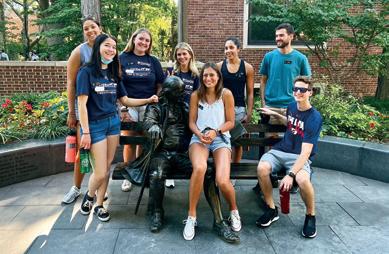
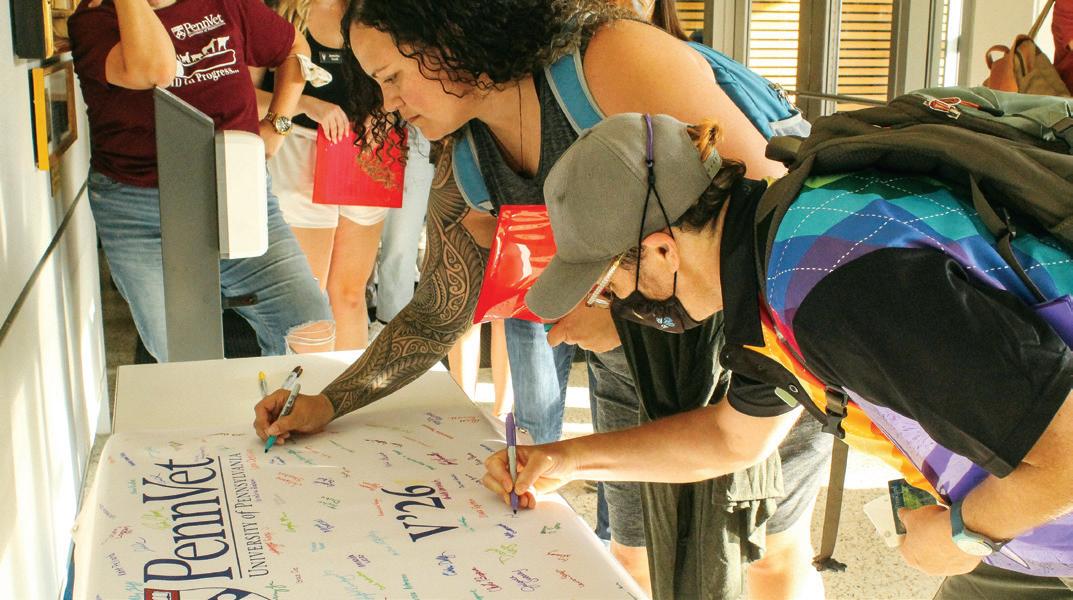
A MESSAGE FROM LINDSAY SHREIBER, V’91
Vice President of Alumni Engagement and Giving Penn Vet Alumni Board
Autumn is a season of transition, during which we harvest what we’ve cultivated and grown and prepare for the future. Similarly, our paths as veterinarians and institutions represent cultivation ( education ), growth (teaching, learning, and practice ), and stewardship ( preparing for the future of our profession ).
My journey began more than 31 years ago as a new Penn Vet graduate discovering that practicing veterinary medicine was like learning to read: one must recognize the letters C-A-T,… sound them out to realize that they spell cat, which codes in our brain to our furry, whiskery, meowing companions. Similarly, we learn that fever, lameness, and lethargy in a dog may mean Lyme disease. We then learn how to confirm and treat it, what drug dosages to use, and how to validate our diagnosis and treatment plan. My vocabulary may be greater today, but I am still cultivating that learning process.

Then 26 years ago I started a new practice. I bought a building, purchased and installed medical, diagnostic, and surgical equipment, and worked on and in my practice. I cultivated and grew the practice through education and learning from my community.
My involvement with the Penn Vet Alumni Board began first with my participation in the Opportunity Scholarship as a donor. For me, this was an ideal way to contribute to Penn Vet as an institution and to provide direct mentorship to veterinary students.
A mentor of mine once told me: “Paybacks will be tough .” Paying it forward has been a pleasure. I have had the privilege of developing relationships with five students who have received Opportunity Scholarships and look forward to more in the future. Currently, outside of any formal Penn Vet program, I am fortunate to have had four current vet students associated with my practice — all have worked for and/or with my practice in some capacity, and I enjoy keeping in touch with them and watching their careers evolve.
The world has changed in the last few years. We are all aware of and affected by factors which require far greater discussion than this short message. As veterinarians, we are part of an honorable, medical, and scientific profession that is poised to help protect our planet.
As is always true, change inspires growth. Penn Vet students are ready to cultivate, learn, and grow. They are intelligent, diligent, tough, fun, poised for the future, and well deserving of our stewardship. I invite our alumni to contact the Alumni Office, Development Office, or me directly at Lss@Valleyveterinaryhospital.net to discover ways in which we can support Penn Vet and its students.
Dr. Lindsay Shreiber
1970s
Robert Orsher, V’79, DACVS , the former owner, medical director, and chief of surgery at BluePearl Veterinary Partners in Levittown delivered the 2022 commencement address at Manor College in Jenkintown, Pennsylvania.
1980s
David Serra, V’83 , retired from clinical practice as owner and internal medicine specialist at Wood River Animal Hospital, Inc., which he founded in 1992. He is working part-time as attending veterinarian at the University of Rhode Island.
Crosby Roper, V’85 , sold his practice in San Diego, where he worked for thirty years, and moved to Bristol, Maine, with his wife Claire, three dogs, and cat. He is working part-time and looks forward to making improvements on their new home, which requires a large amount of landscaping and TLC.
Sallie Welte, V’88 , received this year’s National Wildlife Rehabilitators Association Lifetime Achievement Award. This honor is bestowed on those who have made significant contributions to the wildlife
CLASS NOTES
rehabilitation field. During her 25-year teaching career at Penn Vet, she introduced thousands of students to the field of wildlife medicine. She was the clinic director and senior veterinarian at Tri-State Bird Rescue.
2000s
Amber Itle, V’03 , was named the state veterinarian with the Washington State Department of Agriculture. She first joined the department in 2013 as a field veterinarian and was appointed assistant state veterinarian in 2017.
2010s
Lauren Glowzenski, V’16 , received the Young Swine Veterinarian of the Year Award. The award is given annually to an American Association of Swine Veterinarians member five years or less post veterinary graduation who has demonstrated the ideals of exemplary service and proficiency early in their career. Glowzenski is the manager of veterinarian services at TriOak Foods in Oakville, Iowa, where she is responsible for the overall health and well-being of the company’s pigs.
REMEMBRANCES
1950s
The Wilkins Family Endow Scholarship in Memory of John Langley Wilkins, V’52
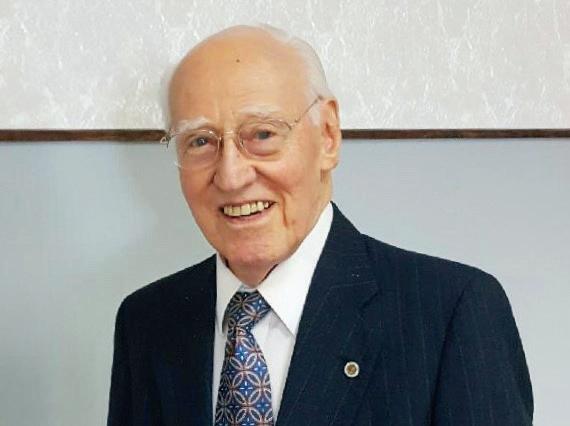
A scholarship fund has been established at Penn Vet in memory of John Langley Wilkins, V’52, who passed away on November 18, 2018. Wilkins served in the Marine Corps during World War II. After graduating from Penn, he established the Circle Veterinary Clinic in Wilmington, Delaware. He earned his Master of Divinity in 1970 from Reformed Episcopal Seminary in Blue Bell, Pennsylvania. The scholarship will support students from Delaware with a preference given to students who graduated from the University of Delaware.
Stuart Fox, V’53 , passed away on January 31, 2022, in St. Croix, U.S. Virgin Islands, his beloved adopted home. He began his practice at the Rau Animal Hospital in Glenside, Pennsylvania, and eventually acquired the practice. In the mid-1970s he purchased Holiday House Pet Resort in Doylestown.
Donald Chesen, V’54 , passed away on December 3, 2021. He practiced small animal veterinary medicine for 60 years in New Jersey and Pennsylvania, and finished his career in Florida. He was beloved by his clients for taking the time to educate them about their animals’ health and for being soft spoken with a wonderful sense of humor. He truly loved all animals, volunteered his time, and gave to many charities on their behalf. One of his favorite sayings was, “God looks favorably upon those who are kind to animals.”
George Vernimb, V’56 , passed away on April 19, 2022. He joined the Randolph Animal Hospital in Vermont, where he became a partner in 1958, alongside his dear friend, Robert Arms. The rigorous nature of large-animal veterinary medicine and the chronically low income led him to leave the practice in late 1964. He moved to Norwich, New York, where he
joined the Animal Health Division of Norwich Pharmacal Company (NPC) in poultry and large-animal research and as manager of the NPC Animal Research Center.
After eight years he relocated to Scotch Plains, New Jersey, where he joined the Schering-Plough Corporation in 1972. That move led to a rewarding 25-year tenure with Schering Animal Health. Recognized for his inquisitive, caring, and friendly personality, Vernimb developed long-standing relationships. He retired in 1996.
Blair R. English, V’57 , passed away on June 19, 2022. He operated his own practice in Dover, Pennsylvania, for 40 years.
Edward Lemos, V’57 , passed away on March 16, 2022. He was a resident of Barrington, New Hampshire.
Arthur Paul Mayer, V’57 , passed away on May 12, 2022, after a brief illness. Upon graduation, he worked at Brandywine Raceway and served as the chief veterinarian at Delaware Park. He also was a consultant veterinary pathologist in the Haskell Laboratory at Dupont. He owned and operated Mayerdale Animal Hospital on Elkton Road in Newark, Delaware, where he first specialized in farm animals and racehorses and then, as the city
changed, small animals, treating generations of family pets until his retirement in 2016, at age 85. In 1993, he was recognized as Delaware’s Veterinarian of the Year.
Robert Wilson, V’57 , passed away on March 19, 2022. After graduation he was commissioned as a captain in the U.S. Air Force and stationed at Paine Field. While there, he served as the base veterinarian, chief food inspector, mountain rescue team leader, and traffic safety officer. In 1959, he was honorably discharged from the Air Force and began practicing veterinary medicine in Lynnwood, Washington. He served as president of the Veterinary Medical Associations of Snohomish County, Seattle, and the State of Washington. He received the John L. Fluke Award for his contribution to the Snohomish County business community. He owned and operated the Lynnwood Veterinary Hospital for 35 years.
1960s
Carol Fegley, V’60 , passed away on May 13, 2022. She was the wife of the late Harry C. Fegley, VMD, for 59 years. She was the second female graduate of the University of Pennsylvania Veterinary Medical School in 1957. She met Harry at a veterinary clinic in Fanwood, New Jersey, and together they built a veterinary practice in Hatboro, Pennsylvania, where they cared for clients’ beloved pets for over 40 years. Their legacy, the County Line Veterinary Hospital, continues to provide care for pets of all kinds.
E.B. Thorndike, V’64 , passed away on January 2, 2022. After an internship at Henry Bergh Memorial Hospital in New York City, he was hired as an associate and soon became a partner at Miller and Clark Animal Hospital in Mamaroneck, New York. He served on the board of the Westchester Shore Humane Society and was an active member of the Westchester Rockland Veterinary Association. In 1989, he was a driving force in establishing the Veterinary Emergency Group in White Plains. He was appointed to the New York State Education Department Board for Veterinary Medicine, served two five-year terms, and was elected president.
Paul Langner, V’66 , passed away on March 29, 2022, in Alamogordo, New Mexico. After graduation, he secured an internship at Penn’s New Bolton Center large animal hospital. Shortly after graduating, he was drafted into the Army and spent a year in Vietnam, where he and his troop put up the first veterinary clinic on the DMZ at Quang Tri combat base. Upon his return to civilian life, Langner went on to practice small animal medicine for most of his career. He also spent time in a private racehorse practice. He received an MS from Drexel University and pursued a fellowship in lab animal medicine at the Hershey Medical Center, leading to appointments at the University of Pennsylvania, the University of Illinois, and Holloman Air Force Base, which ultimately brought him to Alamogordo.
Philip Cook, V’67 , passed away on February 18, 2022. He was a graduate of Penn State University with a Bachelor of Science and a Master of Science. He was a Vo-Ag teacher for 12 years at Green Park Union High School in Pennsylvania and enrolled in veterinary school at age 33. He was beloved by many as “Doc” who took care of their pets and large animals.
Penn Vet graduates achieve remarkable successes every day. Whether you have a new address or are moving forward in your career, announcing an addition to the family, or honoring the life of a fellow alumnus, Alumni Relations wants to hear about it.
Please share your news! Visit the Alumni page of the Penn Vet website, email your news to the alumni office at grovessh@vet. upenn.edu, or write to us at Alumni Relations, Penn Vet Alumni Office, 3800 Spruce Street, Suite 151E, Philadelphia, PA 19104. We may edit submissions due to space considerations.
IN MEMORIAM DON ABT, V’61
BY GREGORY A. LEWBART, V’88 Professor of Aquatic, Wildlife, and Zoological Medicine, NC State Veterinary Medicine for the International Association for Aquatic Animal Medicine (IAAAM)
We share the heartbreaking news that Dr. Don Abt passed away on July 27, 2022. Many IAAAM members owe much, if not their entire careers, to Don, and few would argue about his deep and lasting impact on aquatic animal medicine.
A native New Englander, Don obtained a BS in zoology from the University of Massachusetts and was a 1961 graduate of the University of Pennsylvania School of Veterinary Medicine. For three years, he taught anatomy at Penn and worked on bovine lymphosarcoma. After doing graduate work in biostatistics and epidemiology, Don taught both subjects to Penn Vet students before becoming the associate dean for academic affairs. In this role, he was instrumental in implementing the novel core-elective curriculum. For the next 19 years, Don continued to teach and serve as associate dean.
In the fall of 1989, Don and his loving wife Sandy moved to Falmouth, Massachusetts (his adopted hometown), and he became director of the University of Pennsylvania’s Laboratory of Aquatic Animal Medicine and Pathology at the Marine Biological Laboratory in Woods Hole. Don served in this role until 1999. Certainly, all of this would make for a full academic career and then some. But Don had another job, and for many reading this, a most important one. Don was the founding director of the AQUAVET® program that began in 1976 and has helped train many of the current and future leaders in our field. Don held
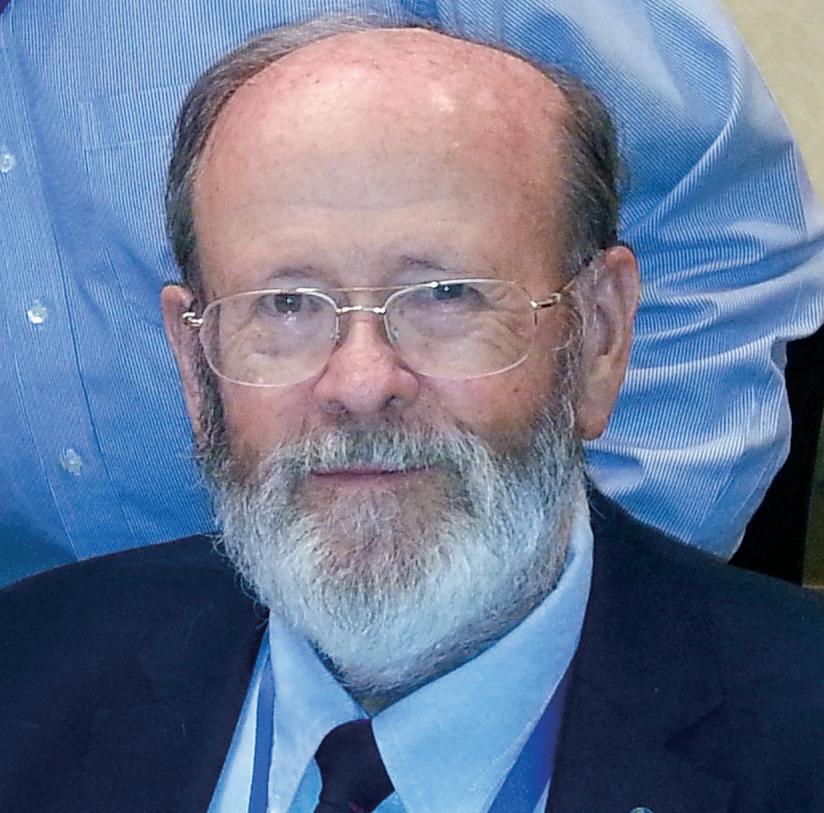
the role of AQUAVET® director for 25 years and officially retired in 2001 as professor emeritus of aquatic animal medicine and pathology. But retirement did not slow Don down. He continued teaching in the AQUAVET® program and having a positive and lasting impact on the hundreds of students that were lucky enough to learn from and spend time with him (especially at the famous end-of-course clambakes he hosted every year!).
Don was also an IAAAM President, lifetime IAAAM member, and the first recipient of the William Medway Award for Excellence in Teaching. He was much more than a veterinarian, teacher, mentor, administrator, and amazing father. For almost five decades he was a member of the Coast Guard Auxiliary (Falmouth) Flotilla 11-02, serving in numerous capacities including Flotilla Commander and he was awarded with countless accolades. Don was active in his church, the First Congregational Church of Falmouth, where he diligently served as parliamentarian. He leaves a strong and lasting legacy; he was so proud of everyone in our field; and particularly gratified with how far aquatic animal medicine has come.
Don is survived by Sandy; his son, David, and David's wife, Debby; and his daughter, Debbie (also a veterinarian), and Debbie's husband, Bill.
Rest in Peace, Dr. Abt.
Charles Haskins, Jr., V’67, passed away on January 23, 2022. He practiced veterinary medicine in Annville, Pennsylvania, for a short time before opening his own practice on South Whitford Road in Exton. Affectionately known as Doc, he was a storyteller whose tales stemmed from a brief stint as a long-haul tractor trailer driver when he was only 18 years old and from his time as a large animal veterinarian in Annville, where he said he experienced similar misadventures as author James Herriot.
James Ramage, V’67 , passed away on May 25, 2022. After graduation, he interned at Berg Memorial ASPCA Hospital in New York City. After working for other veterinarians for a few years, he opened Valley Veterinary Hospital in Lower Burrell, Pennsylvania. He was a highly skilled and compassionate veterinarian for 38 years.
Sandra Haggett, V’68 , passed away on May 10, 2022. After graduating from the University of Pennsylvania Veterinary School, she moved to Bar Harbor, Maine. There she and her husband, Burt, established the Acadia Veterinary Hospital, where they both worked for 23 years.
William G. Komazec, V’68 , passed away on February 3, 2022. He was a veterinarian at Monmouth Animal Hospital in Little Silver, New Jersey, and later, after a move with his family to Tinton Falls in May 1975, became
the co-owner/founder of the Colonial Veterinary Clinic in Colts Neck, with his longtime partner and friend, Roger Poole, VMD.
Barbara Penney, V’68, passed away after an extended illness on December 25, 2021. She practiced as a licensed veterinarian for 50 years. She was involved in teaching programs at Penn Vet as well as the Virginia-Maryland Regional College of Veterinary Medicine at the University of Maryland. She was also involved in researching numerous areas of veterinary/ human medicine. She worked in the animal research division of the National Institutes of Health for a number of years.
Thomas Kowalchick, V’69, passed away on February 16, 2022. He faithfully served the United States in the Navy Reserve, from which he was honorably discharged as a hospital corpsman, and, after graduation from veterinary school, in the Army Veterinary Corps, for which he was stationed with his family in Fort Lewis, Washington. After distinguished service, he was honorably discharged with the rank of captain. Following veterinary work in Philadelphia and Maryland, he returned to Berwick, Pennsylvania, to fulfill his dream of starting his own animal hospital. In 1974, he worked together with his father, brother, and friends to build his hospital from the ground up. Kowalchick and his wife launched and established his veterinary practice, North Berwick Animal Hospital.
1970s
Irving A. Salkovitz, V’75 , passed away on May 28, 2022, after a long battle with cancer. After working at a practice in Monson, Massachusetts, for two years, he and his family settled in Lee, New Hampshire, where he started his own mixed animal practice, Wadleigh Falls Veterinary Clinic. The sale of the clinic in 2006 led him to work in Windham and later at Cocheco Veterinary Hospital in Farmington.
Steven Levy, V’77 , passed away on May 27, 2022. After graduation, he worked at Guilford Veterinary Hospital in Guilford, Connecticut. He subsequently bought Durham Veterinary Hospital, a small animal practice in Durham, Connecticut, focusing on tick-borne diseases in dogs. In 1986, he diagnosed the first case of canine Lyme carditis, which was published two years later in the Journal of Veterinary Internal Medicine . He also served as the veterinarian for the Connecticut State Police’s canine unit. He retired from active practice in 2008. Levy later worked for the Humane Society of Greater Kansas City and the Connecticut Humane Society. In 1993, he received the American Animal Hospital Association’s Outstanding Practitioner Award for the Northeast Region. In 1994, the AVMA honored him with the Practitioner Research Award.
All events are virtual, unless otherwise noted. For more information and registration for the First Tuesday Lecture Series, please visit www.vet.upenn.edu/firsttuesdaylectures.
DECEMBER
6
FIRST TUESDAY LECTURE
MARCH 5
OCTOBER 22
PARENTS & PARTNERS DAY FOR V’26 28 FACULTY RESEARCH RETREAT
NOVEMBER 1
FIRST TUESDAY LECTURE
SAVMA AUCTION 11 WHITE COAT CEREMONY 13
ALUMNI RECEPTION DURING ACVP Boston, MA 20
ALUMNI RECEPTION DURING AAEP San Antonio, TX
WWW.VET.UPENN.EDU
JANUARY 7-14
PENNSYLVANIA FARM SHOW 2300 N. Cameron Street Harrisburg, PA 14
ALUMNI RECEPTION DURING VMX Orlando, FL FEBRUARY 7
FIRST TUESDAY LECTURE 20
ALUMNI RECEPTION DURING VMX
Las Vegas, NV
ALUMNI RECEPTION DURING AASV Denver, CO 7 FIRST TUESDAY LECTURE APRIL 4 FIRST TUESDAY LECTURE MAY 9 FIRST TUESDAY LECTURE
12-13
ALUMNI AND REUNION WEEKEND 15 V’23 COMMENCEMENT Philadelphia Campus
WWW.VET.UPENN.EDU/AG@PENNVET @PENNVETAG @PENNVETAG AGRICULTURE @ PENN VET
Last Word
Dropped then Loved
Earlier this year, Assistant Veterinary Nursing Supervisor Jeni Dohner sent an email to all Ryan Hospital employees: “Family dropped kittens in our waiting room.... If you’re interested, please stop by Emergency Services. Otherwise, they’ll go to Philadelphia Animal Care and Control.” By the end of the day, all the kittens had a loving home with a Penn Vet person. We're so thankful for our caring and attentive Penn Vet family — and we hear the kittens are too!
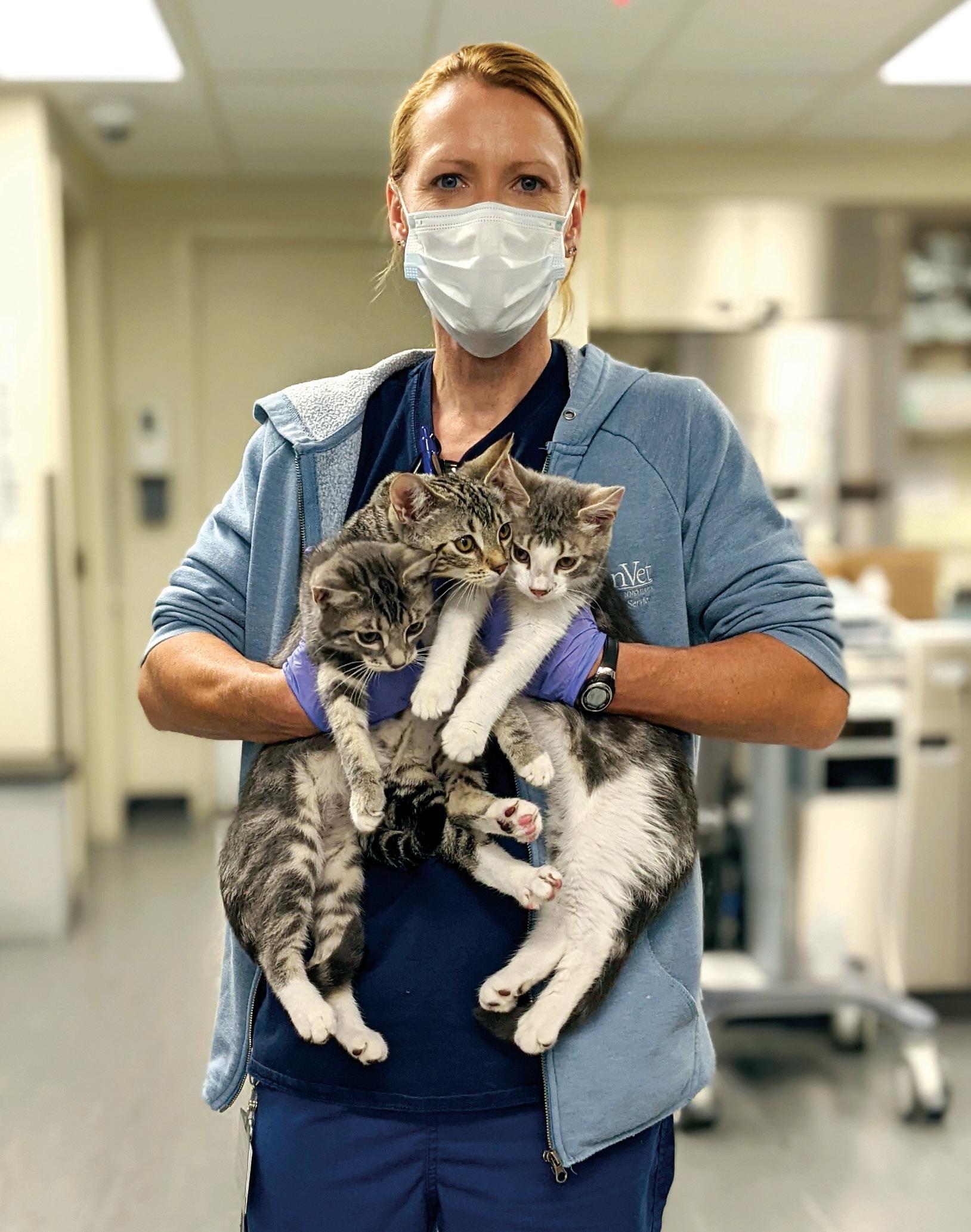
3800 Spruce Street, Suite 151E
Philadelphia, PA 19104-6044
United Way of Greater Phila. & So. NJ: #50178
Our mission is to train the next generation of leaders to advance healthcare outcomes and access, ensure global health, bolster sustainable agriculture, create and support interdisciplinary career paths, and foster diversity, equity, and inclusion in the profession.










































